Forums
- Forums
- Axis And Allies Forum
- General Discussion
- Aviation News
Aviation News
Post a reply
- Go to Previous topic
- Go to Next topic
- Go to Welcome
- Go to Introduce Yourself
- Go to General Discussion
- Go to Screenshots, Images and Videos
- Go to Off topic
- Go to Works in Progress
- Go to Skinning Tips / Tutorials
- Go to Skin Requests
- Go to IJAAF Library
- Go to Luftwaffe Library
- Go to RAF Library
- Go to USAAF / USN Library
- Go to Misc Library
- Go to The Ops Room
- Go to Made in Germany
- Go to Campaigns and Missions
- Go to Works in Progress
- Go to Juri's Air-Raid Shelter
- Go to Campaigns and Missions
- Go to Works in Progress
- Go to Skinpacks
- Go to External Projects Discussion
- Go to Books & Resources
-
 Main AdminAirmen assigned to the United States Air Force Air Demonstration Squadron "Thunderbirds" conduct the first official launch of the Thunderbird Diamond formation on Jan. 09, 2019, at Nellis Air Force Base, NV. This training flight represents a key milestone for the 2019 Thunderbird team as they prepare to showcase the pride, precision and professionalism of the U.S. Air Force during the upcoming show season. (U.S. Air Force Photo/SrA Cory W. Bush)
Main AdminAirmen assigned to the United States Air Force Air Demonstration Squadron "Thunderbirds" conduct the first official launch of the Thunderbird Diamond formation on Jan. 09, 2019, at Nellis Air Force Base, NV. This training flight represents a key milestone for the 2019 Thunderbird team as they prepare to showcase the pride, precision and professionalism of the U.S. Air Force during the upcoming show season. (U.S. Air Force Photo/SrA Cory W. Bush)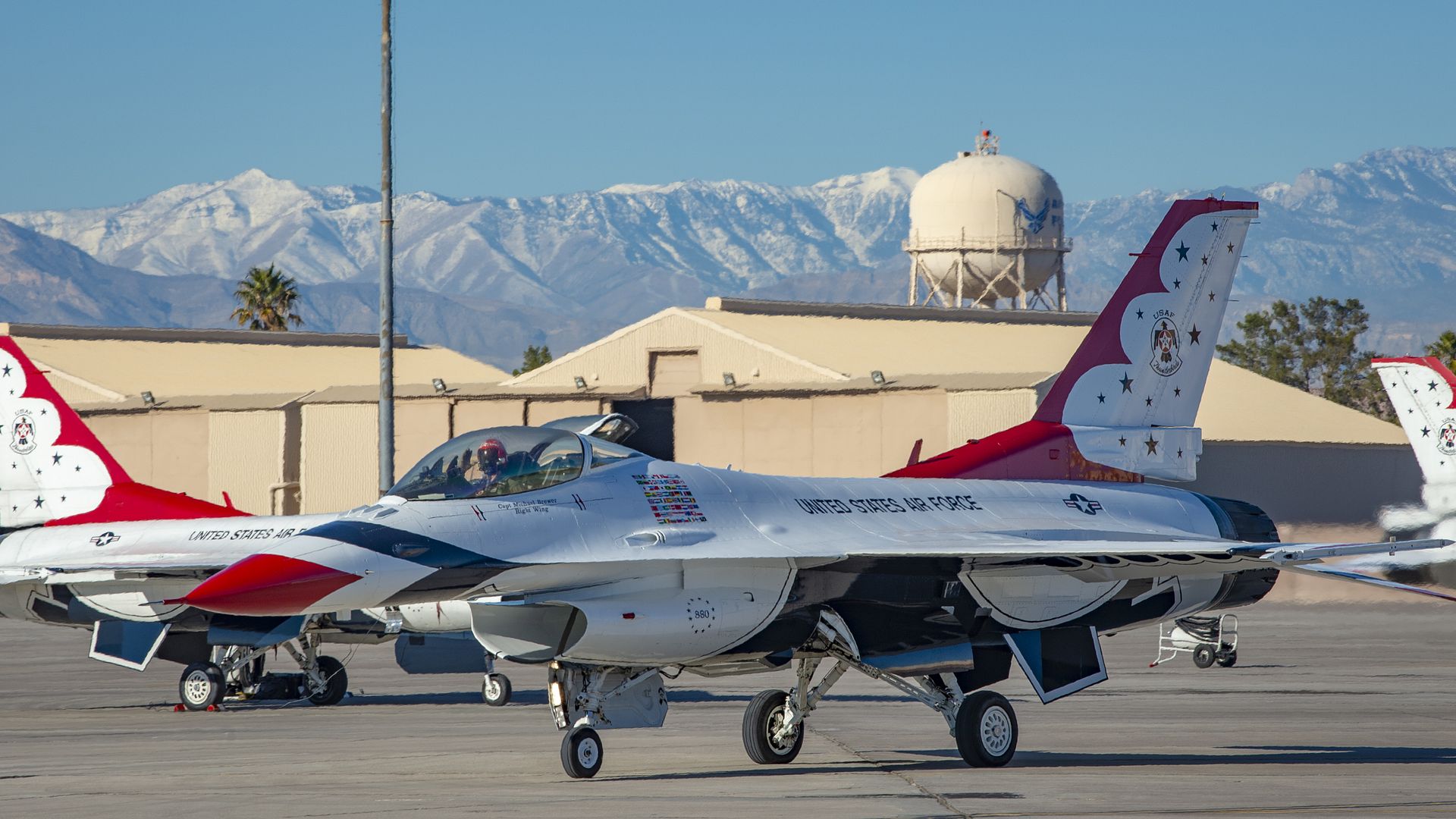
A U.S. Air Force B-2 Spirit bomber deployed from Whiteman Air Force Base, Missouri, prepares to land at Joint Base Pearl Harbor-Hickam, Hawaii, Jan. 10, 2019. Three B-2 bombers and more than 200 Airmen deployed here in support of U.S. Strategic Command?s (USSTRATCOM) bomber task force mission. Bomber aircraft regularly rotate through the Indo-Pacific region to integrate capabilities with key regional partners and maintain a high state of aircrew proficiency. (U.S. Air Force photo by Senior Airman Thomas Barley)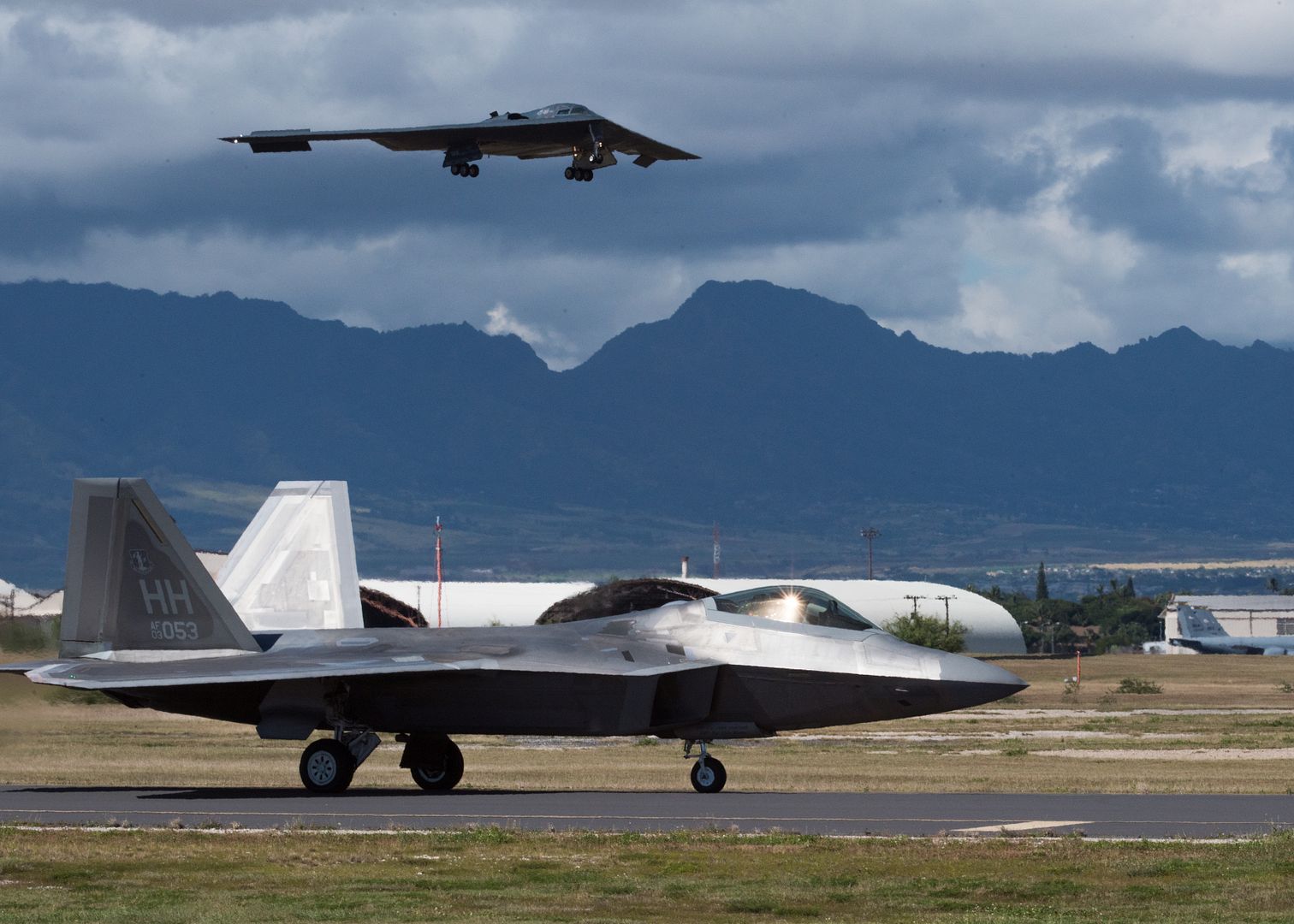
A B-2 Spirit bomber deployed from Whiteman Air Force Base, Missouri, is parked on the flightline at Joint Base Pearl Harbor-Hickam, Hawaii, Jan. 10, 2019. Three B-2 bombers and more than 200 Airmen deployed here in support of U.S. Strategic Command?s (USSTRATCOM) bomber task force mission. Bomber aircraft regularly rotate through the Indo-Pacific region to integrate capabilities with key regional partners and maintain a high state of aircrew proficiency. (U.S. Air Force photo by 2nd Lt. Allen Palmer)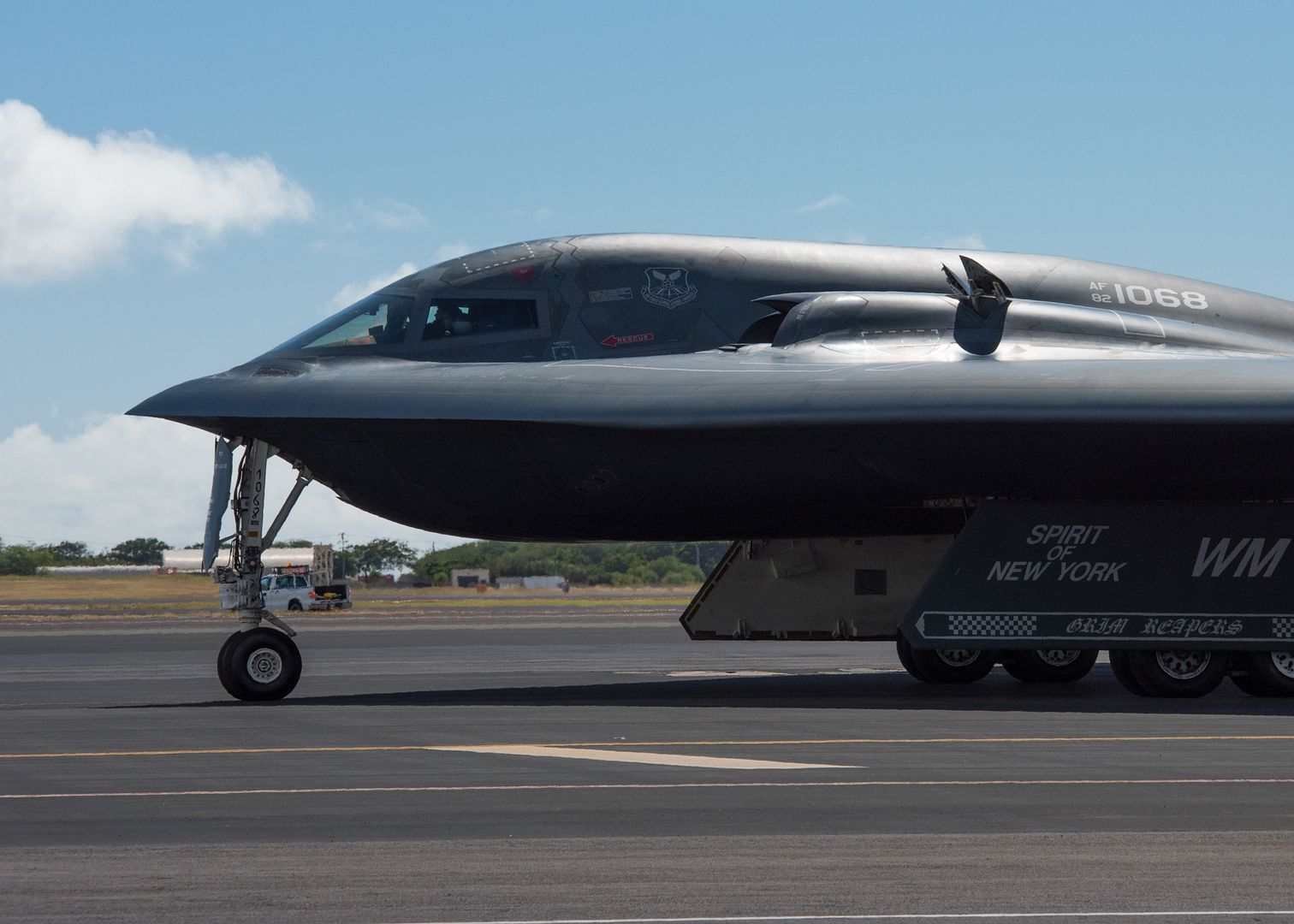
SOUDA BAY, Greece (Jan. 10, 2019) An AV-8B Harrier sits chained to the flight deck of the Wasp-class amphibious assault ship USS Kearsarge (LHD-3) as it departs Souda Bay, Greece, Jan. 10, 2019. Kearsarge is on a scheduled deployment as part of the Kearsarge Amphibious Ready Group in support of maritime security operations, crisis response and theater security cooperation, while also providing a forward naval presence. (U.S. Navy photo by Mass Communication Specialist 1st Class Mike DiMestico/Released)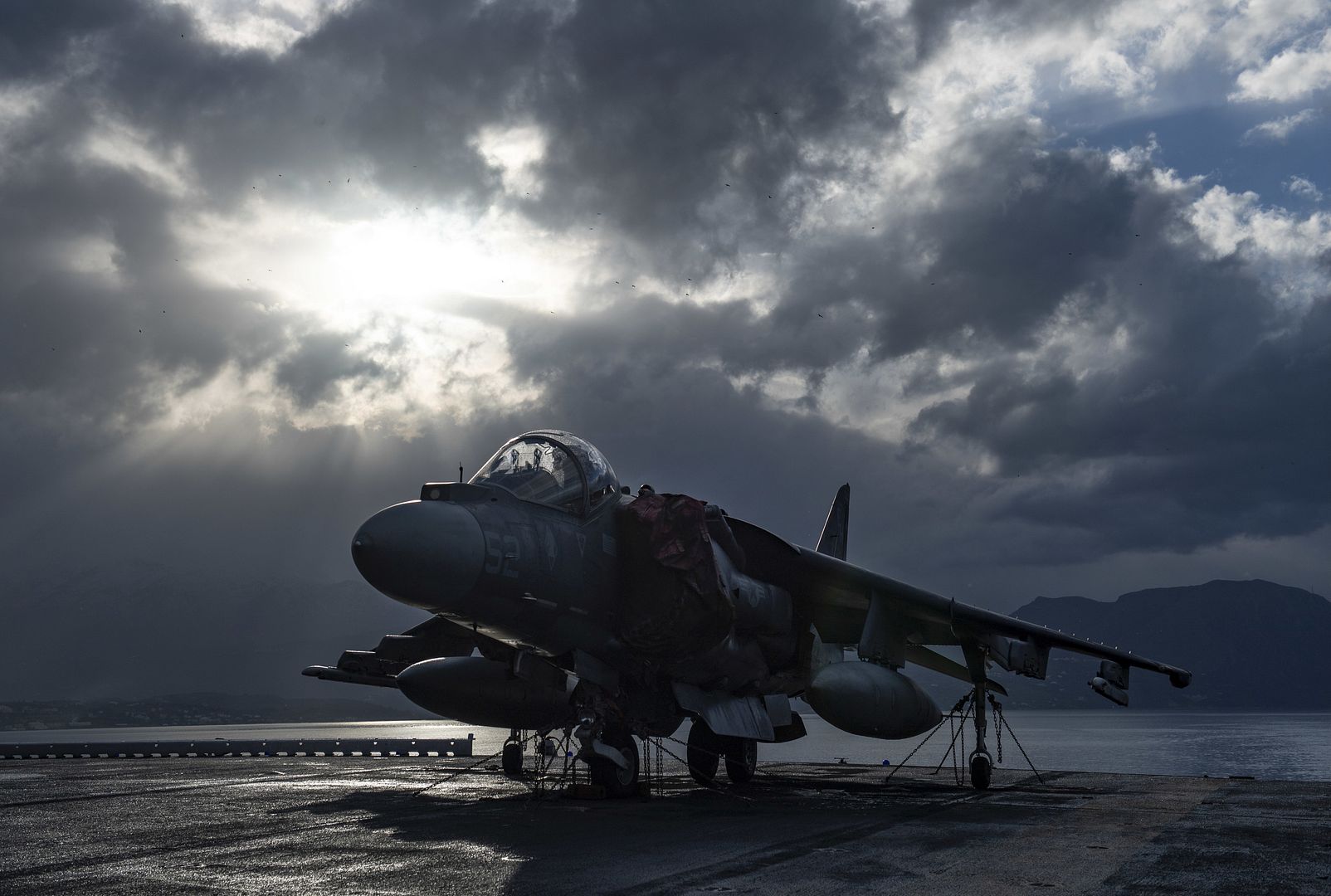
An EA-18G Growler assigned to Electronic Attack Squadron (VAQ) 133 launches from the flight deck of the aircraft carrier USS John C. Stennis (CVN 74) in the Arabian Gulf, Jan. 10, 2019. The John C. Stennis Carrier Strike Group is deployed to the U.S. 5th Fleet area of operations in support of naval operations to ensure maritime stability and security in the Central Region, connecting the Mediterranean and the Pacific through the western Indian Ocean and three strategic choke points. U.S. Navy photo by Mass Communication Specialist 3rd Class Grant G. Grady (Released)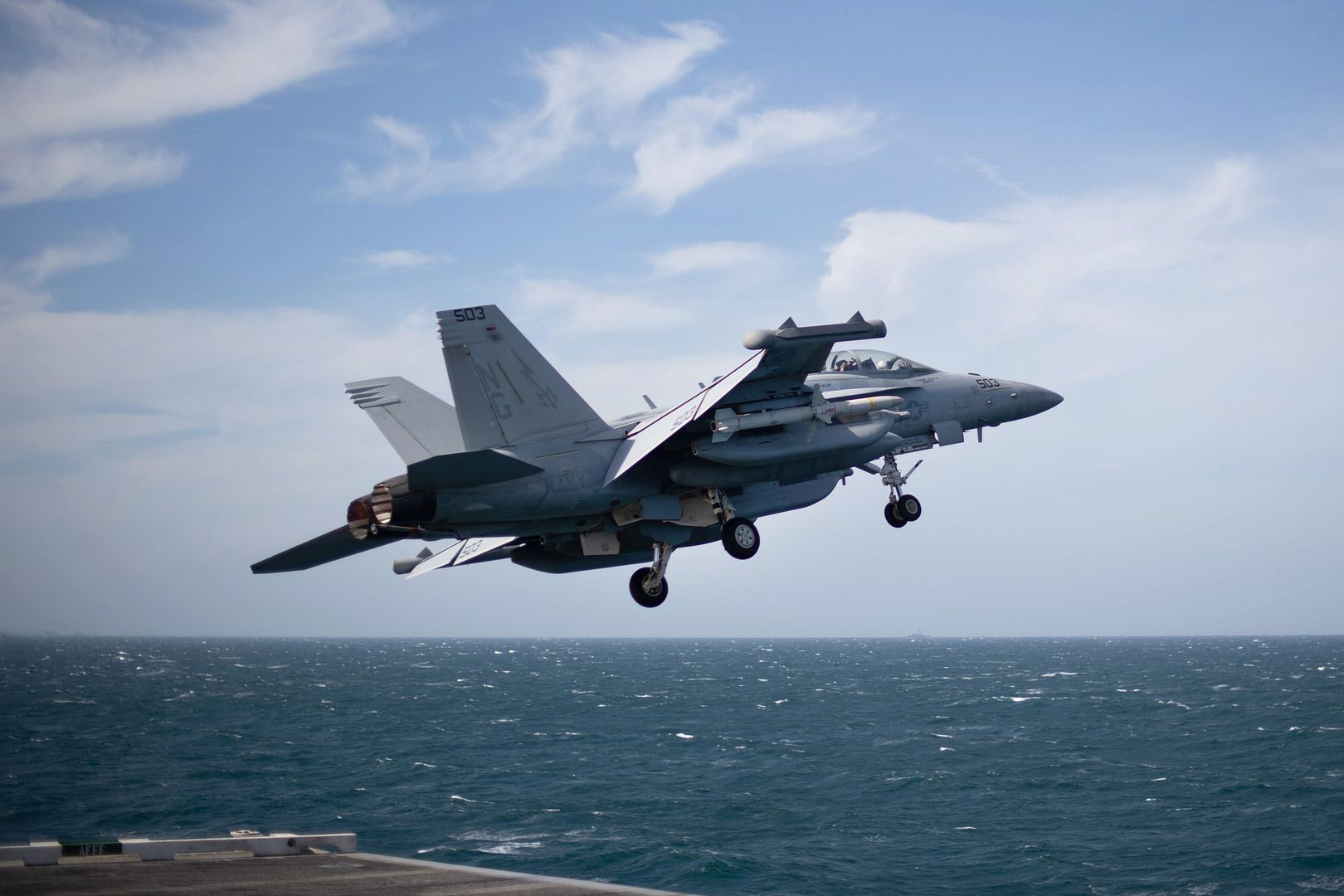
-
 Main AdminAn F-15C Eagle takes off from Kadena Air Base, Japan, Jan. 9, 2019. Both the 44th and 67th Fighter Squadrons at Kadena AB play a unique role in securing peace and stability in a free and open Indo-Pacific with their F-15C/D capabilities. (U.S. Air Force photo's by Airman 1st Class Matthew Seefeldt)
Main AdminAn F-15C Eagle takes off from Kadena Air Base, Japan, Jan. 9, 2019. Both the 44th and 67th Fighter Squadrons at Kadena AB play a unique role in securing peace and stability in a free and open Indo-Pacific with their F-15C/D capabilities. (U.S. Air Force photo's by Airman 1st Class Matthew Seefeldt)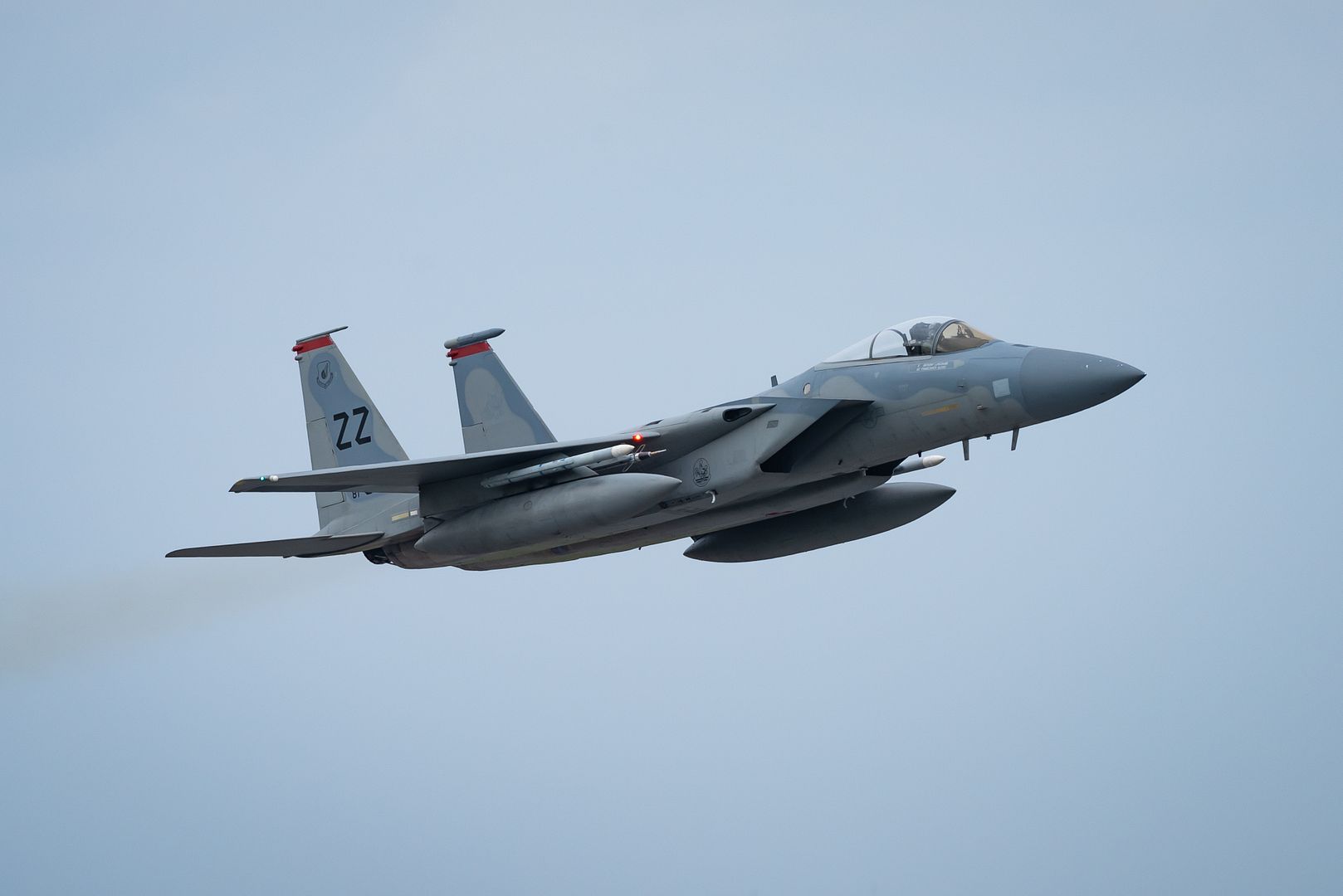
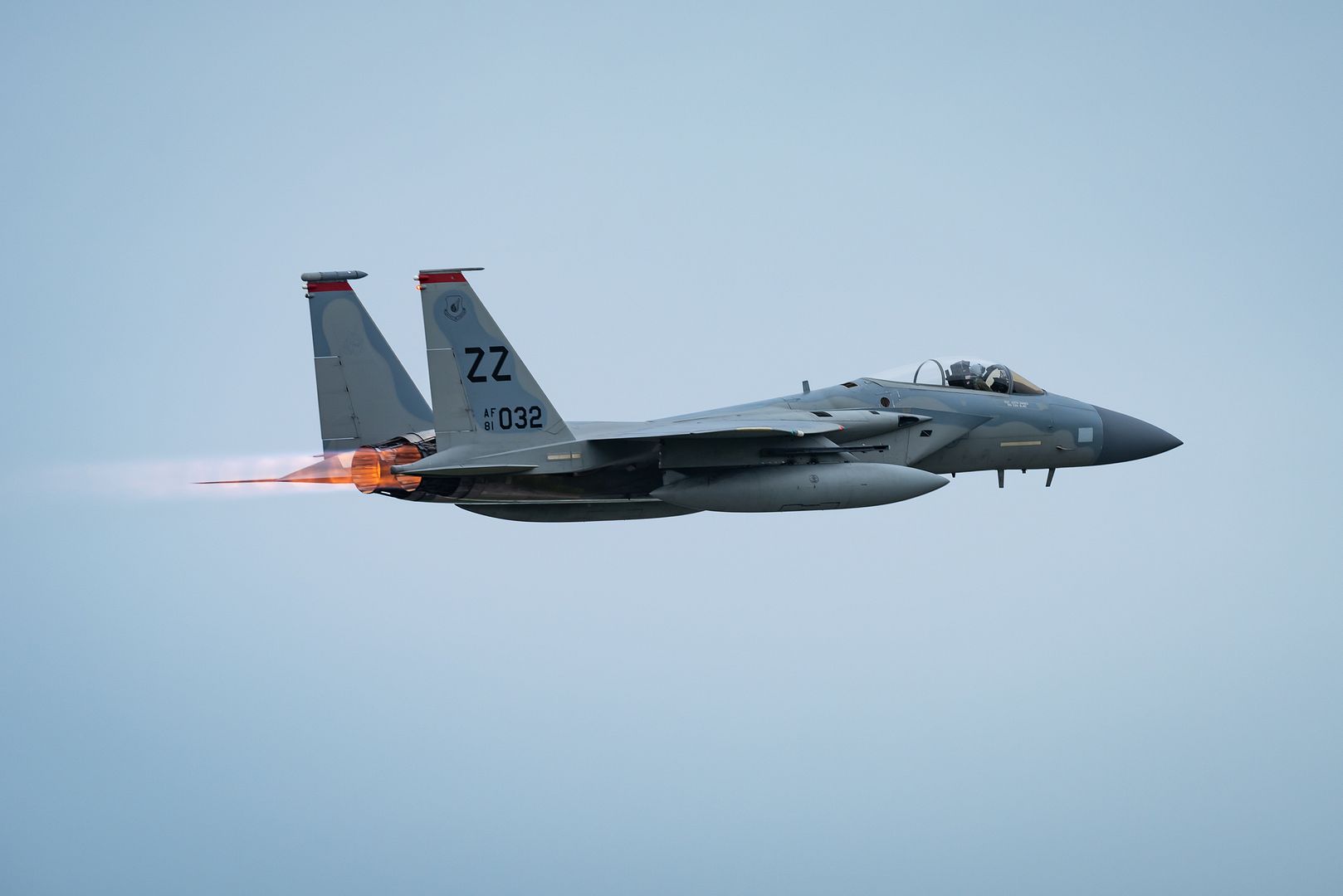
A snow-covered KC-135R Stratotanker sits on the flightline at Joint Base McGuire-Dix-Lakehurst, N.J., Jan. 13, 2019. Snow removal on the flightline and deicing of aircraft is very important for maintaining aircraft and mission readiness. (U.S. Air National Guard photo by Senior Julia Santiago)
EL CENTRO, Calif. (Jan. 12, 2019) Sailors assigned to the U.S. Navy flight demonstration squadron, the Blue Angels, take part in a foreign object debris (FOD) inspection along the flight line prior to flight operations. The Blue Angels are conducting winter training at Naval Air Facility El Centro, California, in preparation for the 2019 show season. The team is scheduled to conduct 61 flight demonstrations at 32 locations across the country to showcase the pride and professionalism of the U.S. Navy and Marine Corps to the American public. (U.S. Navy photo by Mass Communication Specialist 2nd Class Timothy Schumaker/Released)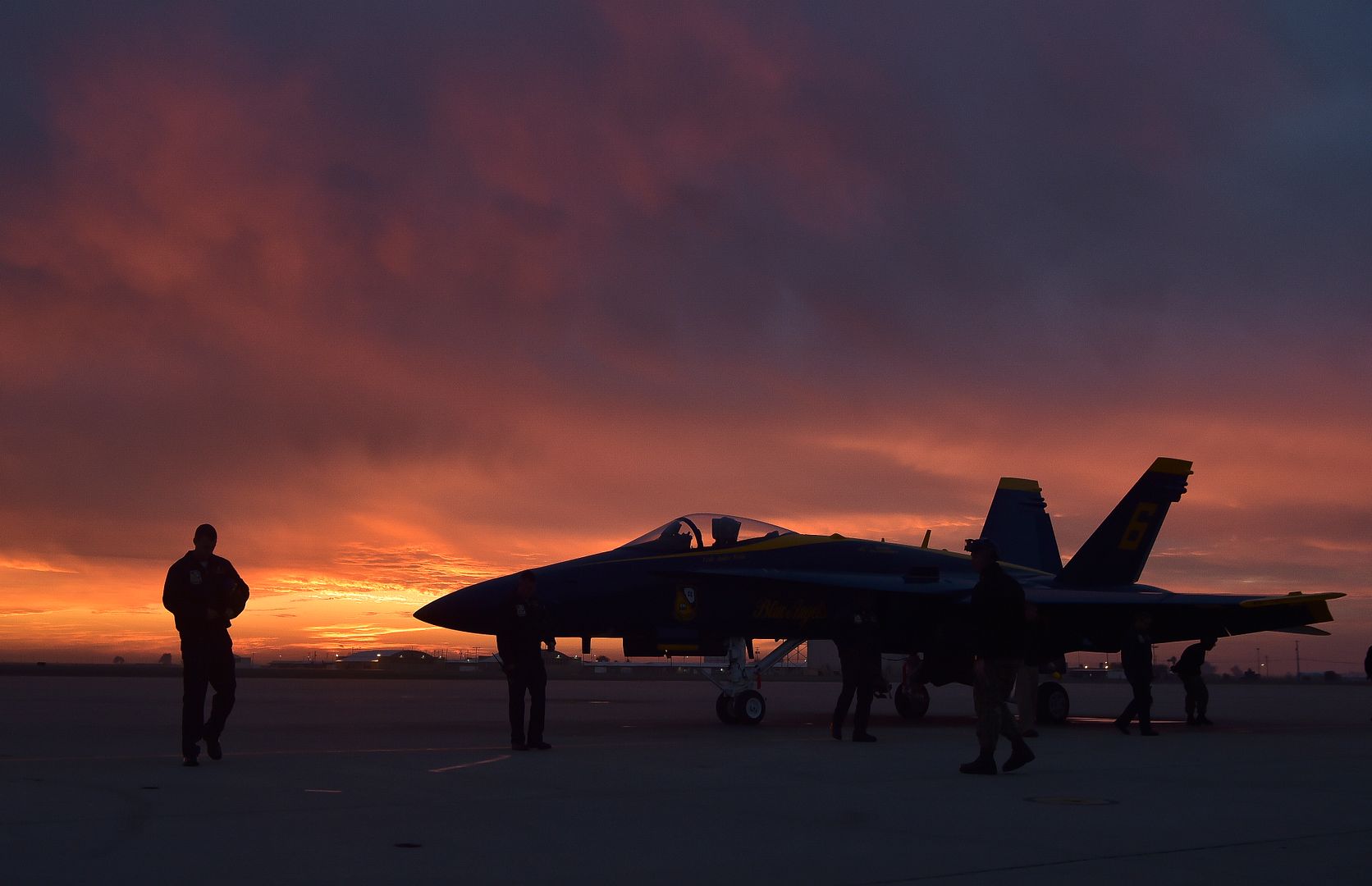
The newest addition to the Airbus family of commercial aircraft, the A220, has received 180-minute extended operations (ETOPS*) approval from the Canadian civil aviation authority, Transport Canada. This achievement paves the way for A220 customers to start new direct non-limiting routings over water, remote or underserved regions.
?This A220 ETOPS milestone adds to the numerous performance capabilities which the unbeatable A220 Family already offers,? said Florent Massou, Head of Airbus? A220 Programme.
?Being the only in-production aircraft in its class capable of performing both steep approach and long-range operations, the A220 is definitely unlocking new route opportunities for airlines,? added Rob Dewar, Head of Engineering and Customer Support, A220 Programme.
The A220 is the first commercial airliner to obtain domestic ETOPS certification from Transport Canada. This capability is available as an option for A220-100 and A220-300 operators, enabling them to fly for up to 180-minutes from the nearest diversion airport.
As the only aircraft purpose-built for the 100-150 seat market, the A220 delivers unbeatable fuel efficiency and true widebody comfort in a single-aisle aircraft. The aircraft brings together state-of-the-art aerodynamics, advanced materials and Pratt & Whitney?s latest-generation PW1500G geared turbofan engines to offer at least a 20% lower fuel burn per seat compared to previous generation aircraft. With a range of up to 3,200 nautical miles (5,920 km), the A220 offers the performance of larger single aisle aircraft.
With an order book of over 537 aircraft to date, the A220 has all the credentials to win the lion?s share of the 100- to 150-seat aircraft market.
M?rignac, France, 14 January 2019 ? Eric Trappier, Chairman and CEO of Dassault Aviation, received the F4-standard development contract for the Rafale combat aircraft today during the visit of the Dassault Aviation M?rignac plant by Florence Parly, French Minister of the Armed Forces.
The F4 standard is part of the ongoing process to continuously improve the Rafale in line with technological progress and operating experience feedback. The F4 standard marks a new step coming in the wake of the standards F1 (specific to the first aircraft of the French Navy), F2 (air-to-ground and air-to-air capabilities), F3 and F3R (extended versatility).
In our role as industrial architect, we will be responsible for implementing innovative connectivity solutions to optimize the effectiveness of our aircraft in networked combat (new satellite and intra-patrol links, communication server, software defined radio).
New functions will also be developed to improve the aircraft?s capabilities (upgrades to the radar sensors and front sector optronics, helmet-mounted display capabilities), and new weapons will be integrated (Mica NG air-to-air missile and 1,000-kg AASM Air-to-Ground Modular Weapon).
Lastly, with regard to availability, we are working under a through-life support contract which will become more ?top-down? under the authority of the aircraft manufacturer. F4 will include a new Prognosis and Diagnostic Aid System introducing predictive maintenance capabilities. Other maintenance optimization features are scheduled, particularly with solutions based on Big Data and artificial intelligence. Lastly, the Rafale will be equipped with a new engine control unit.
?The F4 standard guarantees that Rafale will remain at world-class level so that our combat air forces can carry out all their missions with optimum efficiency, whether in coalition operations or completely independently, as required by the French nuclear deterrent, stated Eric Trappier. This new standard also guarantees that Rafale will remain a credible reference on the export market. Lastly, it confirms the continuous improvement approach and helps develop the manufacturers? skills.?
Validation of the F4 standard is planned for 2024, with some functions becoming available as of 2022.
Dassault Aviation and the 500 French firms associated with the Rafale program thank the Ministry of the Armed Forces, the Defense procurement agency (DGA), the French Air Force and the French Navy for their confidence.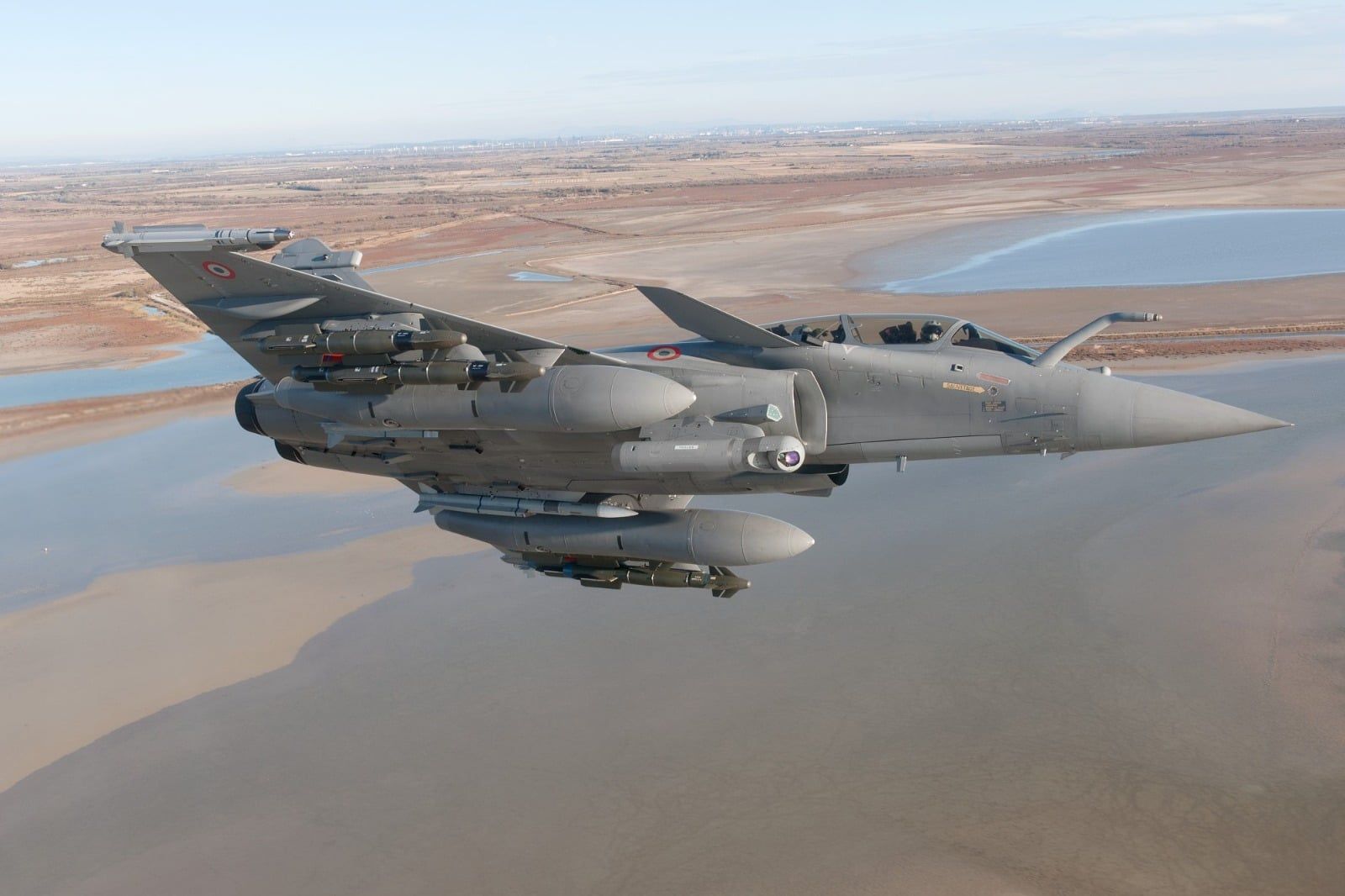
-
 Main AdminANDERSEN AIR FORCE BASE, Guam (Jan. 15, 2019) Airman Joseph Harding, assigned to the "Golden Swordsmen" of Patrol Squadron (VP) 47, guides a VP-47 P-8A Poseidon to park following flight operations. Exercise Sea Dragon is an annual, multilateral exercise that stresses coordinated anti-submarine warfare prosecution against both simulated and live targets. (U.S. Navy photo by Mass Communication Specialist 1st Class Kevin A. Flinn/Released)
Main AdminANDERSEN AIR FORCE BASE, Guam (Jan. 15, 2019) Airman Joseph Harding, assigned to the "Golden Swordsmen" of Patrol Squadron (VP) 47, guides a VP-47 P-8A Poseidon to park following flight operations. Exercise Sea Dragon is an annual, multilateral exercise that stresses coordinated anti-submarine warfare prosecution against both simulated and live targets. (U.S. Navy photo by Mass Communication Specialist 1st Class Kevin A. Flinn/Released)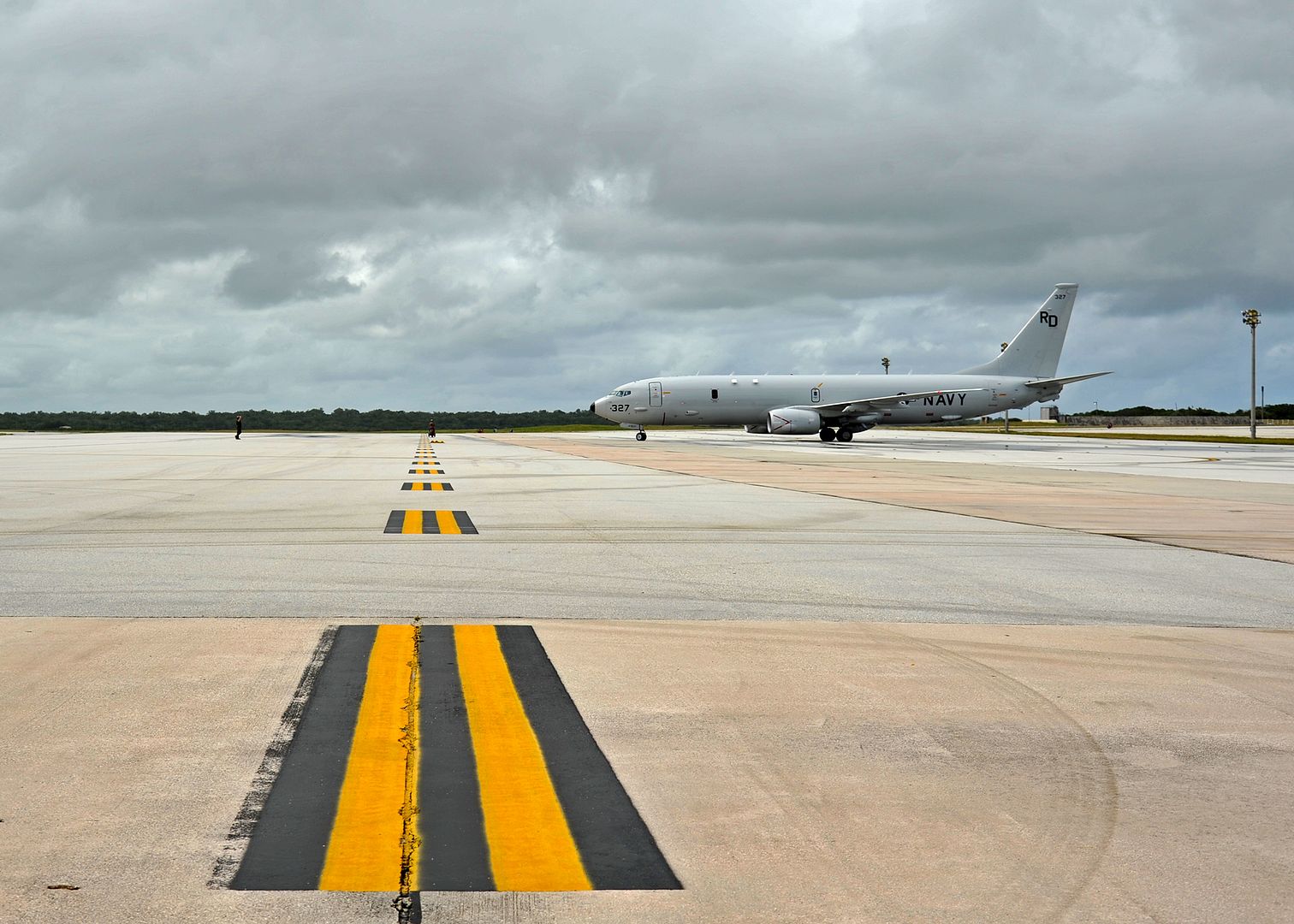
-
 Main AdminA B-52 Stratofortress bomber from the 5th Bomb Wing at Minot Air Force Base (AFB), North Dakota, sits on the flightline at Andersen AFB, Guam, Jan. 15, 2019. The bombers from Minot will assume responsibility for the U.S. Indo-Pacific Command?s Continuous Bomber Presence mission from the 96th Expeditionary Bomb Squadron from Barksdale AFB, Louisiana. (U.S. Air Force photo's by Senior Airman Christopher Quail)
Main AdminA B-52 Stratofortress bomber from the 5th Bomb Wing at Minot Air Force Base (AFB), North Dakota, sits on the flightline at Andersen AFB, Guam, Jan. 15, 2019. The bombers from Minot will assume responsibility for the U.S. Indo-Pacific Command?s Continuous Bomber Presence mission from the 96th Expeditionary Bomb Squadron from Barksdale AFB, Louisiana. (U.S. Air Force photo's by Senior Airman Christopher Quail)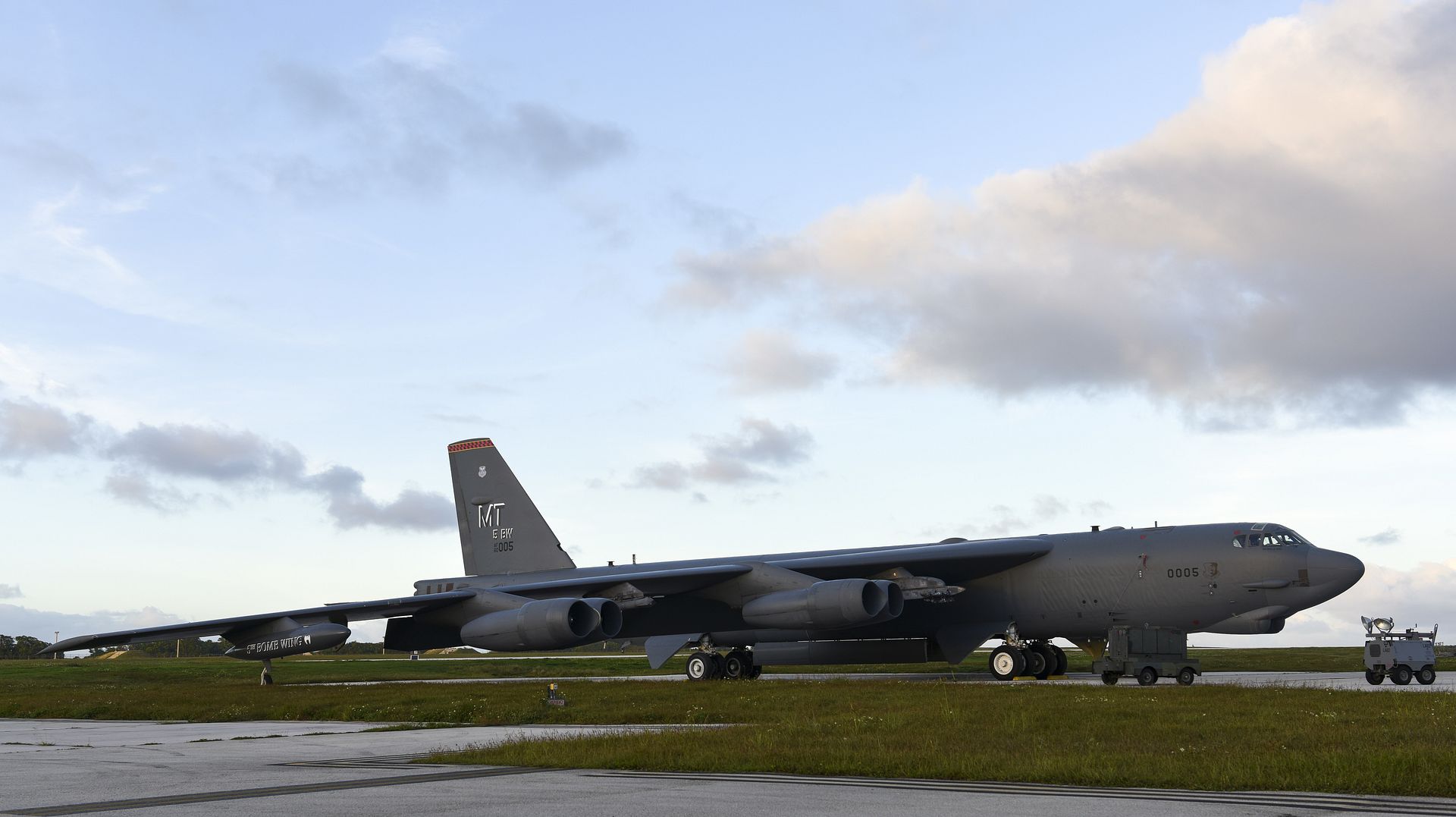
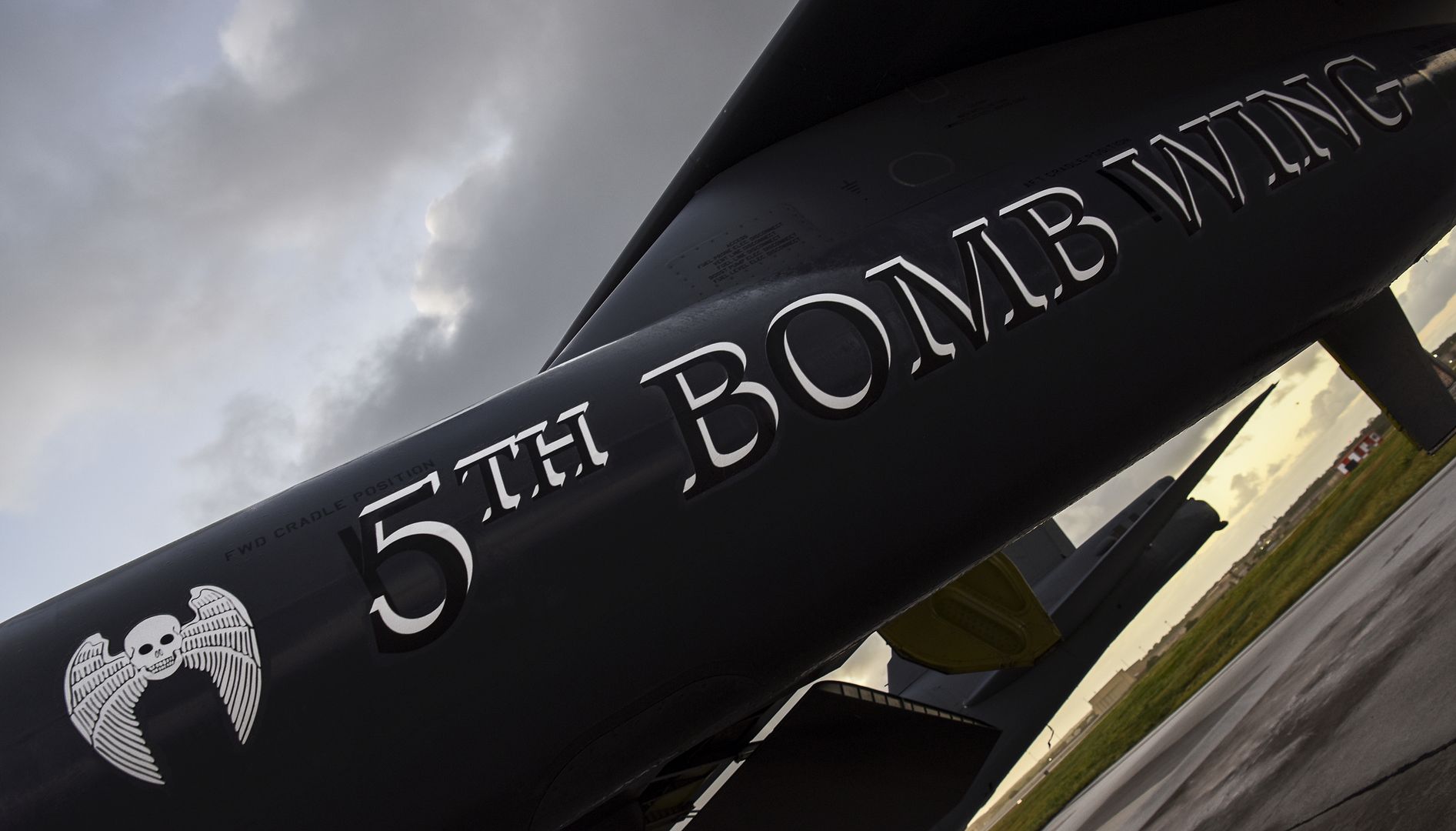
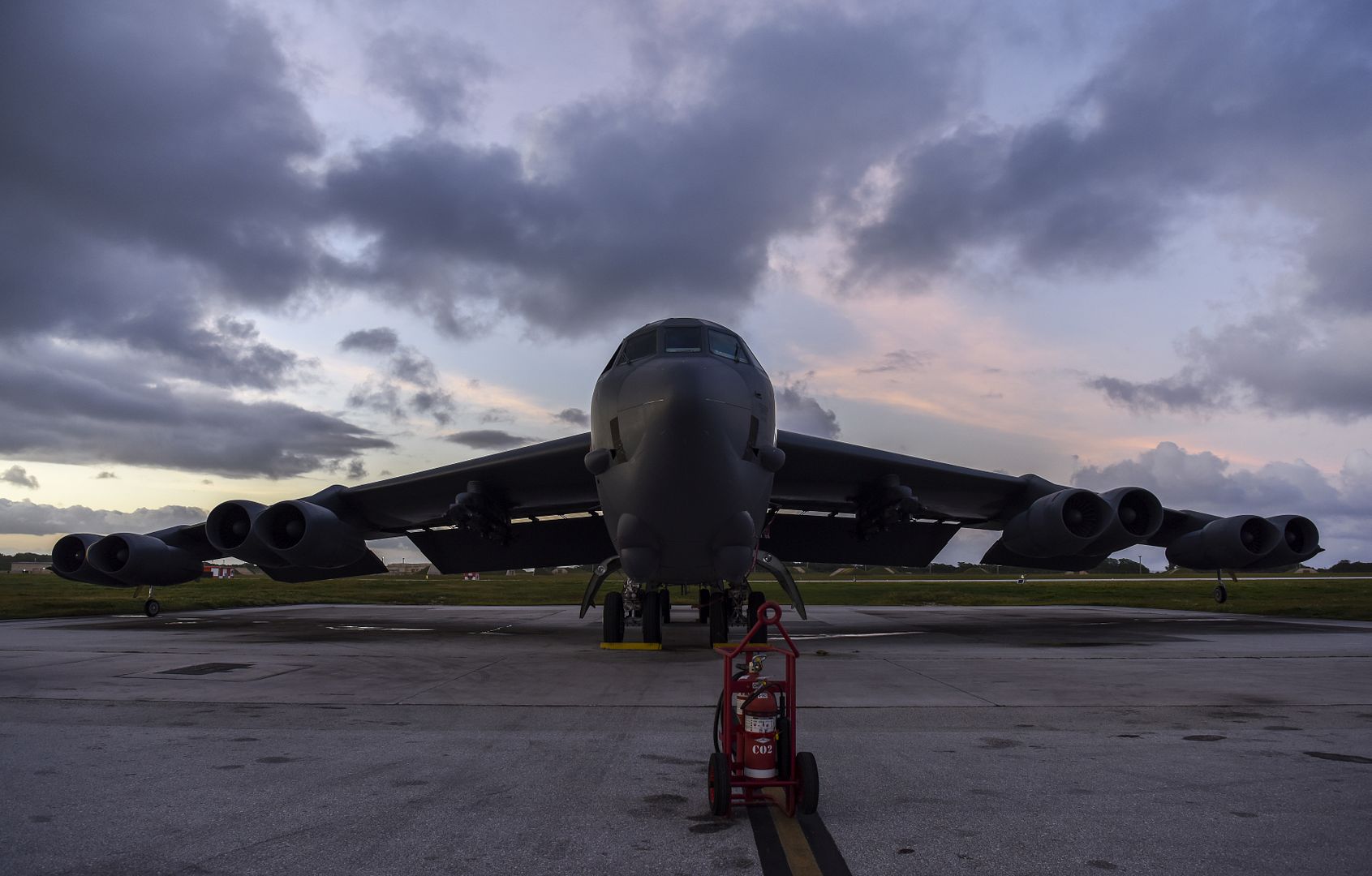
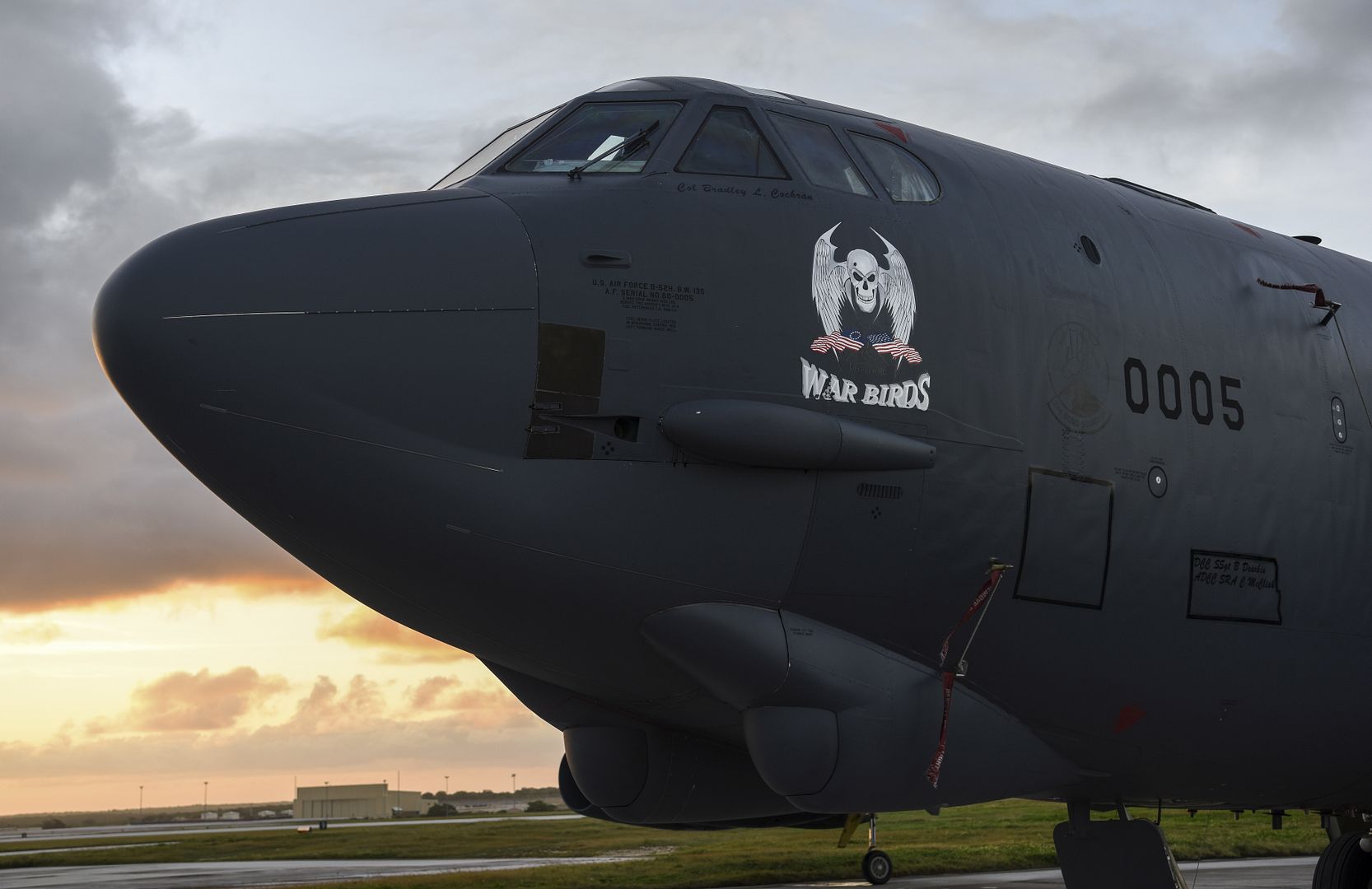
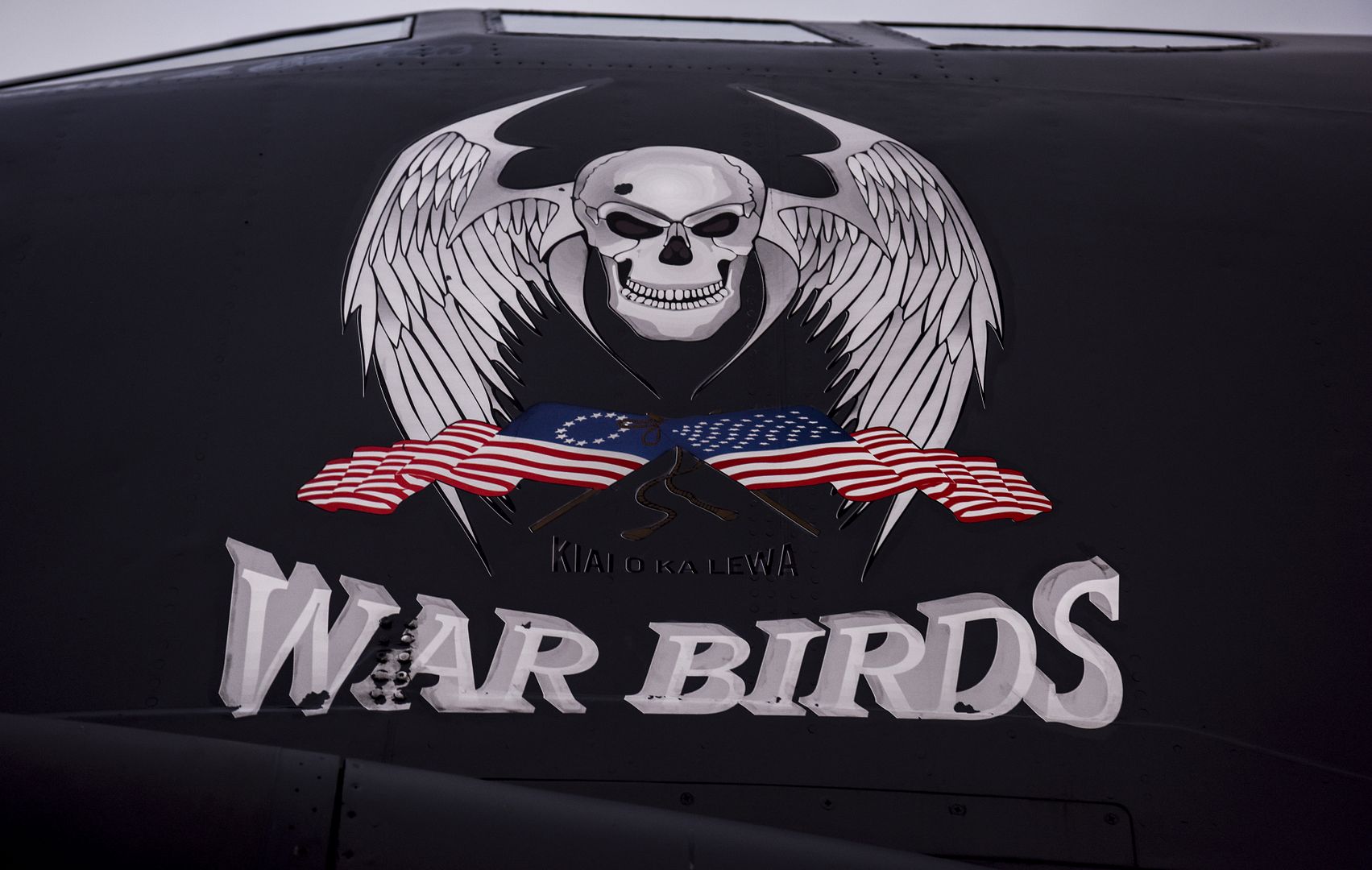
A U.S. Air Force B-2 Spirit bomber deployed from Whiteman Air Force Base, Missouri, and two F-22 Raptors from the 199th Fighter Squadron at Joint Base Pearl Harbor-Hickam, Hawaii, fly in formation near Diamond Head State Monument, Hawaii, Jan. 16, 2019. Three B-2 bombers and more than 200 Airmen deployed here in support of U.S. Strategic Command?s bomber task force mission. Bomber aircraft regularly rotate through the Indo-Pacific region to integrate capabilities with key regional partners and maintain a high state of aircrew proficiency. (U.S. Air Force photo by Senior Airman Thomas Barley)
Soldiers with the 3rd Assault Helicopter Battalion, 4th Combat Aviation Brigade, 4th Infantry Division, begin their work day by performing pre-flight inspections on a UH-60 Blackhawk helicopter at Mihail Kogalniceanu Airbase, Romania, Jan. 16, 2019. Regionally allocated forces conduct maintenance regularly to maintain readiness and lethality, and participate in future training exercises with partners and allies. (U.S. Army photo by Staff Sgt. Kris Bonet)
SEATTLE, WA Jan 16, 2019 ? Boeing [NYSE:BA] and United Airlines [NASDAQ:UAL] announced the carrier ordered 24 additional 737 MAX jets and four more 777-300ER (Extended Range) airplanes last year. The $4.5 billion order, according to list prices, was booked as unidentified on Boeing's Orders & Deliveries website.
The Chicago-based airline has steadily placed new orders for the two Boeing jets to serve its large domestic and international network. United Airlines is among the more than 100 customers who have made the 737 MAX the fastest-selling airplane in Boeing history, receiving more than 5,000 orders since the program?s launch.
?United Airlines has been instrumental to the phenomenal success of the Boeing 737 and 777 programs over the years. We are honored by United?s continued confidence in our people and our airplanes and services,? said Ihssane Mounir, senior vice president of Commercial Sales & Marketing for The Boeing Company. ?We are proud to again extend our long-standing partnership with United Airlines with these latest orders.?
The MAX builds on the 737?s industry-leading performance and reliability by offering operators more range and 14-percent better fuel efficiency compared to today?s airplanes and 20 percent more than the airplanes it replaces. The MAX achieves the improved performance thanks to the CFM International LEAP-1B engines, Advanced Technology winglets, and other airframe enhancements.
The 777 has become the best-selling twin-aisle jet family in history, earning more than 2,000 orders. In fact, United?s order pushed the program over the 2,000 threshold in December. It is also the most reliable twin-aisle jet flying today with the highest schedule reliability in the industry at 99.5 percent. The 777-300ER can seat up to 386 passengers in a three-class configuration and has a maximum range of 7,930 nautical miles (14,685 km).
United also utilizes Boeing Global Services to enhance its operations of their large fleet of Boeing aircraft. Multiple digital Boeing solutions, including those powered by Boeing AnalytX, optimize its operations. Recently, United signed for crew management and electronic flight bag (EFB) tools to enhance operational efficiency across all phases of flight.
Airbus? manufacturing growth in the United States advanced another step today in Mobile, Alabama, as construction of the company?s A220 Manufacturing Facility officially launched with a groundbreaking ceremony. The assembly line will satisfy the strong and growing U.S. demand for the A220 aircraft, the newest offering in Airbus? commercial aircraft product line.
Tom Enders, CEO of Airbus, and Guillaume Faury, President Airbus Commercial Aircraft, led the celebration and welcomed approximately 700 attendees including Airbus and other industry executives, Airbus manufacturing employees, state and national dignitaries, and local community leaders.
The new assembly line, which is the company?s second U.S.-based commercial aircraft production facility, will be located at the Mobile Aeroplex at Brookley adjacent to the A320 Family production line and will facilitate assembly of A220-100 and A220-300 aircraft for U.S. customers. Aircraft production is planned to begin in the third quarter of 2019 with first delivery of a Mobile-assembled A220 aircraft scheduled for 2020. The new A220 production facilities will be complete by next year.
Airbus has strong and longstanding ties to the United States, with Airbus aircraft being operated by the largest airlines in America. Additionally, Airbus is a major partner of U.S. aerospace companies and workers. In the last three years, Airbus spent $48 billion in the United States with hundreds of U.S. suppliers in more than 40 states, translating into Airbus support of more than 275,000 American jobs. Among its facilities in the U.S., Airbus has: engineering centers in Kansas and Alabama; a major training facility in Florida, and soon one in Colorado; materials support and headquarters in Virginia; an A320 Family assembly line delivering aircraft in Alabama; an innovative think tank (A3) in California; a drone data analysis business (Airbus Aerial) in Atlanta, Georgia; helicopter manufacturing and assembly facilities in Texas and Mississippi; and a satellite manufacturing facility (OneWeb) in Florida.
The A220 is the only aircraft purpose-built for the 100-150 seat market; it delivers unbeatable fuel efficiency and true widebody comfort in a single-aisle aircraft. The A220 brings together state-of-the-art aerodynamics, advanced materials and Pratt & Whitney?s latest-generation PW1500G geared turbofan engines to offer at least 20% lower fuel burn per seat compared to previous generation aircraft. With a range of up to 3,200 nm (5,920 km), the A220 offers the performance of larger single-aisle aircraft.
With an order book of more than 500 aircraft to date, the A220 has all the credentials to win the lion?s share of the 100- to 150-seat aircraft market estimated to represent at least 7,000 aircraft over the next 20 years.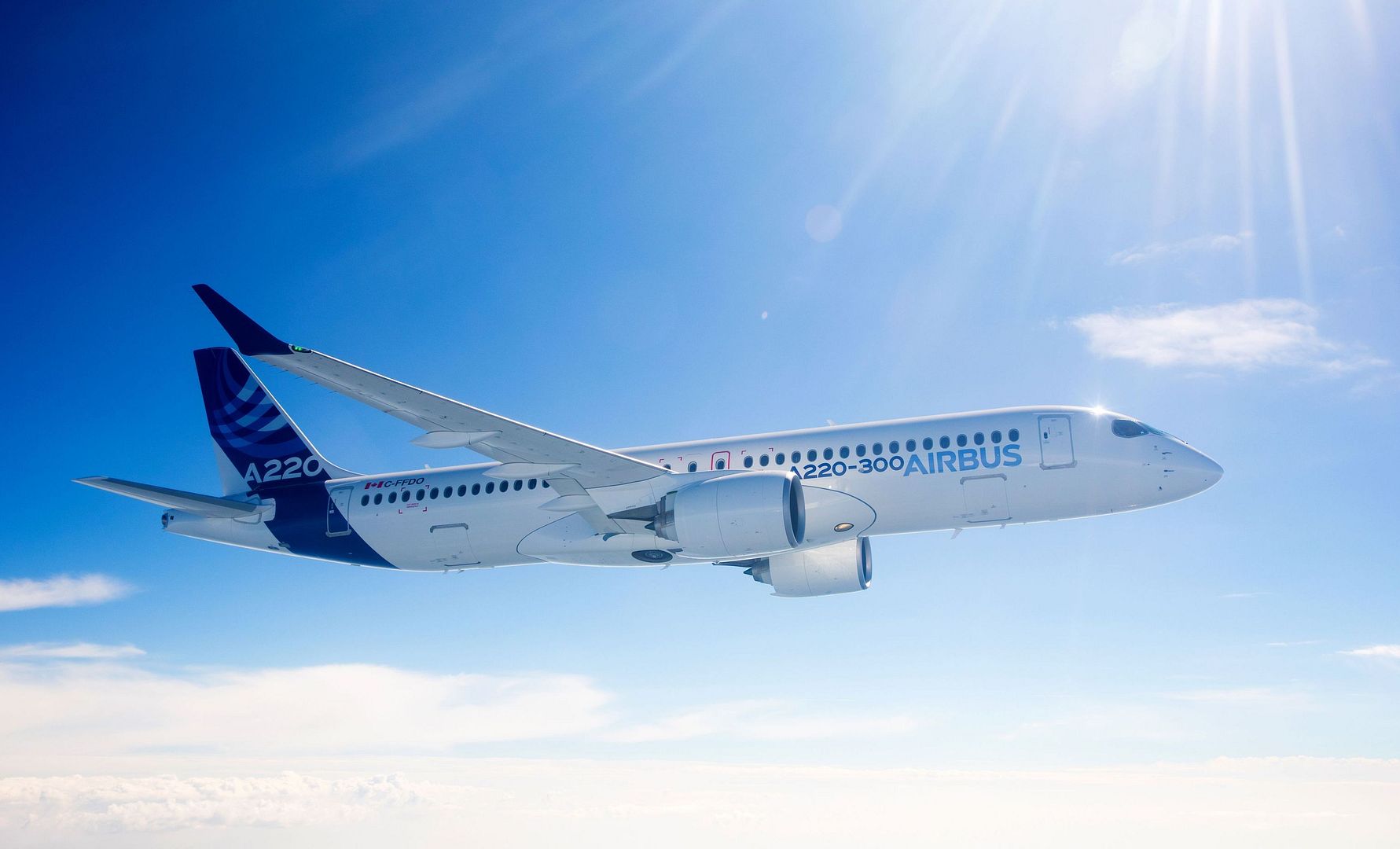
New Delhi ? Airbus has delivered India?s first fully customised, ACH145 helicopter to Mr Adar Poonawalla, CEO and Executive Director of Serum Institute of India, the world?s largest vaccine manufacturer by doses. This marks the entry of the highly successful twin engine helicopter into India?s private and business aviation market. The helicopter will be ready to fly in India by the end of January.
?We are delighted with our selection of the Airbus ACH145 which is certainly a benchmark in its class. It has been chosen keeping in mind the highest levels of customization, comfort and safety. Also, Airbus Helicopters? comprehensive local support system will ensure the optimal availability of the aircraft,? said Mr Poonawalla.
?Airbus is the market leader in civil helicopters in India. Our VIP customers come to Airbus Helicopters for unparalleled quality and a bespoke experience,? said Anand E Stanley, President and Managing Director, Airbus India & South Asia. ?They rely on our products? ability to combine state-of-the-art technology with new transportation possibilities.?
The helicopter provides a spacious cabin that can seat up to eight in ACH Line, ACH Mercedes Benz Style or ACH bespoke versions. The ACH145 features Airbus Helicopters? Helionix avionics, including a standard 4-axis digital Automatic Flight Control System for reduced pilot workload. Fenestron enclosed tail rotor dramatically reduces noise levels. The Turbomeca Arriel2E engines, with dual channel FADEC, generate 951 shaft horsepower for take-off and allow improved hover and one-engine inoperative performance as well as increased maximum gross weight capability.
?The latest delivery proves once again that Airbus is the only Original Equipment Maker which is able to offer helicopters embedding the highest levels of innovation and end-to-end solutions for the ease of operations of customers. The delivery of this helicopter is an important milestone for us,? said Ashish Saraf, Head, Airbus Helicopters India & South Asia.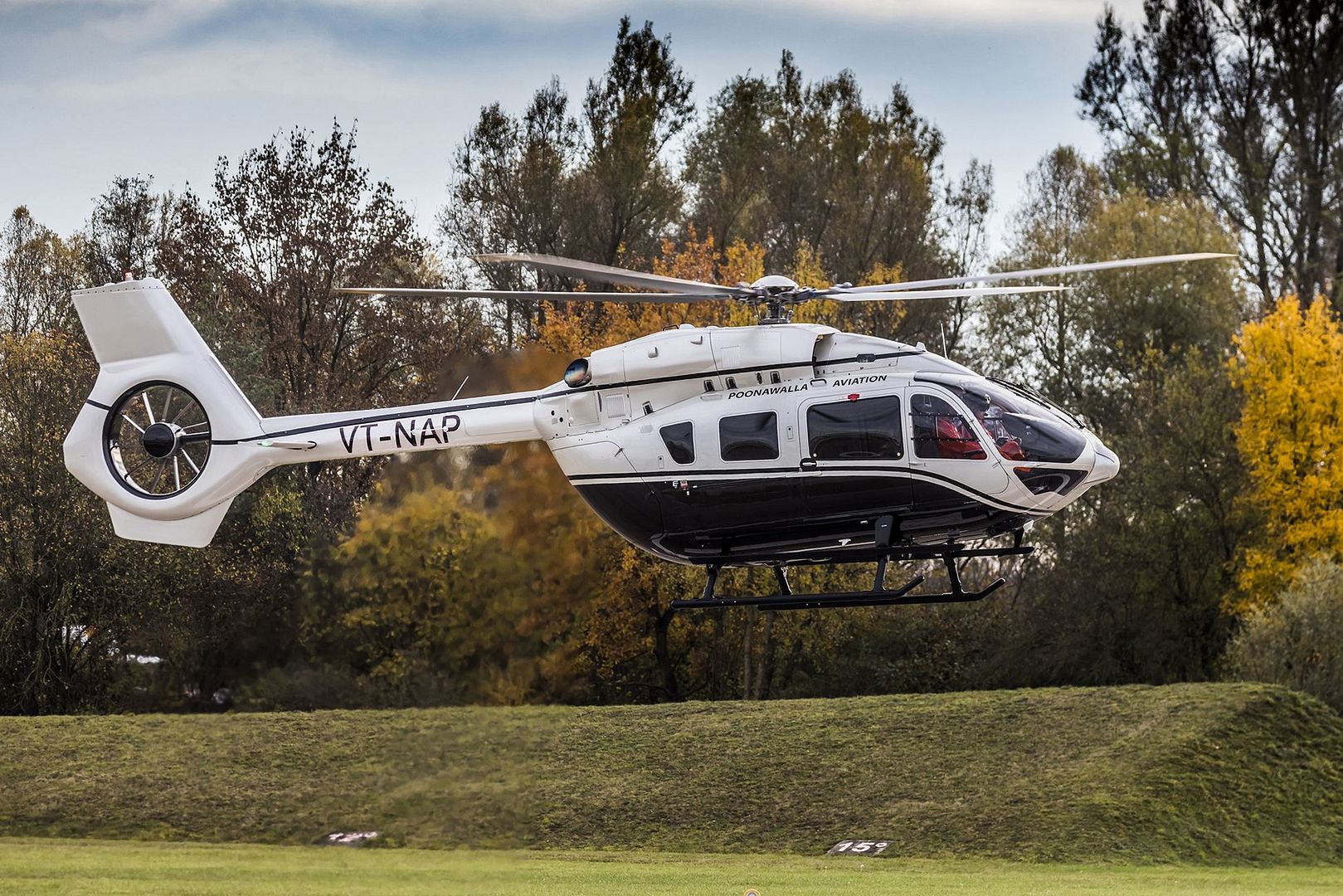
-
 Main AdminAn F-22 Raptor from the Hawaii Air National Guard?s 199th Fighter Squadron conducts aerial refueling with a KC-135 Stratotanker near Joint Base Pearl Harbor-Hickam, Hawaii, Jan. 15, 2019. The F-22s conducted interoperability training with a B-2 Spirit bomber from Whiteman Air Force Base, Mo. Bomber aircraft regularly rotate through the Indo-Pacific region to integrate capabilities with key regional partners and maintain a high state of aircrew proficiency. (U.S. Air Force photo's by Master Sgt. Russ Scalf)
Main AdminAn F-22 Raptor from the Hawaii Air National Guard?s 199th Fighter Squadron conducts aerial refueling with a KC-135 Stratotanker near Joint Base Pearl Harbor-Hickam, Hawaii, Jan. 15, 2019. The F-22s conducted interoperability training with a B-2 Spirit bomber from Whiteman Air Force Base, Mo. Bomber aircraft regularly rotate through the Indo-Pacific region to integrate capabilities with key regional partners and maintain a high state of aircrew proficiency. (U.S. Air Force photo's by Master Sgt. Russ Scalf)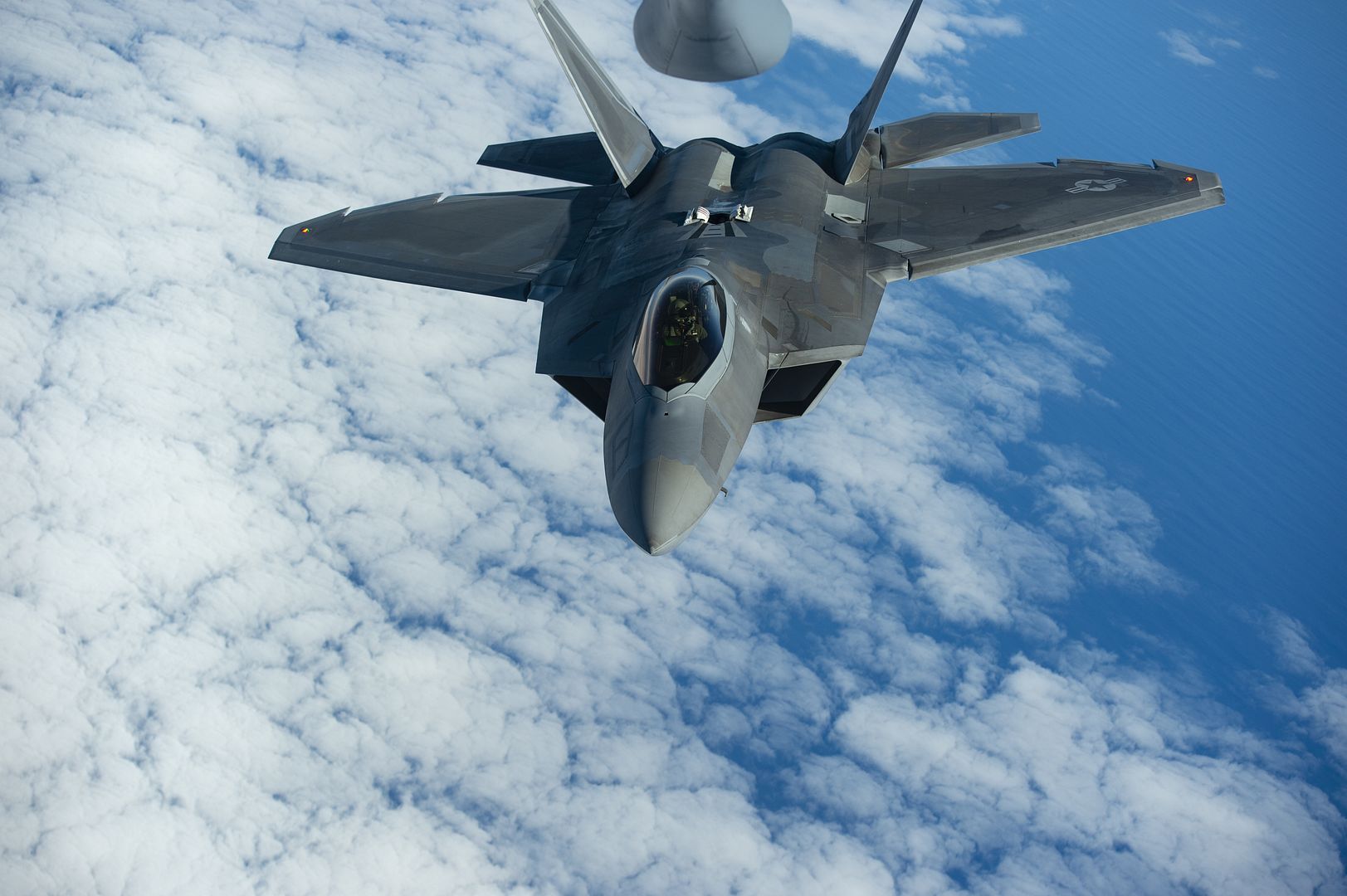
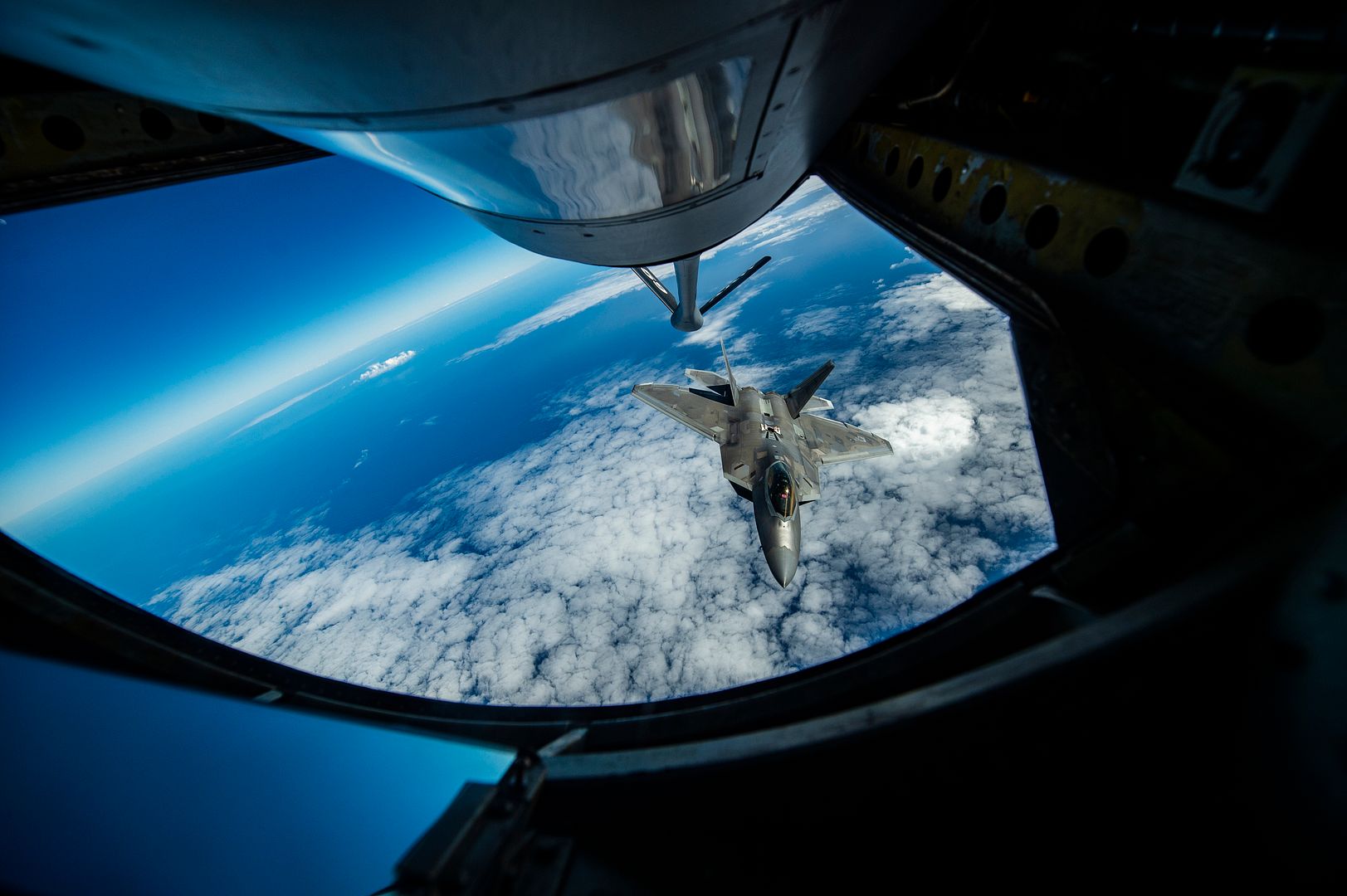
A B-2 Spirit bomber deployed from Whiteman Air Force Base, Missouri, flies near Joint Base Pearl Harbor-Hickam, Hawaii, during an interoperability training mission Jan. 15, 2019. The aircraft are flying in support of a U.S. Strategic Command Bomber Task Force mission. U.S. Strategic Command?s Bomber Forces regularly conduct combined theater security cooperation engagements with allies and partners, demonstrating the U.S. capability to command, control and conduct bomber missions across the globe. (U.S. Air Force photo by Master Sgt. Russ Scalf)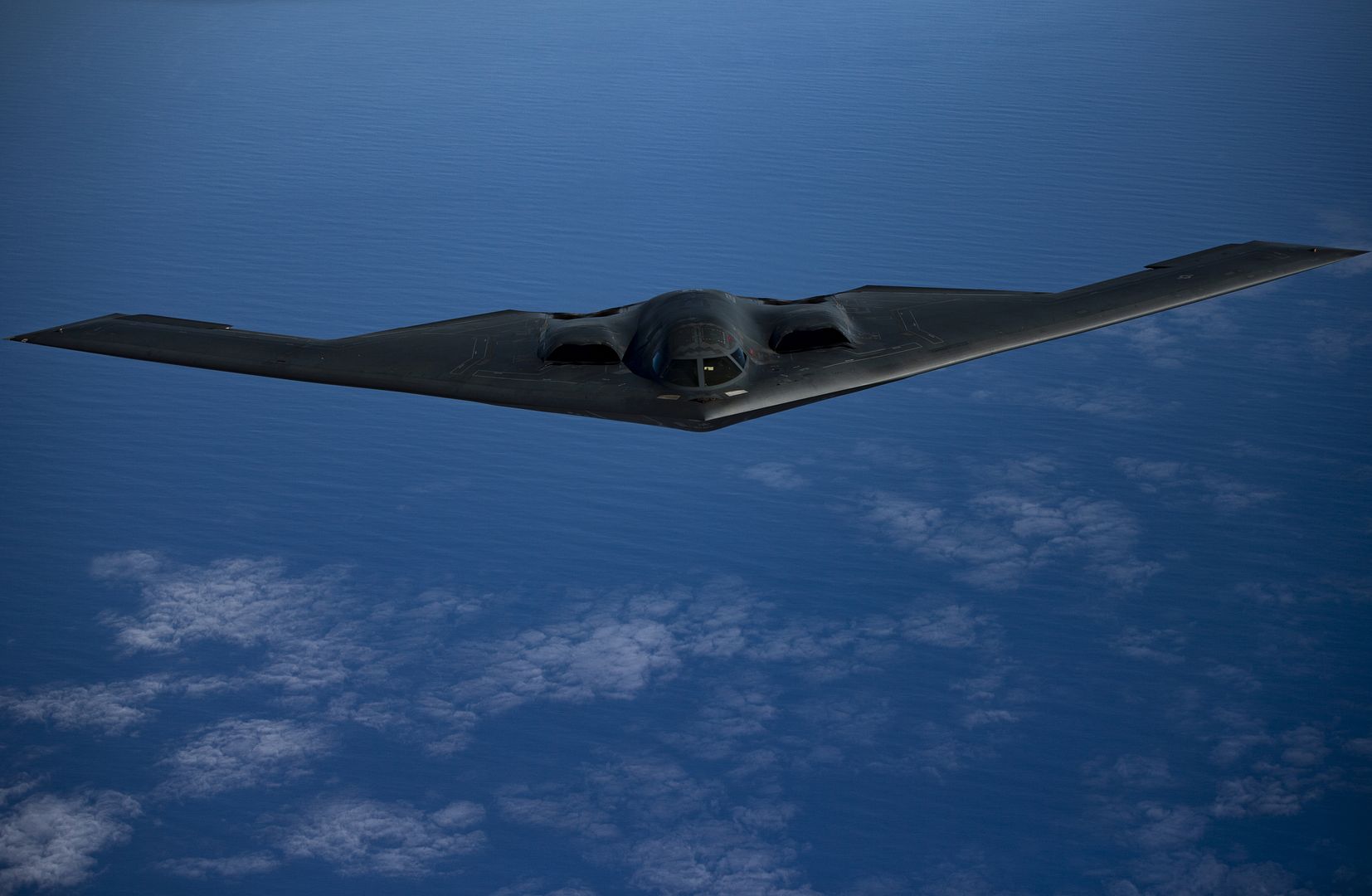
A B-2 Spirit bomber deployed from Whiteman Air Force Base, Missouri, conducts aerial refueling near Joint Base Pearl Harbor-Hickam, Hawaii, during an interoperability training mission Jan. 15, 2019. The aircraft are flying in support of a U.S. Strategic Command Bomber Task Force mission. U.S. Strategic Command?s Bomber Forces regularly conduct combined theater security cooperation engagements with allies and partners, demonstrating the U.S. capability to command, control and conduct bomber missions across the globe. (U.S. Air Force photo's by Master Sgt. Russ Scalf)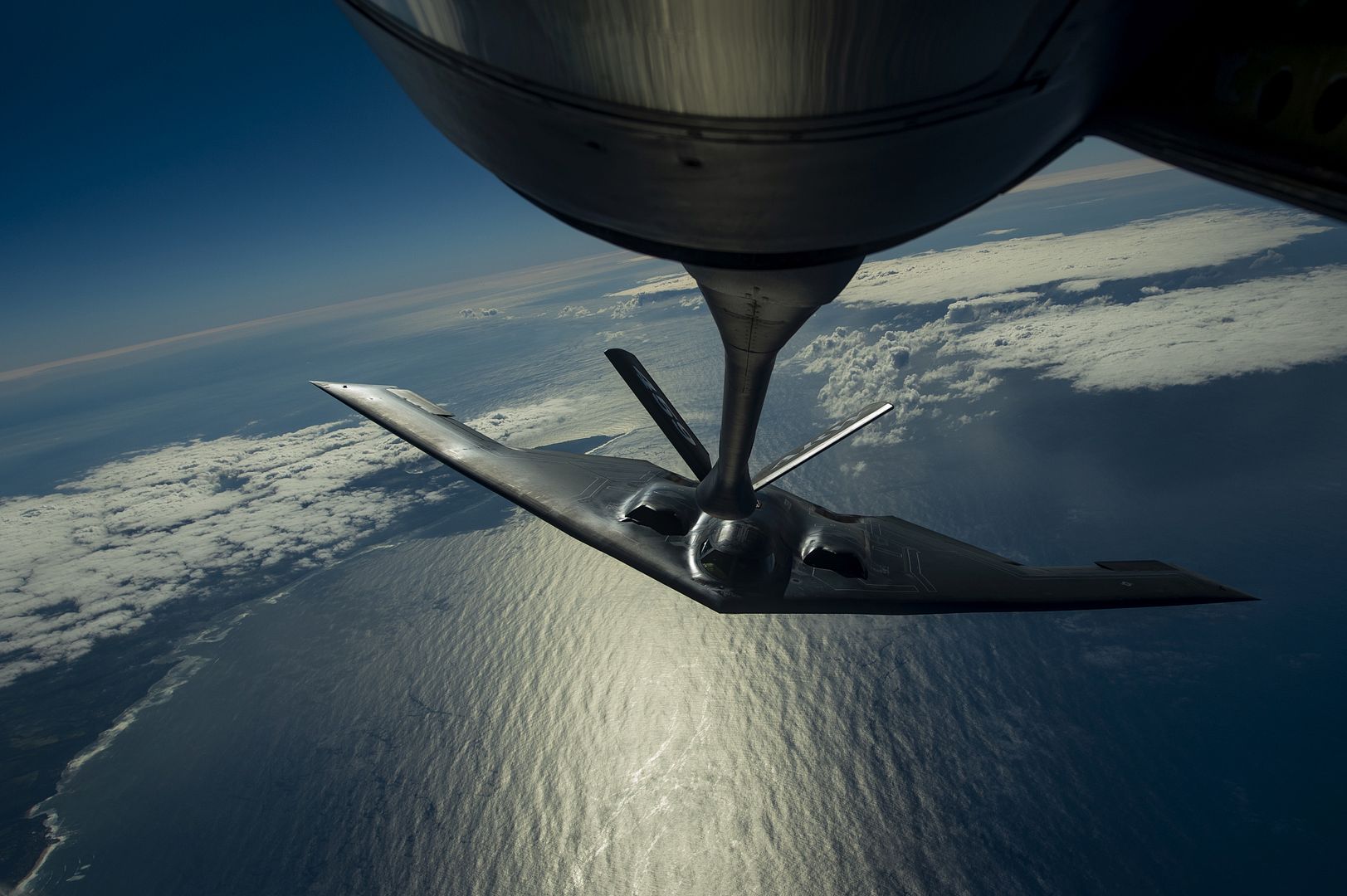
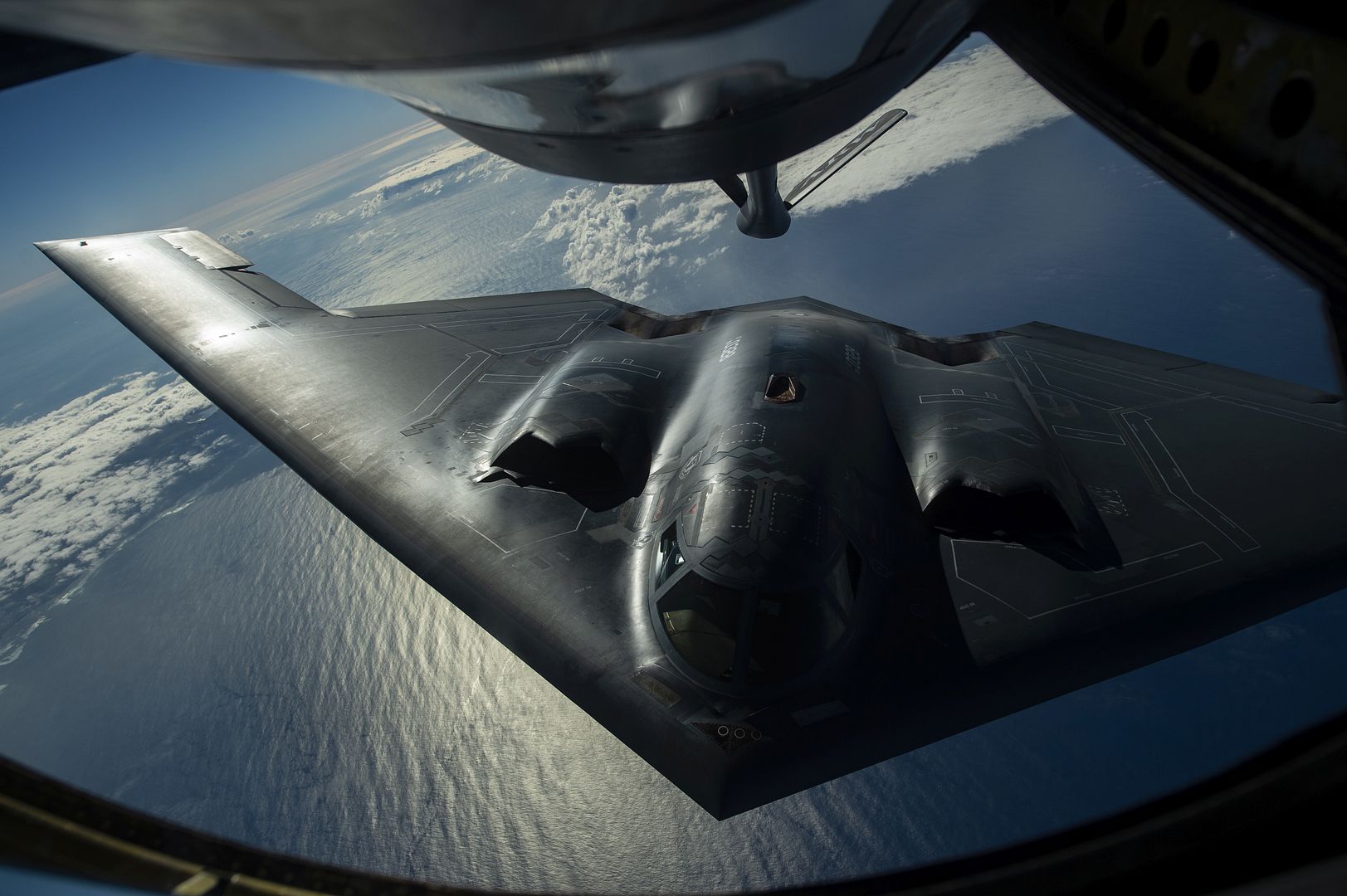
ANDERSEN AIR FORCE BASE, Guam (Jan. 17, 2019) ? Airman Justin Gortzig, assigned to the "War Eagles" of Patrol Squadron 16, stands plane captain prior to a launching a P-8A Poseidon to the flightline during Exercise Sea Dragon. Exercise Sea Dragon is an annual, multilateral exercise that stresses coordinated anti-submarine warfare prosecution against both simulated and live targets. (U.S. Navy photo by Mass Communication Specialist 1st Class Kevin A. Flinn/Released)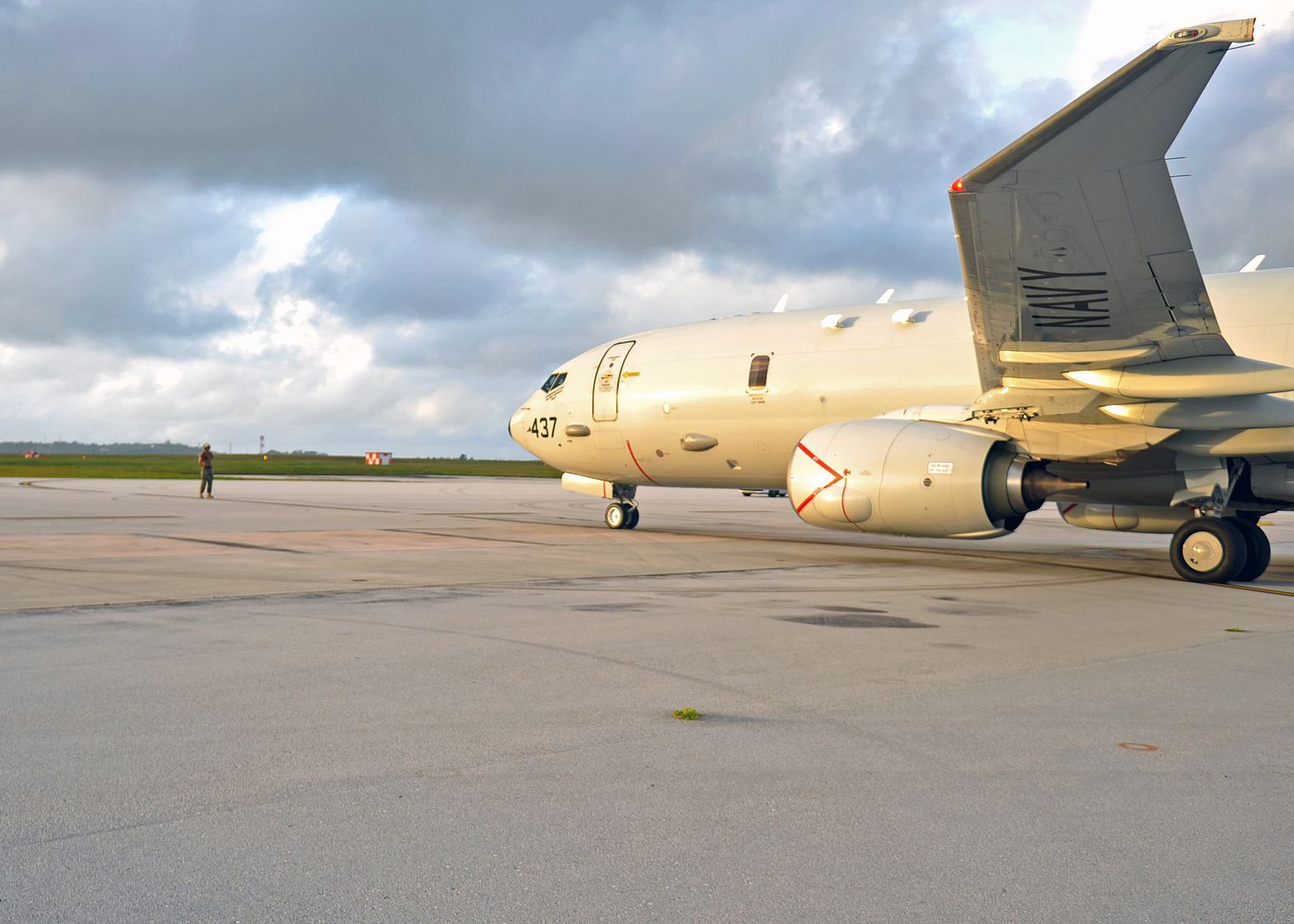
ANDERSEN AIR FORCE BASE, Guam (Jan. 17, 2019) ? A P-8A Poseidon, assigned to the "Golden Swordsmen" of Patrol Squadron 47, taxis the flightline during Exercise Sea Dragon. Exercise Sea Dragon is an annual, multilateral exercise that stresses coordinated anti-submarine warfare prosecution against both simulated and live targets. (U.S. Navy photo by Mass Communication Specialist 1st Class Kevin A. Flinn/Released)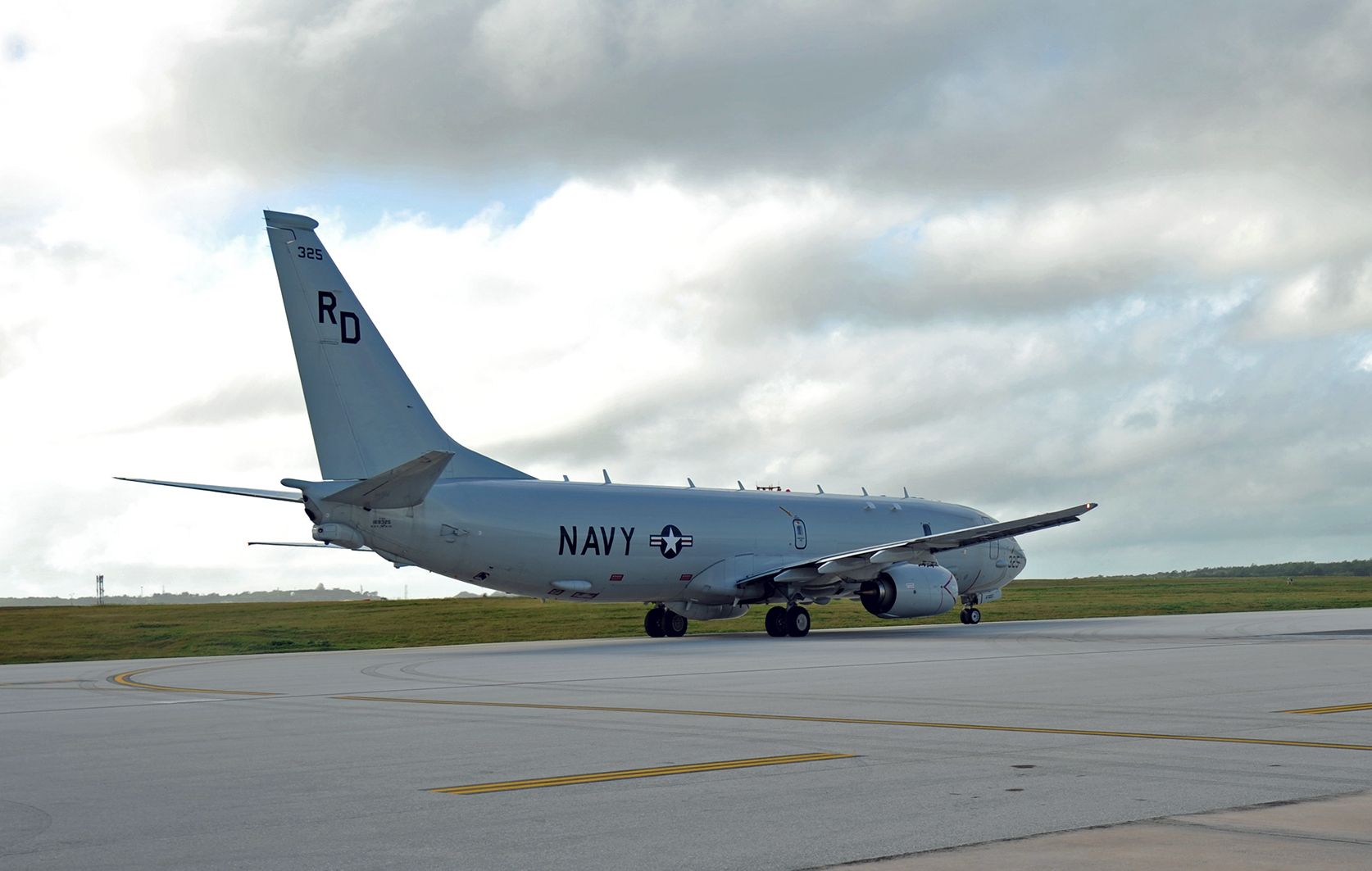
Acropolis Aviation of the UK has taken delivery of the first ACJ320neo, which features new-generation engines and Sharklets to deliver a leap forward in range and economy.
The aircraft will now undergo cabin-outfitting by AMAC in Basle, Switzerland, receiving a VVIP cabin designed by Alberto Pinto. Its current ACJ livery will also be replaced by Acropolis Aviation colours.
?Delivery of the first ACJ320neo is the latest milestone in the roll-out of a completely new ACJ Family, enabling even more of the comfort, range and value prized by business jet customers,? says ACJ President Benoit Defforge.
The A320neo Family is widely proven with airlines, which already fly more than 600 of them.
Corporate jet customers are now poised to benefit from this airliner heritage, enhanced by specific features ? such as extra fuel tanks in the cargo hold that contribute even more intercontinental range, an improved cabin atmosphere, a higher maximum take-off weight and cruise altitude, and airstairs.
The ACJ320 Family currently comprises the ACJ319neo, capable of flying eight passengers 6,750 nm/12,500 km or more than 15 hours, and the ACJ320neo, which can fly 25 passengers 6,000 nm/11,100 km or more than 13 hours.
Deliveries of the ACJ320neo?s sibling, the ACJ319neo, will begin in the coming months.
In addition to the their new fuel-saving engines and Sharklets, ACJ320neo Family aircraft have the widest and tallest cabins of any business jet, without costing more to operate or taking up more ramp space.
The ACJ Family includes a complete family of VIP widebodies that can carry even more passengers nonstop around the world - including the new ACJ330neo and ACJ350 XWB.
More than 190 ACJs are in service around the world, around the clock.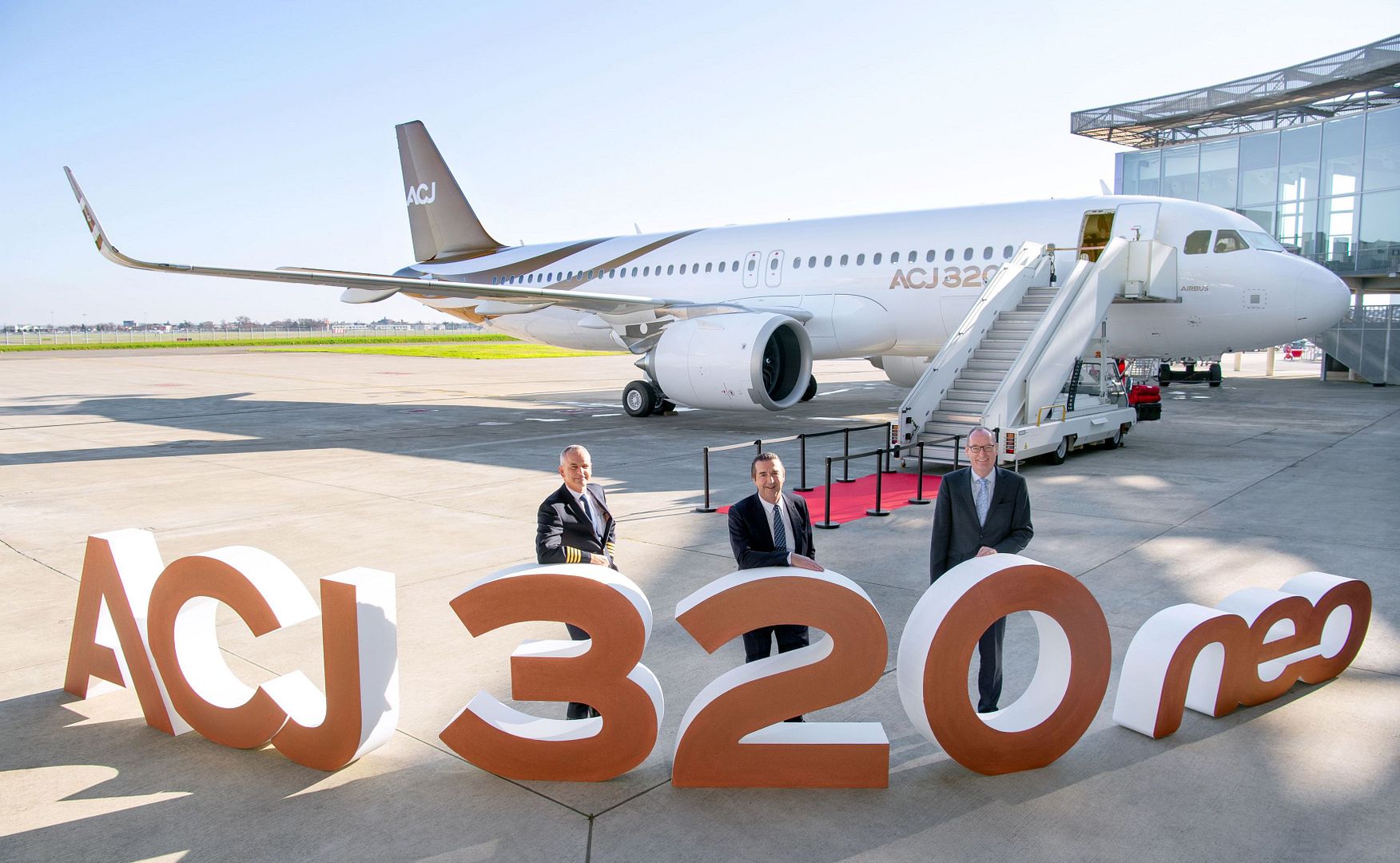
Leonardo is pleased to announce it has been awarded a contract by the UK Ministry of Defence to provide the Apache AH Mk.1 Attack Helicopter fleet with comprehensive support and maintenance services. The Apache Integrated Operational Support (IOS) contract is valued at approximately ?293 million (approximately ?325 million) and will continue to support the Apache AH Mk.1 Attack Helicopter fleet from 1st April 2019 until the aircraft goes out of service in 2024.
During a visit to Leonardo Helicopters? facility in Yeovil today Defence Minister Stuart Andrew said ?The Apache has provided years of crucial battlefield support to UK and coalition troops in operations in Libya and Afghanistan. This multi-million-pound contract will ensure our Armed Forces continue to benefit from this vital capability as we integrate the latest Apache model into service in 2022.?
Geoff Munday, Leonardo Helicopters? Managing Director in the UK said ?We are pleased that we have been awarded the contract to support the Apache AH Mk.1 fleet up to the planned out of service date and that the Minister has taken the time to visit us here in Yeovil to see first-hand the unique and exceptional capabilities we have here in the UK.?
Under the contract Apache IOS prime contractor Leonardo, through the involvement of its Helicopter and Electronics divisions, will continue to be supported by its industrial partners Boeing, Lockheed Martin and Longbow International to deliver complete spares provisioning, engineering, depth maintenance, repair & overhaul and technical support services for the UK MoD?s fleet of Apache AH Mk.1 helicopters. At Wattisham Airfield, the British Army?s main Apache AH Mk.1 operating base, Leonardo will continue to manage the Depth Support Unit and the associated workshops, ensuring the throughput of the facility matches the operational requirements of the Army Air Corps. At Army Aviation Centre Middle Wallop, Leonardo will continue to be responsible for the provision of Apache aircraft on the flight line at the School of Army Aviation, delivering the required number of flight hours to match the Army?s training requirements.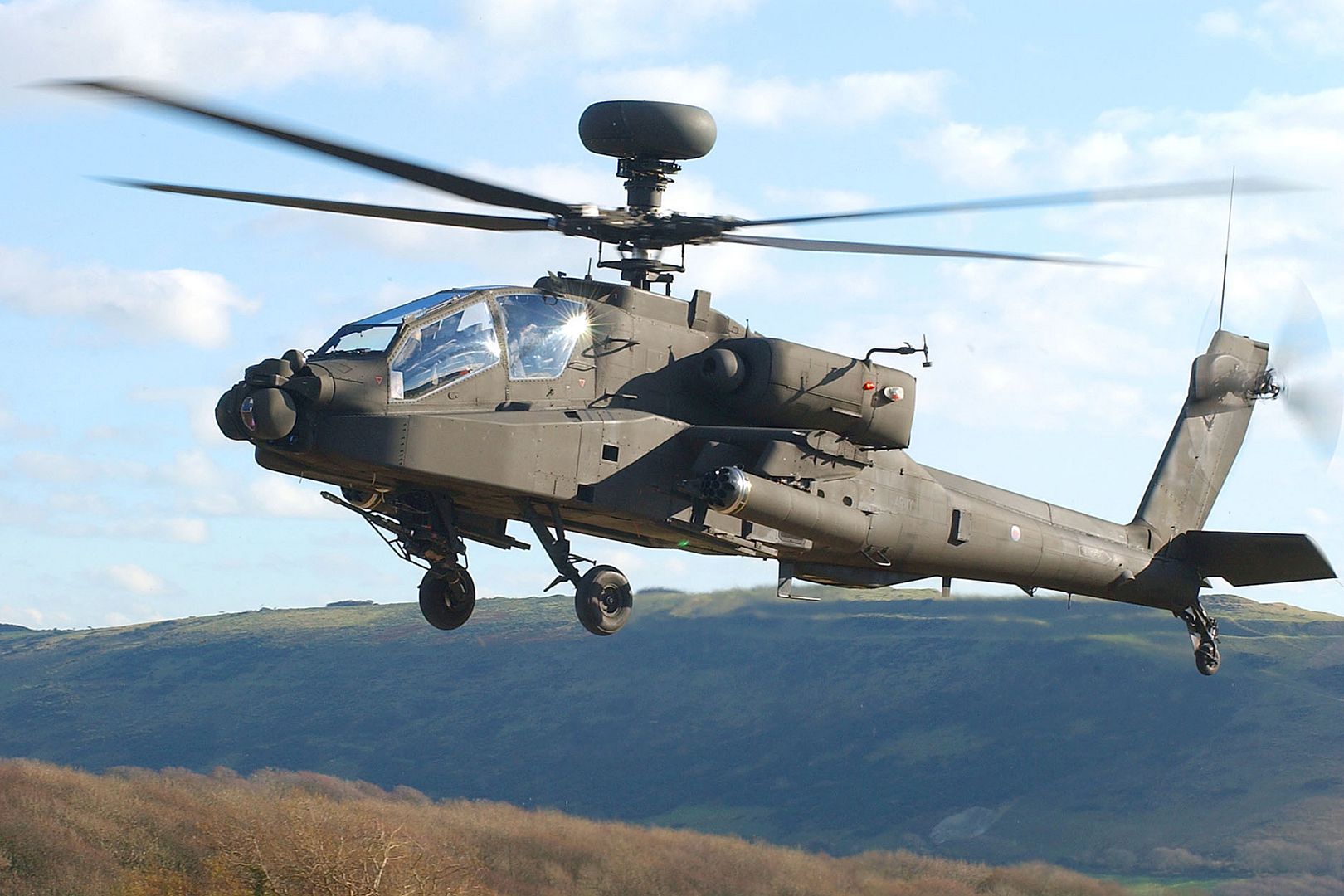
-
 Main AdminA U.S Air Force F-16 Fighting Falcon deployed from Kunsan Air Base, Korea, taxis on the flightline to kickoff the Bilateral Air Contingent Exchange-Philippines (BACE-P) at Cesar Basa Air Base, Philippines, Jan.18, 2019. This is the seventh iteration of BACE-P established by U.S. Pacific Command and executed by Headquarters Pacific Air Forces. Incorporating F-16s in this iteration of operations will allow for air-to-air and air-to-ground interfly training with the Philippine Air Force?s FA-50s. (U.S. Air Force photo by Staff Sgt. Anthony Small)
Main AdminA U.S Air Force F-16 Fighting Falcon deployed from Kunsan Air Base, Korea, taxis on the flightline to kickoff the Bilateral Air Contingent Exchange-Philippines (BACE-P) at Cesar Basa Air Base, Philippines, Jan.18, 2019. This is the seventh iteration of BACE-P established by U.S. Pacific Command and executed by Headquarters Pacific Air Forces. Incorporating F-16s in this iteration of operations will allow for air-to-air and air-to-ground interfly training with the Philippine Air Force?s FA-50s. (U.S. Air Force photo by Staff Sgt. Anthony Small)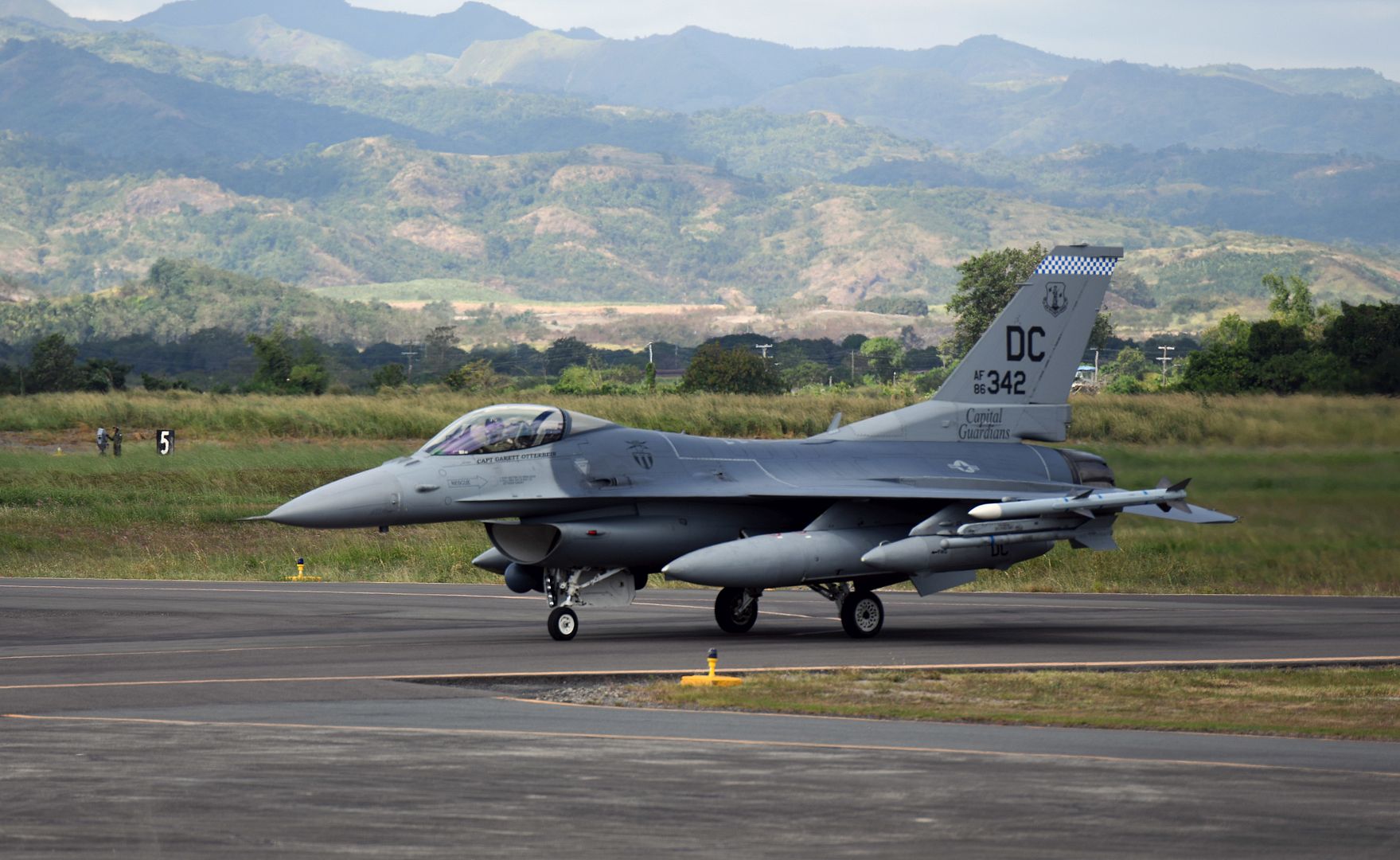
An Airbus CC-150 Polaris sits at an undisclosed location in Southwest Asia, Jan. 16, 2019, during a visit by Commander of the Royal Canadian Air Force Lieutenant-General Al Meinzinger and RCAF Command Chief Warrant Officer Denis Gaudreault. The Polaris is a multi-purpose, twin-engine, long-range jet aircraft that can be configured to carry VIP passengers or be fitted as a tanker for strategic air-to-air refueling. (U.S. AIr Force Photo/Tech. Sgt. Robert Cloys)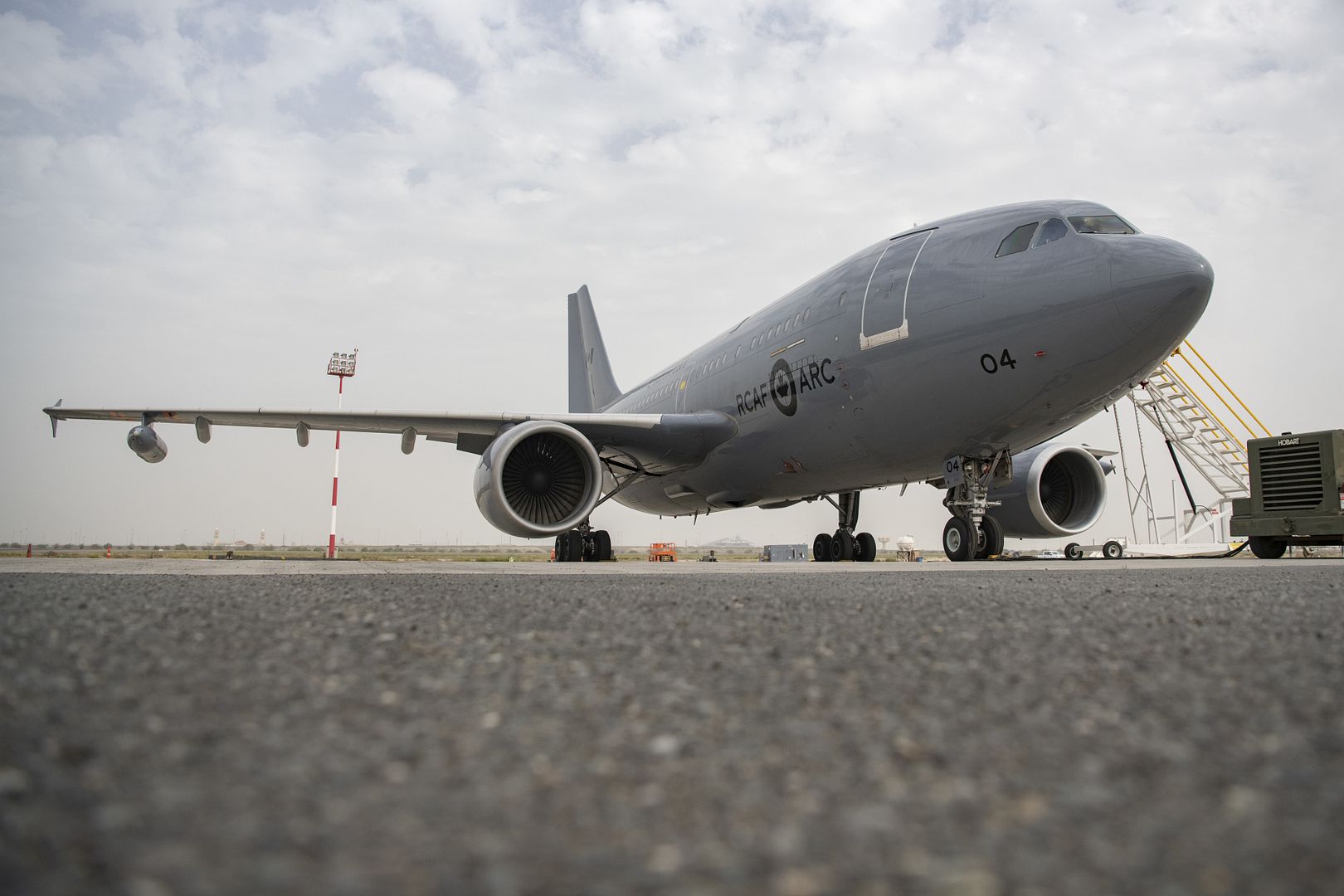
ATLANTIC OCEAN (Jan. 17, 2019) An MH-53E Sea Dragon helicopter, assigned to the Blackhawks of Helicopter Mine Countermeasures Squadron (HM) 15, prepares to land aboard the aircraft carrier USS George H.W. Bush (CVN 77). GHWB is underway in the Atlantic Ocean conducting routine training exercises to maintain carrier readiness. (U.S. Navy photo by Mass Communication Specialist 3rd Class Kallysta Castillo)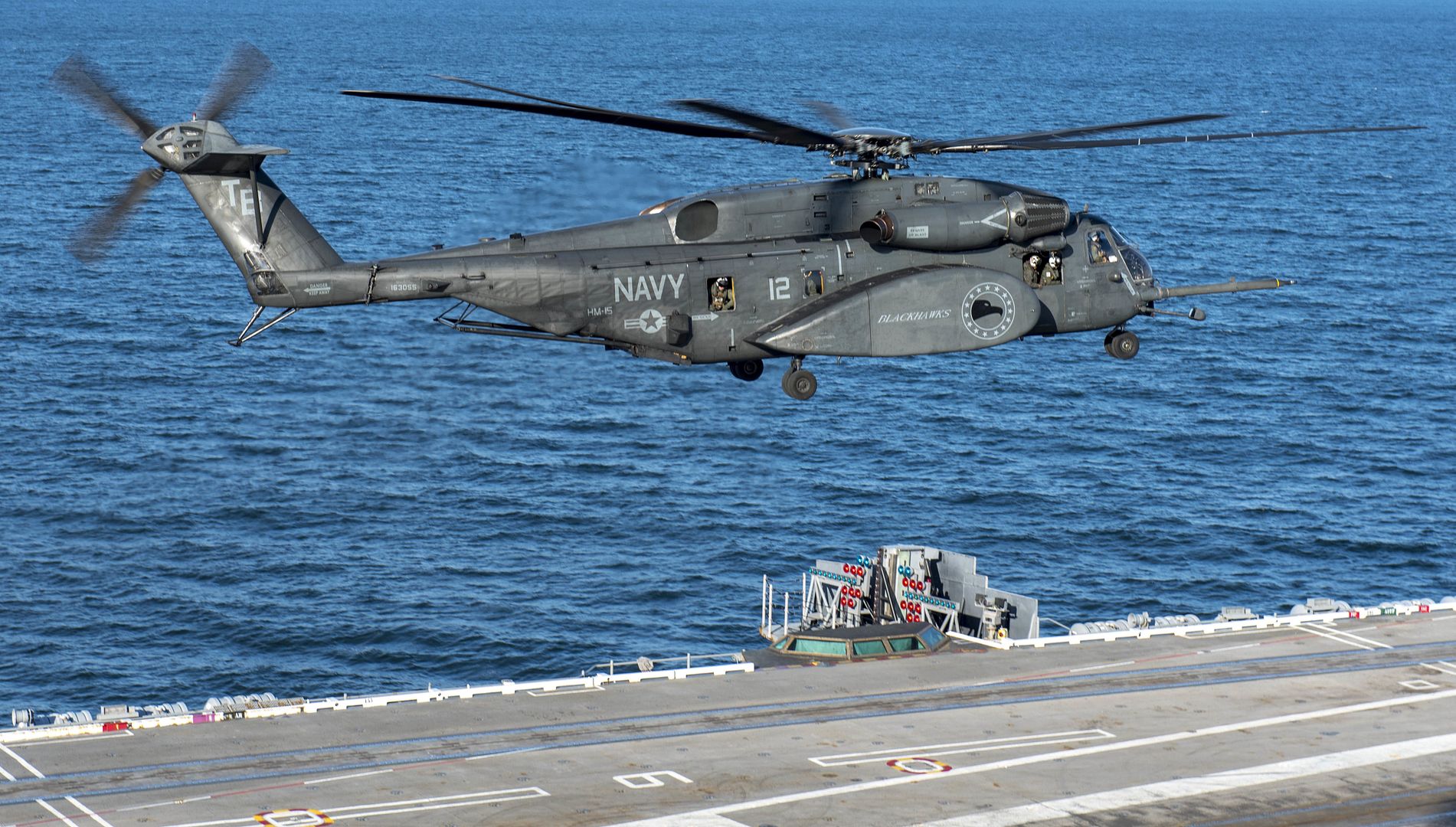
ARABIAN GULF (Jan. 15, 2019) U.S. Navy Boatswain's Mate 3rd Class Brandon Ross, from Honeapath, South Carolina, salutes the pilot of a Panther anti-submarine helicopter, assigned to France's Marine Nationale air defense destroyer FS Cassard (D 614), as it approaches the flight deck of the guided-missile destroyer USS Spruance (DDG 111) while conducting daylight landing qualifications in the Arabian Gulf, Jan. 15, 2019, during exercise Intrepid Sentinel. Intrepid Sentinel brings together the John C. Stennis Strike Group, France's Marine Nationale, United Kingdom's Royal Navy and the Royal Australian Navy for a multinational exercise designed to enhance war fighting readiness and interoperability between allies and partners. The Spruance is deployed to the U.S. 5th Fleet area of operations in support of naval operations to ensure maritime stability and security in the Central Region, connecting the Mediterranean and the Pacific through the western Indian Ocean and three strategic choke points. (U.S. Navy photo by Mass Communication Specialist 1st Class Ryan D. McLearnon/Released)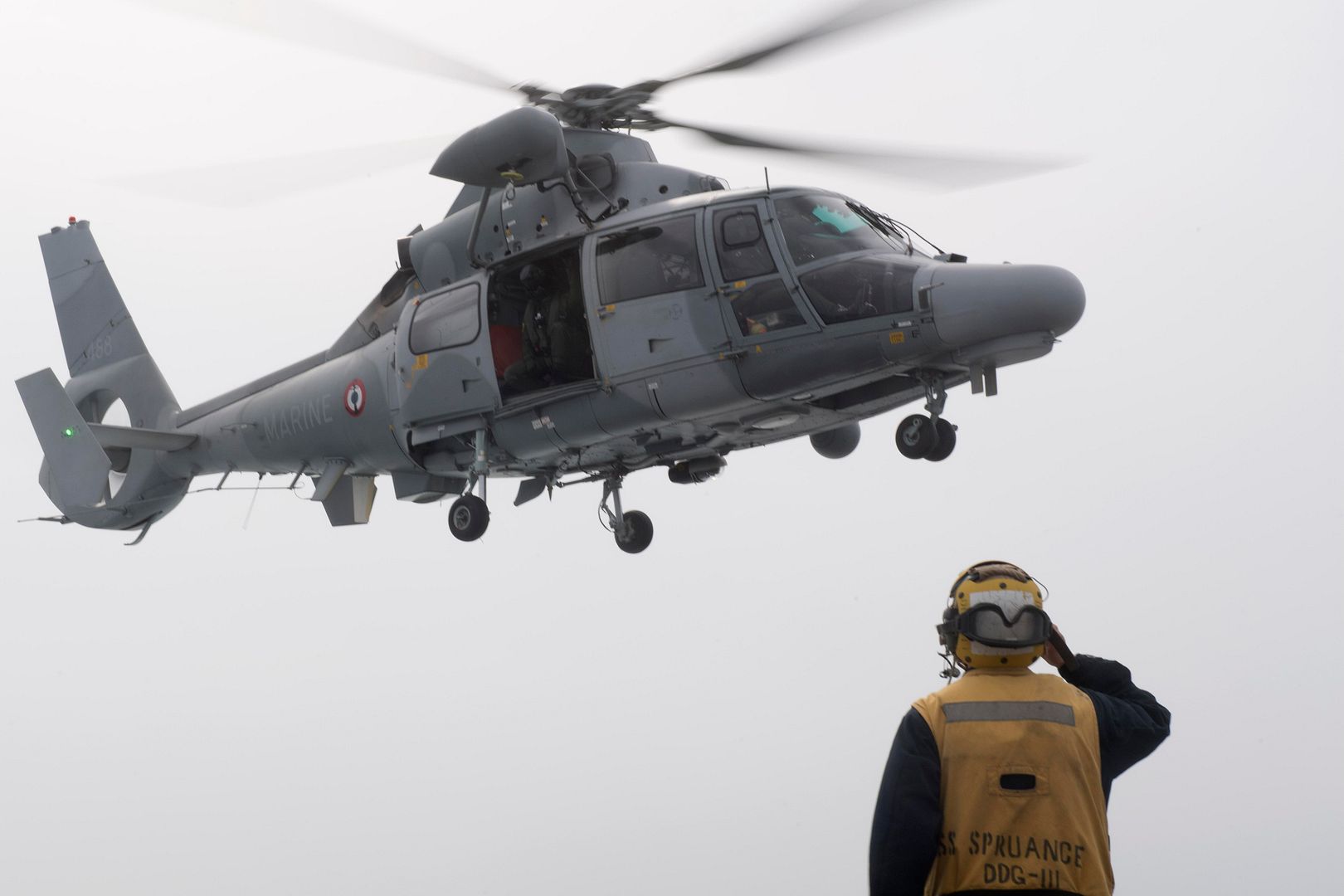
SEATTLE, Jan. 17, 2019 /PRNewswire/ -- Boeing [NYSE:BA] today delivered the first of ten 787 Dreamliners to WestJet, marking the start of the airline's global expansion. Having long operated a fleet of Boeing single-aisle jets, WestJet will use the super-efficient, long-range 787-9 Dreamliner to profitably serve new international routes.
"Today's delivery marks a new chapter for WestJet," said Ed Sims, president and CEO of Calgary-based WestJet. "Boeing's 787 Dreamliner is one of the most technologically advanced aircraft ever flown and is the perfect platform for our transition to a global network carrier. We look forward to bringing Canadians to the world and the world to Canada in comfort and style."
This spring, WestJet will use the 787-9 ? the longest-range Dreamliner that can fly 7,635 nautical miles (14,140km) ? to offer the first-ever flight connecting Calgary and Dublin. The airline will also offer non-stop Dreamliner service between Calgary and London Gatwick and Calgary and Paris.
The 787 Dreamliner ? the fastest-selling widebody jet in history with about 1,400 orders ? allows airlines to reduce fuel use and emissions by 20 to 25 percent and serve far-away destinations. The combination of super fuel efficiency and long range has helped airlines save more than 30 billion pounds of fuel and open more than 210 non-stop routes.
WestJet's 787-9 will accommodate 320 passengers in a three-class configuration. The Dreamliner's passenger-pleasing interior, which includes large windows, lower-cabin altitude and smooth-ride technology, complements WestJet's all-new business cabin featuring the carrier's first lie-flat seats.
"We are excited to welcome our friends at WestJet to the Dreamliner family. The airline has achieved impressive growth with the Boeing 737 and will now use the 787's unmatched performance and passenger comforts to profitably launch a new 'global era'," said Ihssane Mounir, senior vice president of Commercial Sales & Marketing for The Boeing Company.
In preparation for its new Dreamliners, WestJet recently added digital solutions powered by Boeing AnalytX, to optimize its operations. These include Airplane Health Management, which provides predictive analytics to optimize WestJet's 787 fleet operations, as well as Toolbox, which delivers real-time information for technicians to quickly resolve maintenance issues and keep airlines on schedule.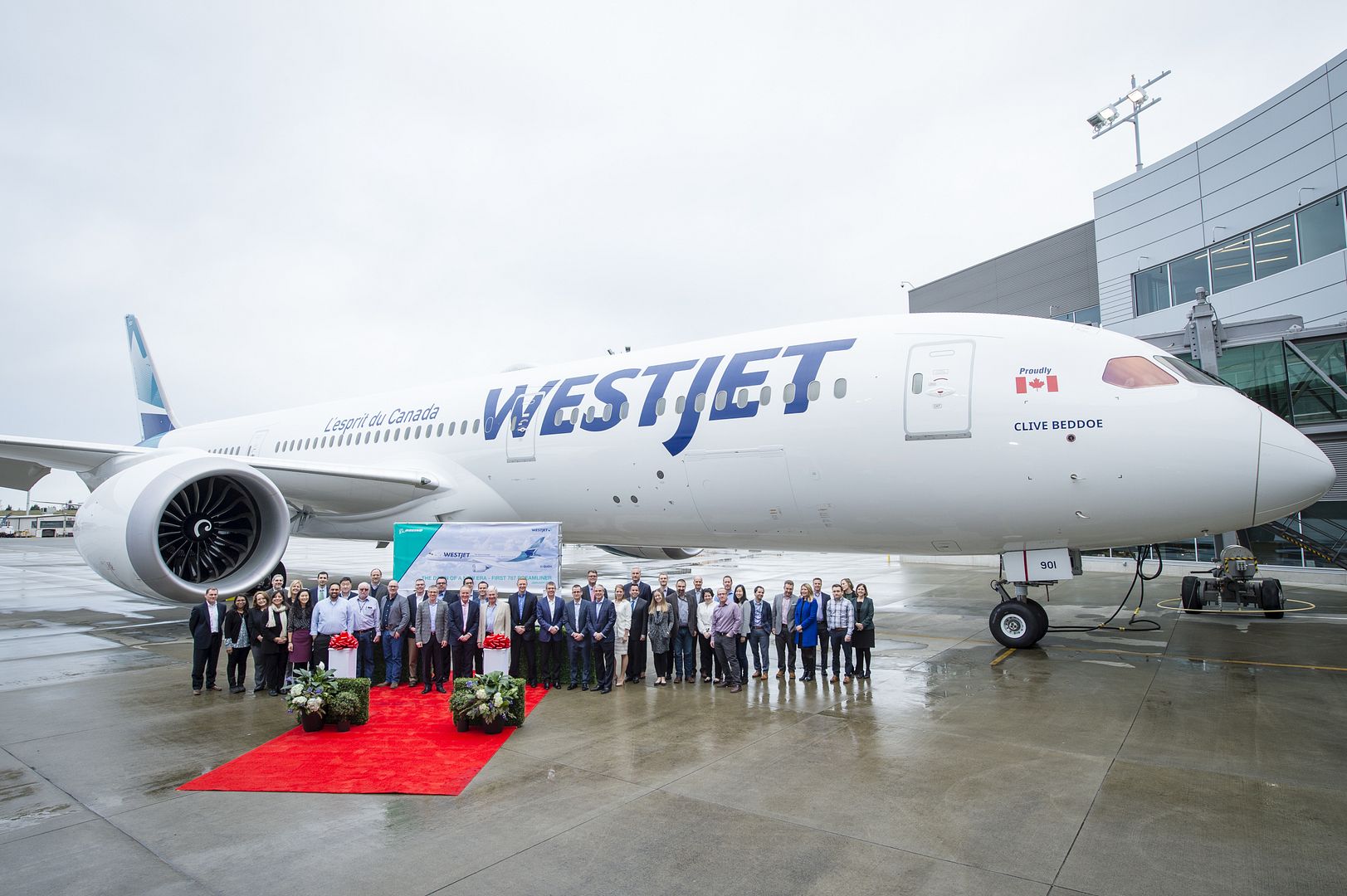
-
 Main AdminTeam Vandenberg supported the successful launch of a United Launch Alliance Delta IV Heavy rocket carrying a National Reconnaissance Office payload from Space Launch Complex-6 here, Saturday, Jan. 19, at 11:10 am PST. (U.S. Air Force photo's by Michael Peterson)
Main AdminTeam Vandenberg supported the successful launch of a United Launch Alliance Delta IV Heavy rocket carrying a National Reconnaissance Office payload from Space Launch Complex-6 here, Saturday, Jan. 19, at 11:10 am PST. (U.S. Air Force photo's by Michael Peterson)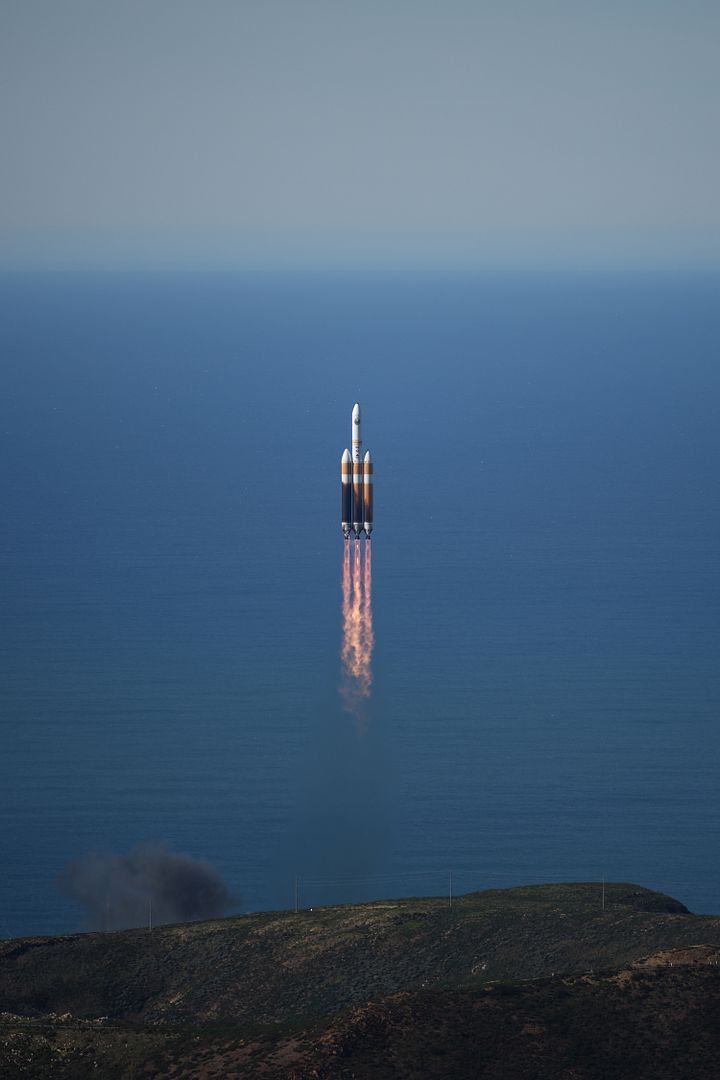

An A-10 Thunderbolt II aircraft from the 107th Fighter Squadron, 127th Wing, Selfridge Air National Guard base out of Harrison Township, Michigan, awaits taxiing prior to a training flight at sunset during Exercise Emerald Warrior 2019 taking place at MacDill Air Force Base in Tampa, Florida on January 18, 2019. Exercise Emerald Warrior is a U.S. Special Operations Command-sponsored two-week joint/combined tactical exercise designed to provide realistic military training in an urban setting. (Air National Guard photo by 1st Lt. Cammy Alberts)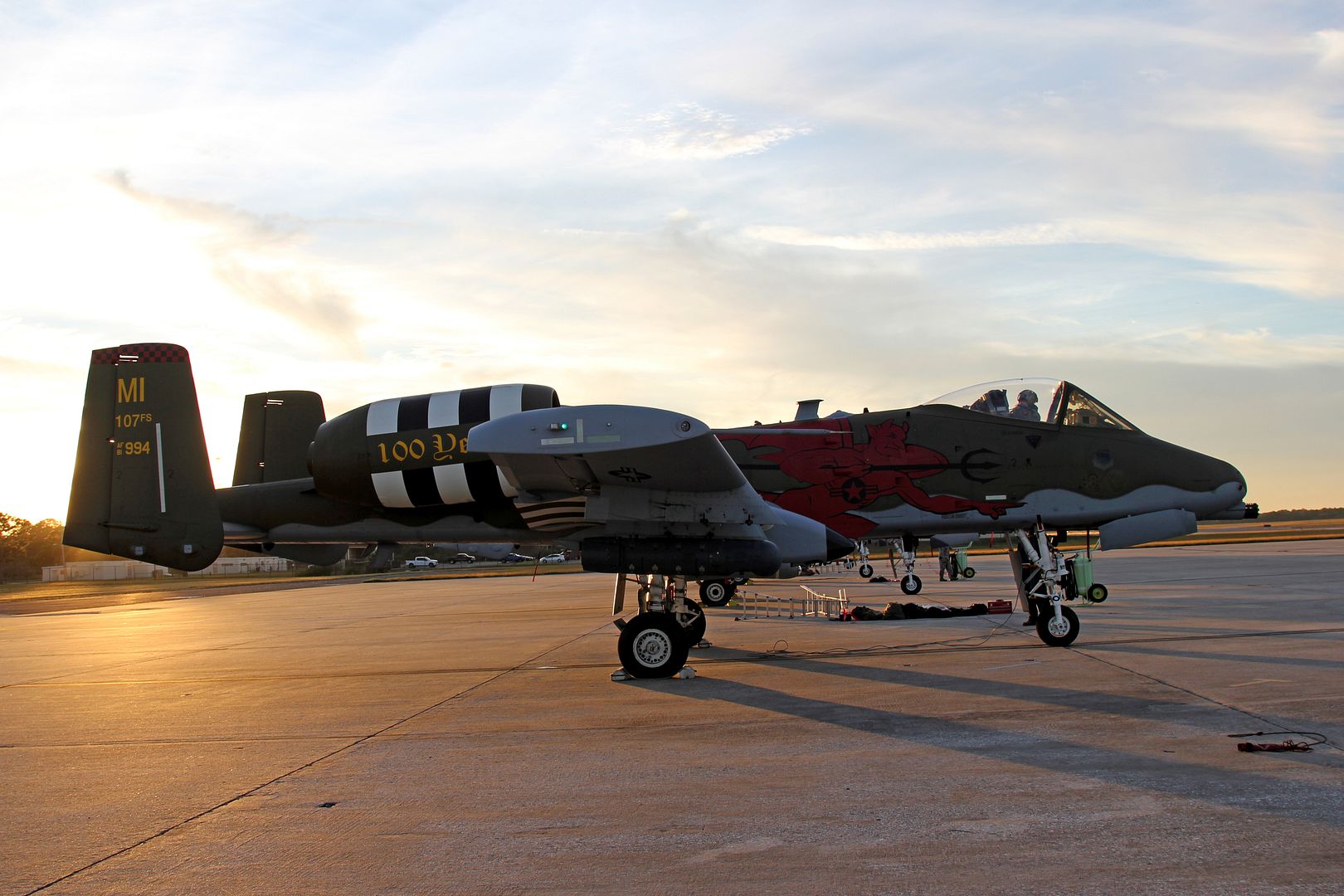
An A-10 Thunderbolt II aircraft from the 107th Fighter Squadron, 127th Wing, Selfridge Air National Guard base out of Harrison Township, Michigan, returns to MacDill Air Force Base after a successful training flight during Exercise Emerald Warrior 2019 taking place at at MacDill Air Force Base in Tampa, Florida on January 18, 2019. Exercise Emerald Warrior is a U.S. Special Operations Command-sponsored two-week joint/combined tactical exercise designed to provide realistic military training in an urban setting. (Air National Guard photo by 1st Lt. Cammy Alberts)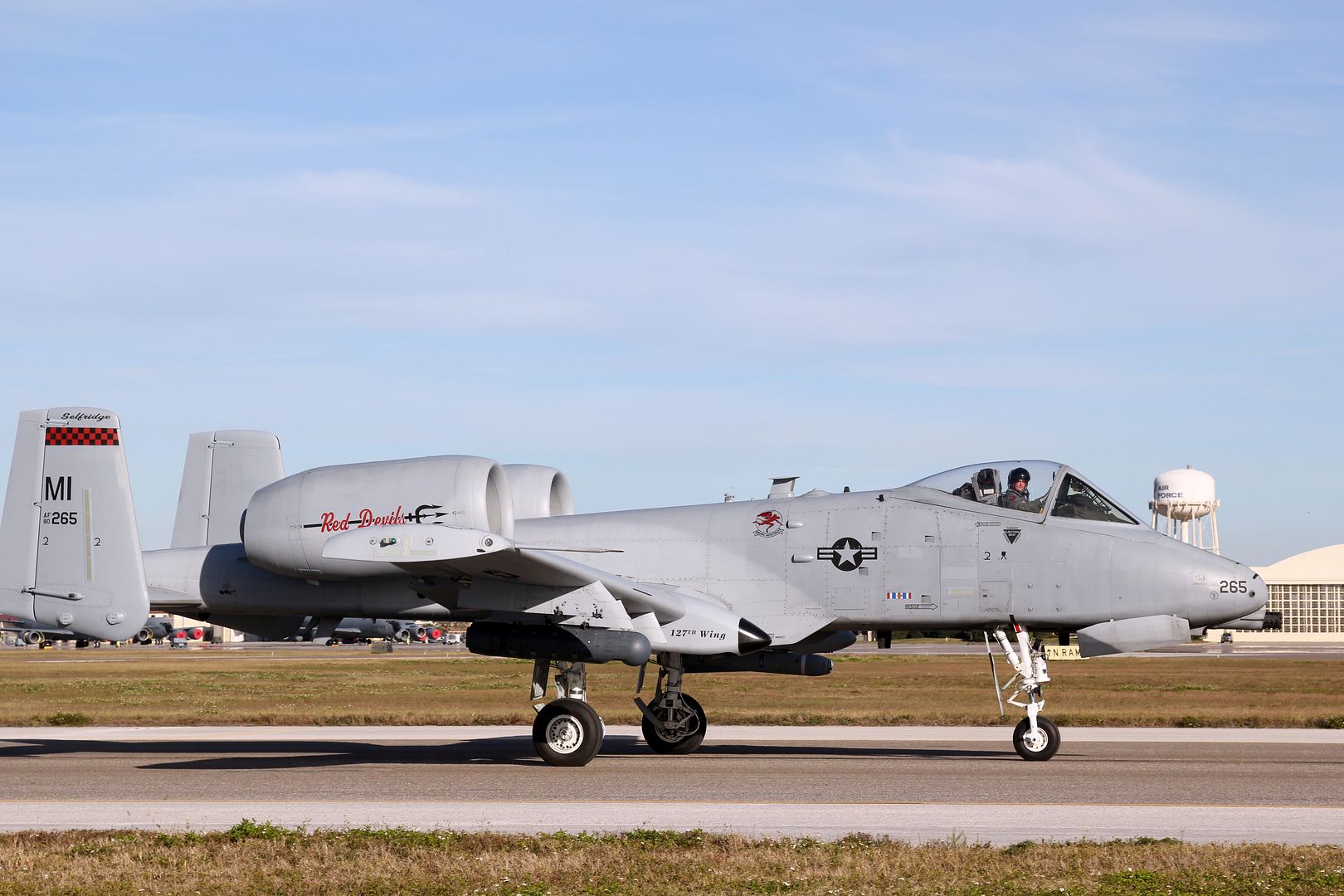
An F-35B Lightning II belonging to Marine Fighter Attack Squadron 121 sits ready for launch aboard the amphibious assault ship USS Wasp (LHD 1) during training at sea, Jan. 19, 2019. Naval aviators with VMFA-121 completed a series of take-off and landings during the training to sharpen their capabilities as the fixed-wing aviation asset of the 31st Marine Expeditionary Unit's Aviation Combat Element - the squadron flies the Marine Corps' newest, most advanced multi-role fighter, the F-35B. The 31st MEU, the Marine Corps? only continuously forward-deployed MEU partnering with the Wasp Amphibious Ready Group, provides a flexible and lethal force ready to perform a wide range of military operations as the premier crisis response force in the Indo-Pacific region. (U.S. Marine Corps photo by Gunnery Sgt. T. T. Parish/Released)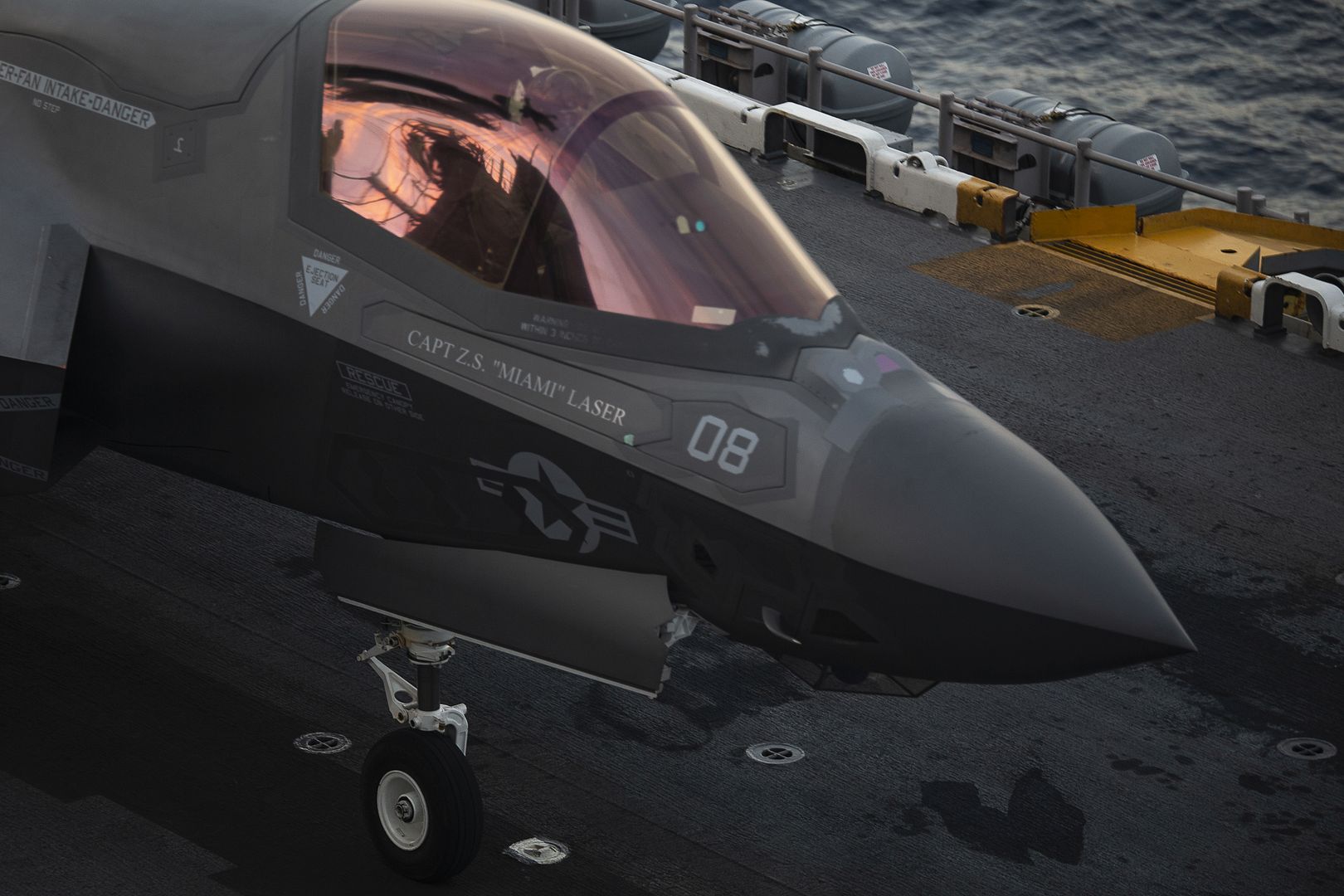
PHILIPPINE SEA (Jan. 18, 2019) ? A CH-53E Super Stallion, assigned to Marine Medium Tilt rotor Squadron (VMM) 262 (Reinforced) stands by on the flight deck during flight operations aboard the amphibious dock landing ship USS Ashland (LSD 48). Ashland, part of the Wasp Amphibious Ready Group, with embarked 31st Marine Expeditionary Unit, is operating in the Indo-Pacific region to enhance interoperability with partners and serve as a ready-response force for any type of contingency. (U.S. Navy photo by Mass Communication Specialist 2nd Class Markus Castaneda)
Cebu Pacific, the largest low-cost carrier in the Philippines has taken delivery of its first A321neo.
The new addition complements the Manila-based airline?s Airbus fleet, which currently includes 43 A320 Family aircraft and eight A330-300 widebodies.
Cebu Pacific has ordered 32 A321neo aircraft directly from Airbus, and will receive another five A320neo leased from Dublin-based Avolon. These will support the carrier?s expansion and fleet renewal programme.
Selected for their outstanding operational efficiency, comfort and range, these new-generation single-aisle aircraft will allow the fast-growing carrier to expand its Asia-Pacific network.
The A321neo aircraft for Cebu Pacific features 236 seats in a single-class configuration. The aircraft is powered by Pratt and Whitney PurePower GTF engines.
The A320neo and its derivative aircraft family members are the world?s best-selling single aisle aircraft, with over 6,100 orders from over 100 customers since its launch in 2010. It has pioneered and incorporated the latest technologies, including its new generation engines and the industry's reference cabin design, delivering 20 percent fuel cost savings alone. The A320neo also offers significant environmental benefits, with nearly 50 percent reduction in noise footprint compared to previous generation aircraft.
About Airbus
Airbus is a global leader in aeronautics, space and related services. In 2017 it generated revenues of ? 59 billion restated for IFRS 15 and employed a workforce of around 129,000. Airbus offers the most comprehensive range of passenger airliners from 100 to more than 600 seats. Airbus is also a European leader providing tanker, combat, transport and mission aircraft, as well as one of the world?s leading space companies. In helicopters, Airbus provides the most efficient civil and military rotorcraft solutions worldwide.
Leading aircraft lessor SMBC Aviation Capital has boosted its total order book for the A320neo Family to 181 aircraft after signing a firm order for an additional 65 A320neo Family aircraft (15 A321neo and 50 A320neo). The order was finalised in 2018 and included in the year-end order figures.
In addition, the agreement includes an upsizing of 15 A320neo from a pre-existing order to 15 of the largest member of the single-aisle Family ? the A321neo ? taking SMBC Aviation Capital?s total for the type to 30. With its unbeatable seat mile cost, longer range and wider cabin, the A321neo offers airlines the flexibility to expand their networks using wide-body cabin products on new longer-haul routes which were not previously possible with a single-aisle jetliner.
?Demand for the latest technology aircraft has been strong both from our existing and new customers, hence our decision today to proceed with this order. In the current environment, airlines are seeking more fuel efficient aircraft. The make-up of our order book positions us very well for the future to deliver on those needs. We have a strong relationship with Airbus and we look forward to working with them to continue to deliver for our customers long into the future,? said Peter Barrett, CEO, SMBC Aviation Capital.
The order for 65 is in addition to an earlier agreement for six A320neo made in March, bringing the total number of A320neo Family ordered in 2018 to 71.
?As one of the world?s leading aircraft lessors, SMBC Aviation Capital?s repeat order demonstrates its financial astuteness in making wise investments in the A320neo Family. In 2018, the direct leasing market represented over 30% of our 800 worldwide deliveries ? as much as Europe and the Americas combined,? said Christian Scherer, Airbus Chief Commercial Officer.
The A320neo Family incorporates the very latest technologies including new generation engines, Sharklets and cabin efficiency enablers, which together deliver 20% fuel savings by 2020. With more than 6,500 orders received from over 100 customers since its launch in 2010, the A320neo Family has captured some 60 percent share of the market.
Personnel and aircraft from across the RAF have started to leave the UK for Exercise Red Flag, the most challenging warfighting exercise of the year.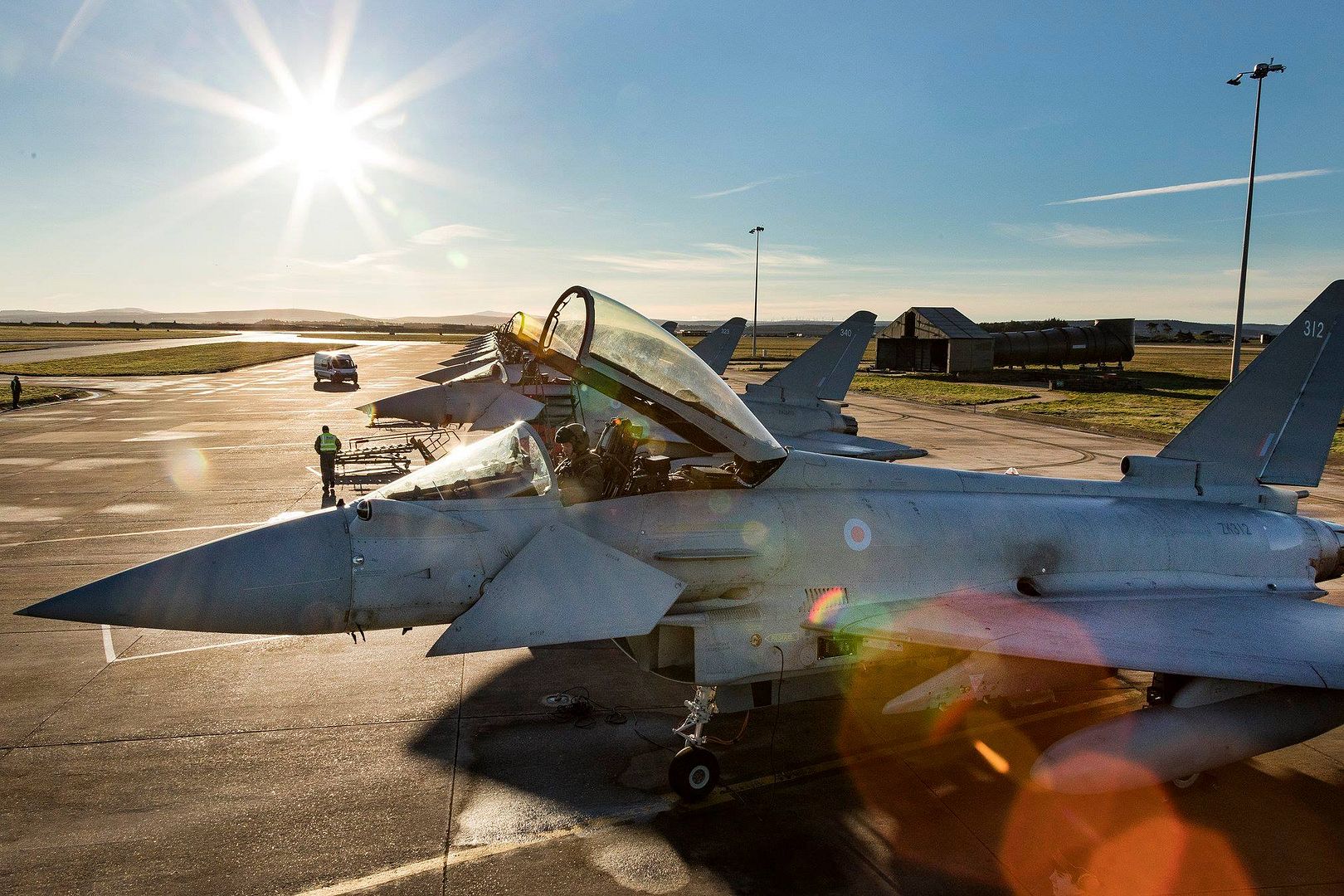
Typhoons from RAF Lossiemouth, Sentry and Rivet Joint from RAF Waddington, Voyager from RAF Brize Norton and personnel from units stationed across the country will train at Nellis Air Force Base in Nevada alongside counterparts from across the US Armed Forces and the Royal Australian Air Force.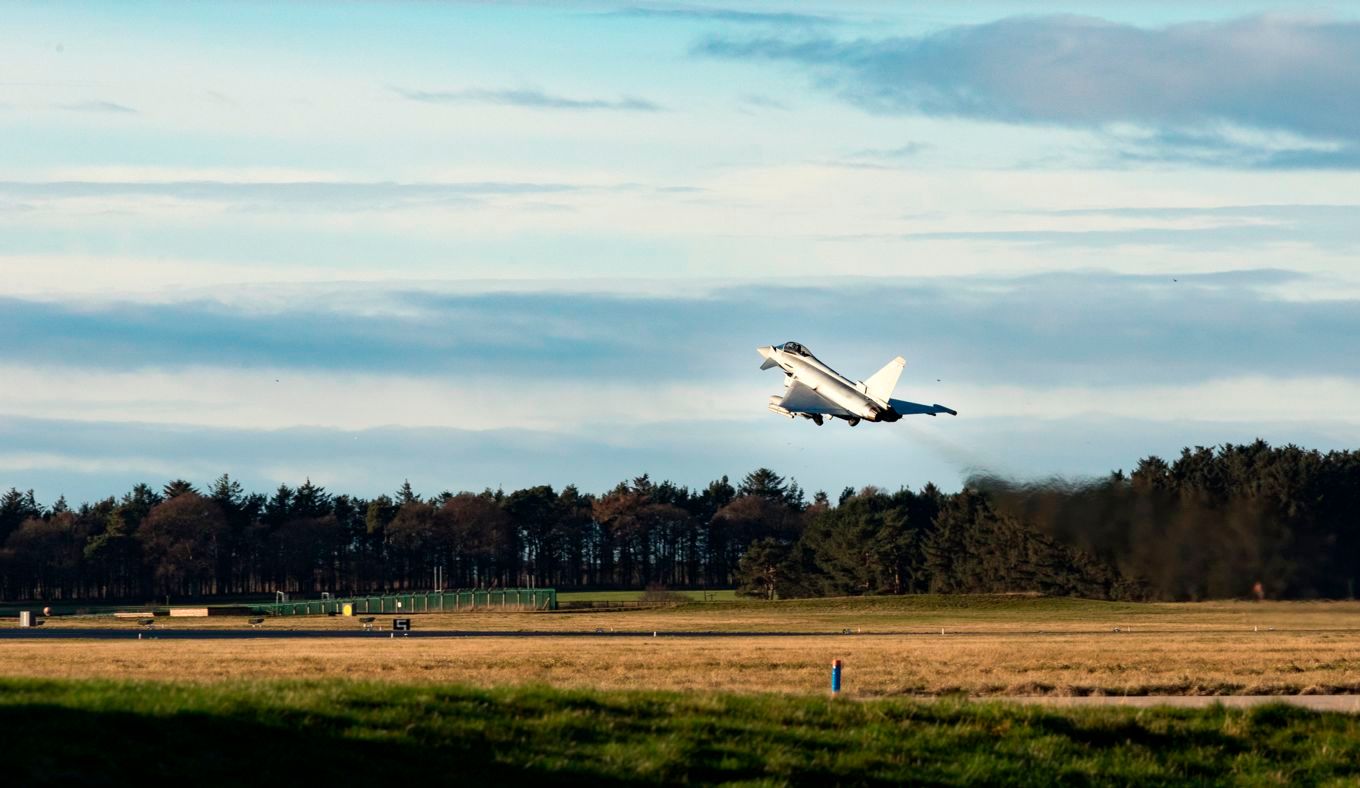
-
 Main AdminA Panther anti-submarine helicopter, assigned to France?s Marine Nationale air defense destroyer FS Cassard (D 614), prepares to land on the flight deck of the aircraft carrier USS John C. Stennis (CVN 74) while transiting the Strait of Hormuz, Jan. 20, 2019. The John C. Stennis Carrier Strike Group is deployed to the U.S. 5th Fleet area of operations in support of naval operations to ensure maritime stability and security in the Central Region, connecting the Mediterranean and the Pacific through the western Indian Ocean and three strategic choke points. (U.S. Navy photo by Mass Communication Specialist 3rd Class Skyler Okerman)
Main AdminA Panther anti-submarine helicopter, assigned to France?s Marine Nationale air defense destroyer FS Cassard (D 614), prepares to land on the flight deck of the aircraft carrier USS John C. Stennis (CVN 74) while transiting the Strait of Hormuz, Jan. 20, 2019. The John C. Stennis Carrier Strike Group is deployed to the U.S. 5th Fleet area of operations in support of naval operations to ensure maritime stability and security in the Central Region, connecting the Mediterranean and the Pacific through the western Indian Ocean and three strategic choke points. (U.S. Navy photo by Mass Communication Specialist 3rd Class Skyler Okerman)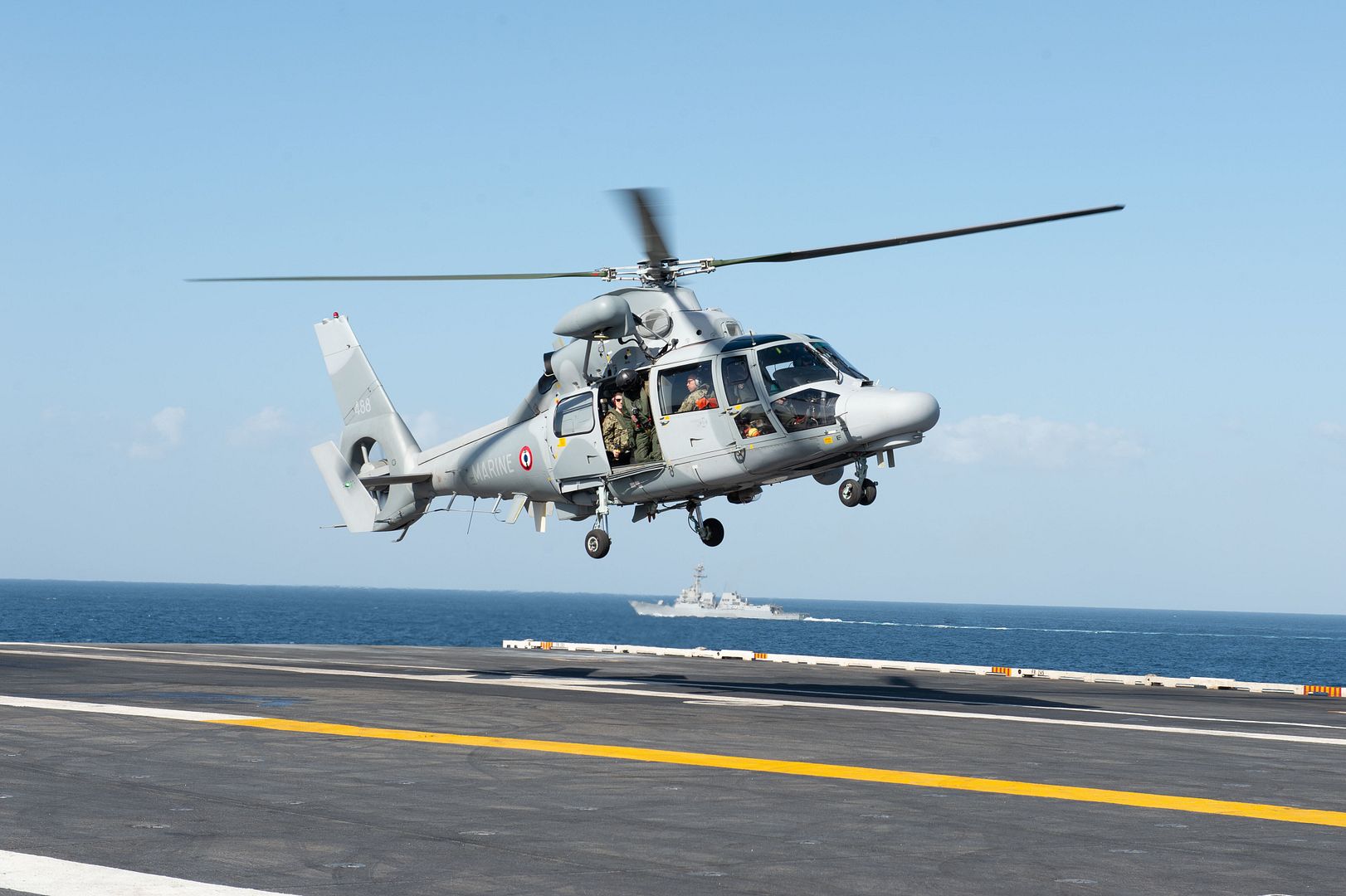
Luke Air Force Base, Ariz. -- Capt. Andrew ?Dojo? Olson, F-35A Lightning II Demonstration Team commander and pilot has spent much of 2019 the last three months, designing, developing, and practicing the maneuvers of the all new demo profile.
A total of 14 maneuvers make up the aerobatic performance, many which have never been seen by public audiences.
?The manuevers showcase the full envelope of the F-35,? said Olson. ?On the slow end, we?ll get down to less than 100 miles per hour of air speed, just barely hanging there but in complete control. Then on the high end, we?re going to take it up to just below the sound barrier for the high speed pass. We?re also going to be pulling up to 9Gs, nine times the force of gravity, and carving the jet into the air at huge angles of attack of more than 50 degrees.?
Some maneuvers in the demonstration include: -High Alpha Half Cuban -Weapons Bay Doors Pass -Minimum Radius Turn to High Alpha Loop -Pedal Turn -Square Loop -Slow Speed to Power Climb with a Split-S Reposition -Inverted to Inverted Roll -Tactical Pitch
Each air show demonstration is scheduled to last approximately 30 minutes. Half of the show will be spent performing jaw-dropping maneuvers and the other half performing the Heritage Flight profile with select vintage war planes.
Olson said that he does not have a favorite maneuver but spoke about the Pedal Turn with enthusiasm.
?When you watch the ground footage from the pedal turn, it?s almost unbelievable to witness what you?re seeing,? he said. ?Any inverted maneuver, where you?re up-side-down at negative 1G and hanging from the straps in the seat, is a really fun maneuver to do. You?re seeing the world from a whole different perspective.?
Olson mentioned that hanging in the straps is not something often done in fighter aircraft, so seeing this one-of-a-kind performance is sure to be a spectacle. To achieve such a unique demo profile, he has been preparing in many ways.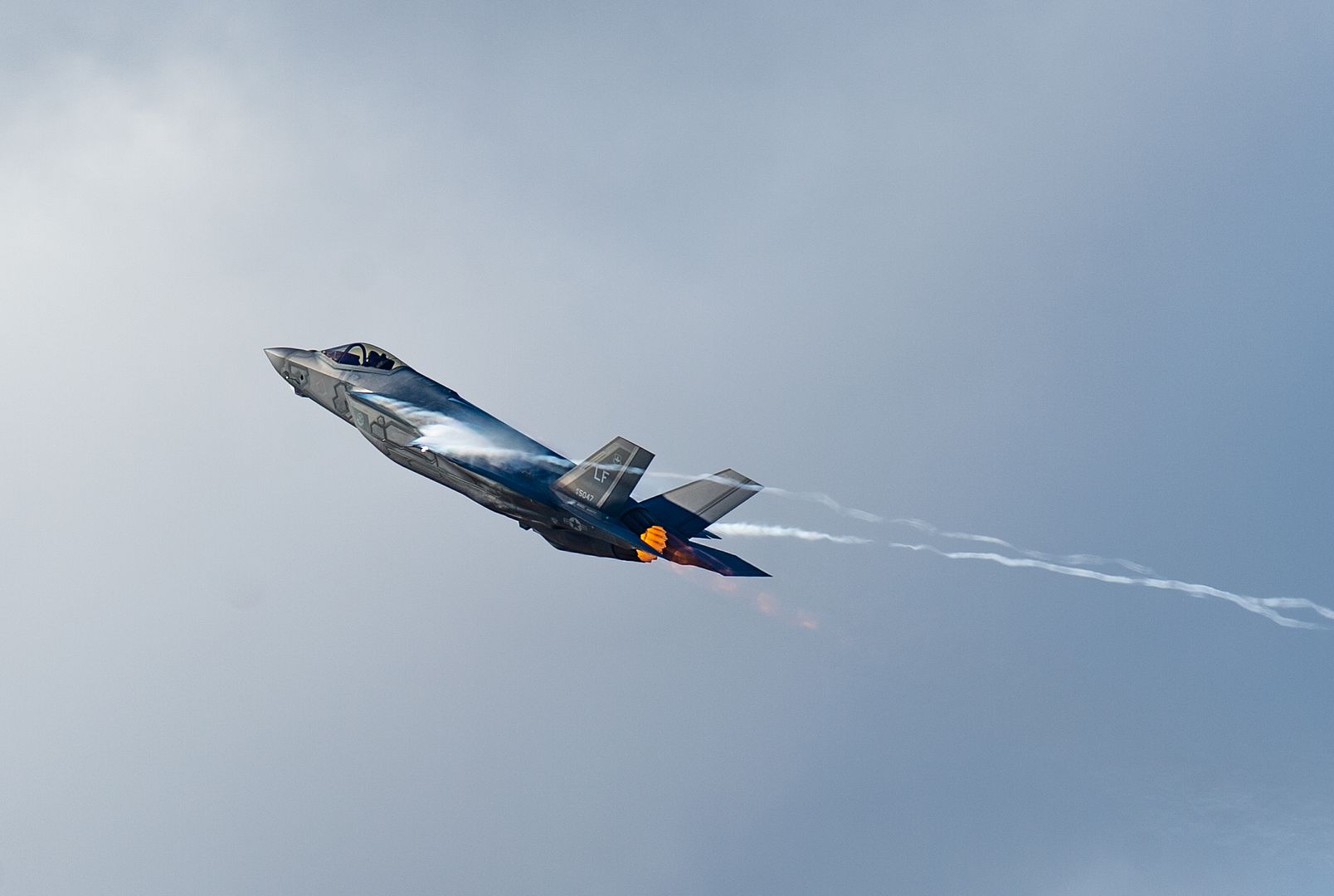
?By the time it?s done, we?ll be at close to 30 training flights,? Olson said. ?Countless hours in the simulator, academics on the ground before the first flight ever occurred and then after every training event there is careful analysis of the video from both the ground and in the cockpit.?
Viewing the videos after each flight has proven essential to this historic demo pilot?s training as he continues to refine his skills in the aircraft.
?I?m just a human trying to fly this thing as best as I can, making sure my mistakes are small, manageable and correctable every time,? Olson said.
And just as a lot of flying time is important to the training, the simple things are just as essential to a high-performance athlete like Olson.
He says getting in the gym, staying fit, eating right and getting plenty of sleep are just a few of the things he keeps in mind, saying the flight is a workout in-and-of-itself. ?
Other demo teams may give you a sample of one or two of these maneuvers, but nowhere else will you see all of the best maneuvers on the planet combined into one epic demo,? said Olson. ?There?s no filler in this flight. It?s a light the afterburner and rage for 30 minutes kind of show.?
The F-35 Demo Team is scheduled to perform at air shows across the country in 2019. During their historic inaugural season, Olson and the team of 6 maintainers and support personnel plan to interact with as many air show attendees as they can. So get your sunscreen out and earplugs in because 2019 is shaping up to be the most intense air show season ever.
(U.S. Air Force photo's by Senior Airman Alexander Cook)
-
 Main Admin01.22.2019
Main Admin01.22.2019
A Blackhawk helicopter crew prepares to take off just as the morning sun breaks the horizon. The Michigan National Guard crew is flying a group of pilots from their State Partner Latvia to northern Michigan for aviation training.
Photo by Lt. Col. John Hall.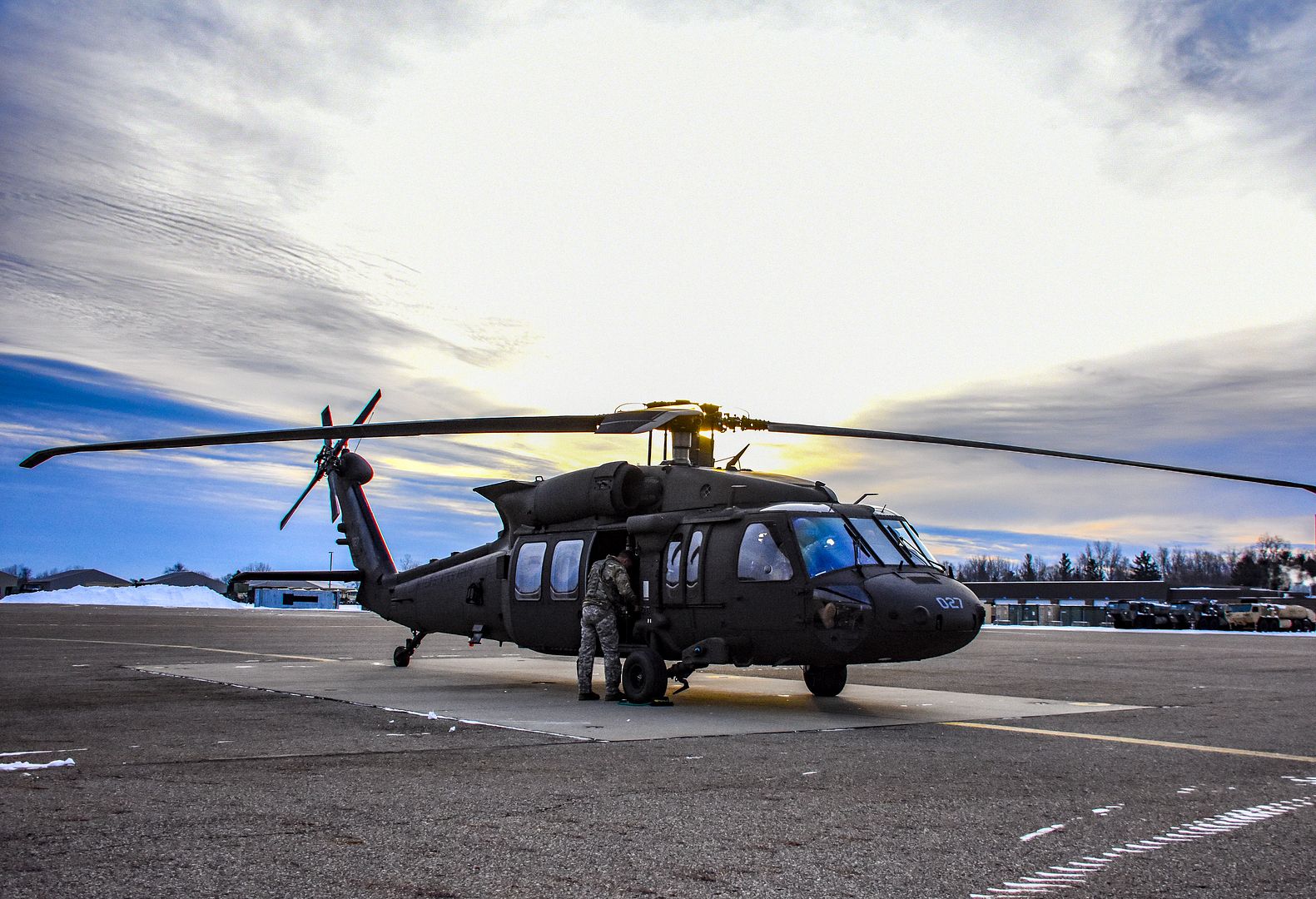
U.S. 5TH FLEET AREA OF OPERATIONS (Jan. 22, 2019) ? Boatswain?s Mate 3rd Class Christopher Caprara salutes a CH-53 Super Stallion helicopter as it takes off from the flight deck of the Whidbey Island-class amphibious dock landing ship USS Fort McHenry (LSD 43) Jan. 22, 2019. Fort McHenry is part of the Kearsarge Amphibious Ready Group and, with the embarked 22nd Marine Expeditionary Unit, is deployed to the U.S. 5th Fleet area of operations in support of naval operations to ensure maritime stability and security in the central region, connecting the Mediterranean and the Pacific through the western Indian Ocean and three strategic choke points. (U.S. Navy photo by Mass Communication Specialist 3rd Class Chris Roys/Released)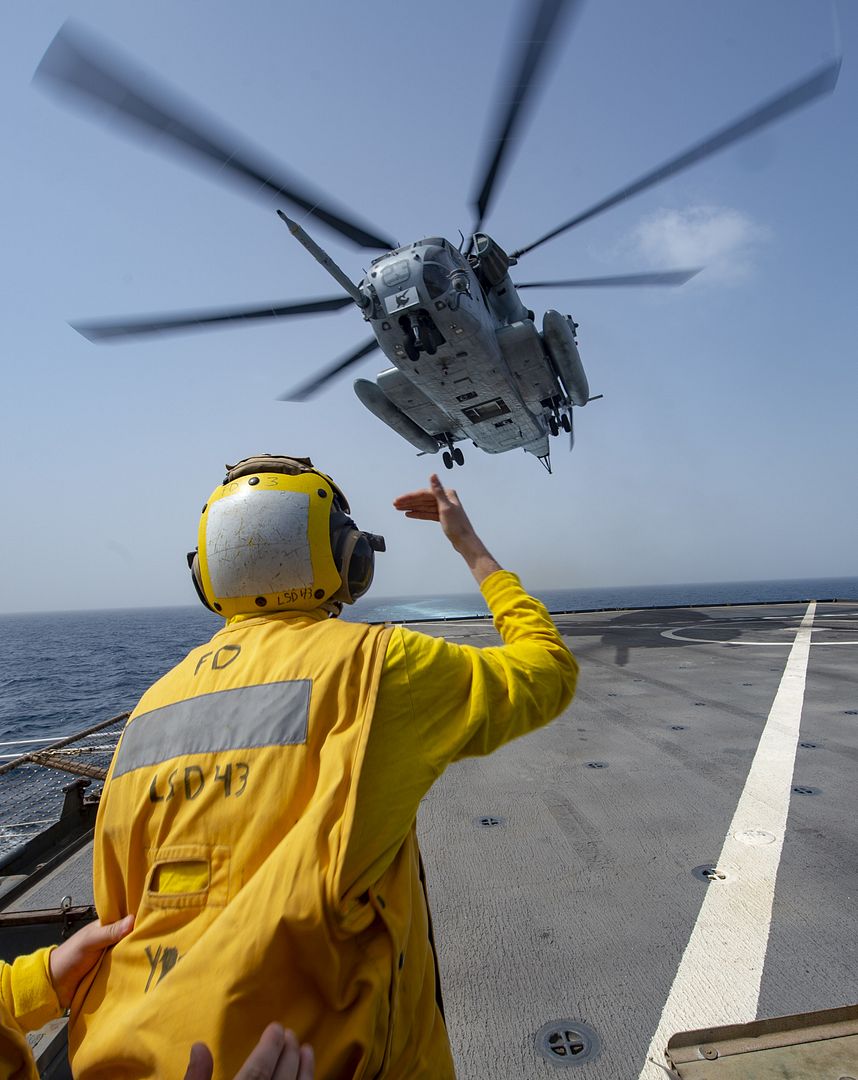
PHILIPPINE SEA (Jan. 22, 2019) A MV-22 Osprey, assigned to the "Flying Tigers" of Marine Medium Tiltrotor Squadron (VMM) 262 (Reinforced), takes off from the flight deck of the amphibious assault ship USS Wasp (LHD 1). Wasp, flagship of Wasp Amphibious Ready Group, with embarked 31st Marine Expeditionary Unit, is operating in the Indo-Pacific region to enhance interoperability with partners and serve as a ready-response force for any type of contingency. (U.S. Navy photo by Mass Communication Specialist 1st Class Daniel Barker/Released)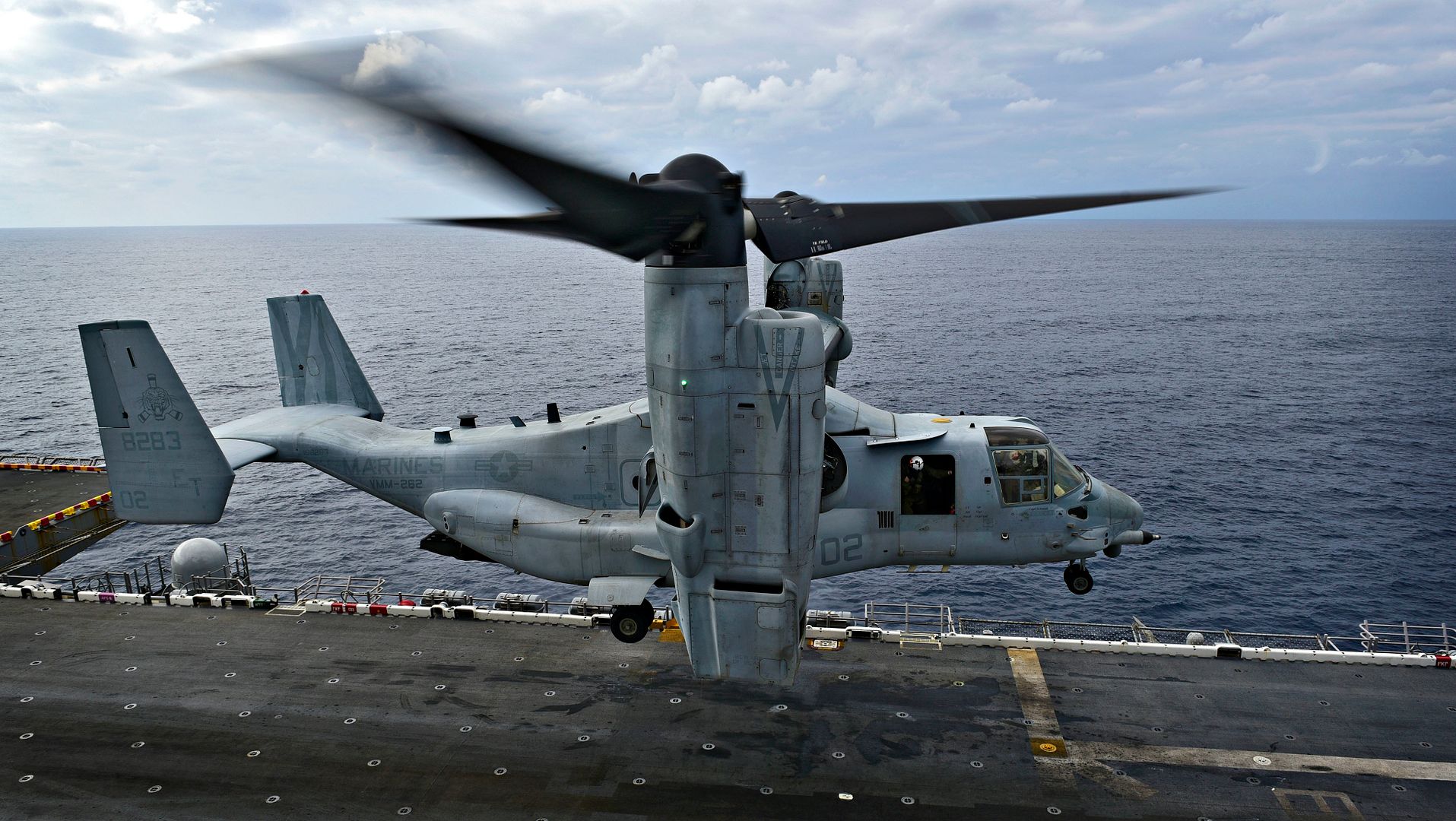
MANASSAS, Va., Jan. 23, 2019 /PRNewswire/ -- Boeing [NYSE: BA] yesterday successfully completed the first test flight of its autonomous passenger air vehicle (PAV) prototype in Manassas, Virginia. Boeing NeXt, which leads the company's urban air mobility efforts, utilized Boeing subsidiary Aurora Flight Sciences to design and develop the electric vertical takeoff and landing (eVTOL) aircraft and will continue testing to advance the safety and reliability of on-demand autonomous air transportation.
The PAV prototype completed a controlled takeoff, hover and landing during the flight, which tested the vehicle's autonomous functions and ground control systems. Future flights will test forward, wing-borne flight, as well as the transition phase between vertical and forward-flight modes. This transition phase is typically the most significant engineering challenge for any high-speed VTOL aircraft.
"In one year, we have progressed from a conceptual design to a flying prototype," said Boeing Chief Technology Officer Greg Hyslop. "Boeing's expertise and innovation have been critical in developing aviation as the world's safest and most efficient form of transportation, and we will continue to lead with a safe, innovative and responsible approach to new mobility solutions."
Powered by an electric propulsion system, the PAV prototype is designed for fully autonomous flight from takeoff to landing, with a range of up to 50 miles (80.47 kilometers). Measuring 30 feet (9.14 meters) long and 28 feet (8.53 meters) wide, its advanced airframe integrates the propulsion and wing systems to achieve efficient hover and forward flight.
"This is what revolution looks like, and it's because of autonomy," said John Langford, president and chief executive officer of Aurora Flight Sciences. "Certifiable autonomy is going to make quiet, clean and safe urban air mobility possible."
The test flight represents the latest milestone for Boeing NeXt. The division works with regulatory agencies and industry partners to lead the responsible introduction of a new mobility ecosystem and ensure a future where autonomous and piloted air vehicles safely coexist. In addition to the PAV, the Boeing NeXt portfolio includes an unmanned fully electric cargo air vehicle (CAV) designed to transport up to 500 pounds (226.80 kilograms) and other urban, regional and global mobility platforms. The CAV completed its first indoor flight last year and will transition to outdoor flight testing in 2019.
"Boeing was there when the aviation industry was born and in our second century, we will unlock the potential of the urban air mobility market," said Steve Nordlund, vice president and general manager of Boeing NeXt. "From building air vehicles to airspace integration, we will usher in a future of safe, low-stress mobility in cities and regions around the world."
-
 Main Admin01.22.2019
Main Admin01.22.2019
A B-2 Spirit bomber, deployed from Whiteman Air Force Base, Missouri, is prepared for a training mission at Joint Base Pearl Harbor-Hickam, Hawaii, Jan. 17, 2019. Three B-2 bombers and more than 200 Airmen deployed here in support of U.S. Strategic Command?s Bomber Task Force mission. Bomber aircraft regularly rotate through the Indo-Pacific region to integrate capabilities with key regional partners and maintain a high state of aircrew proficiency. (U.S. Air Force photo's by Senior Airman Thomas Barley)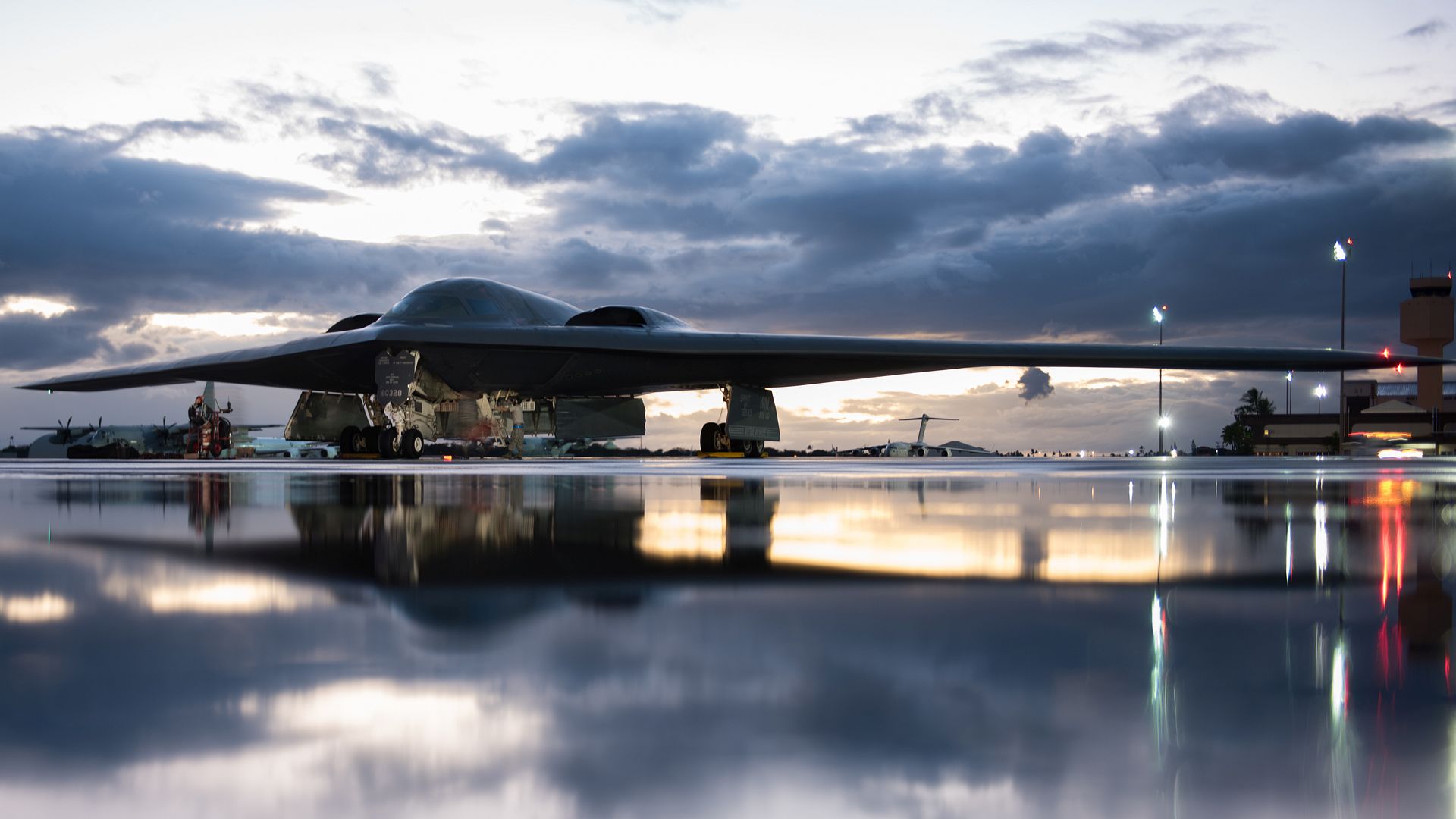
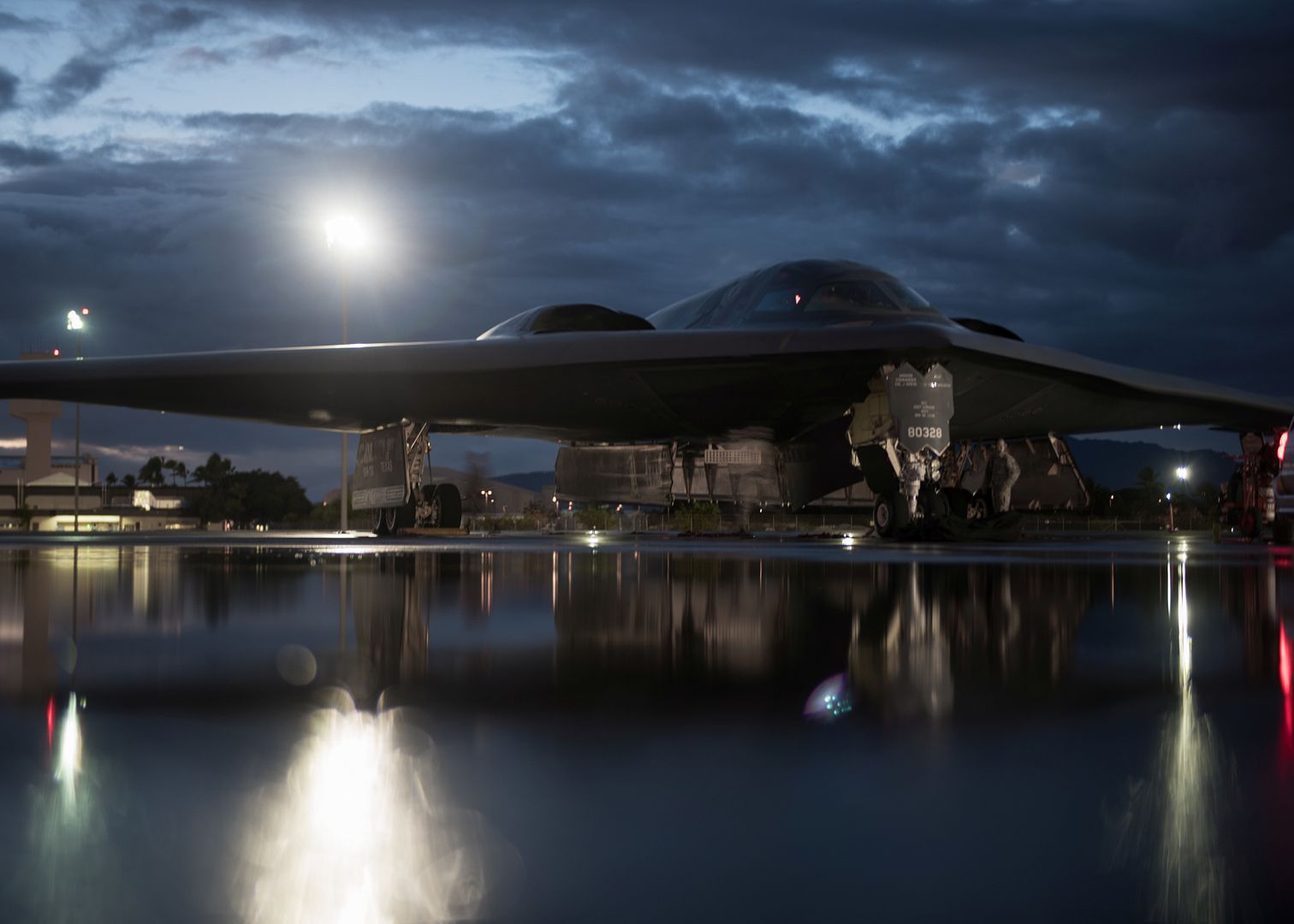
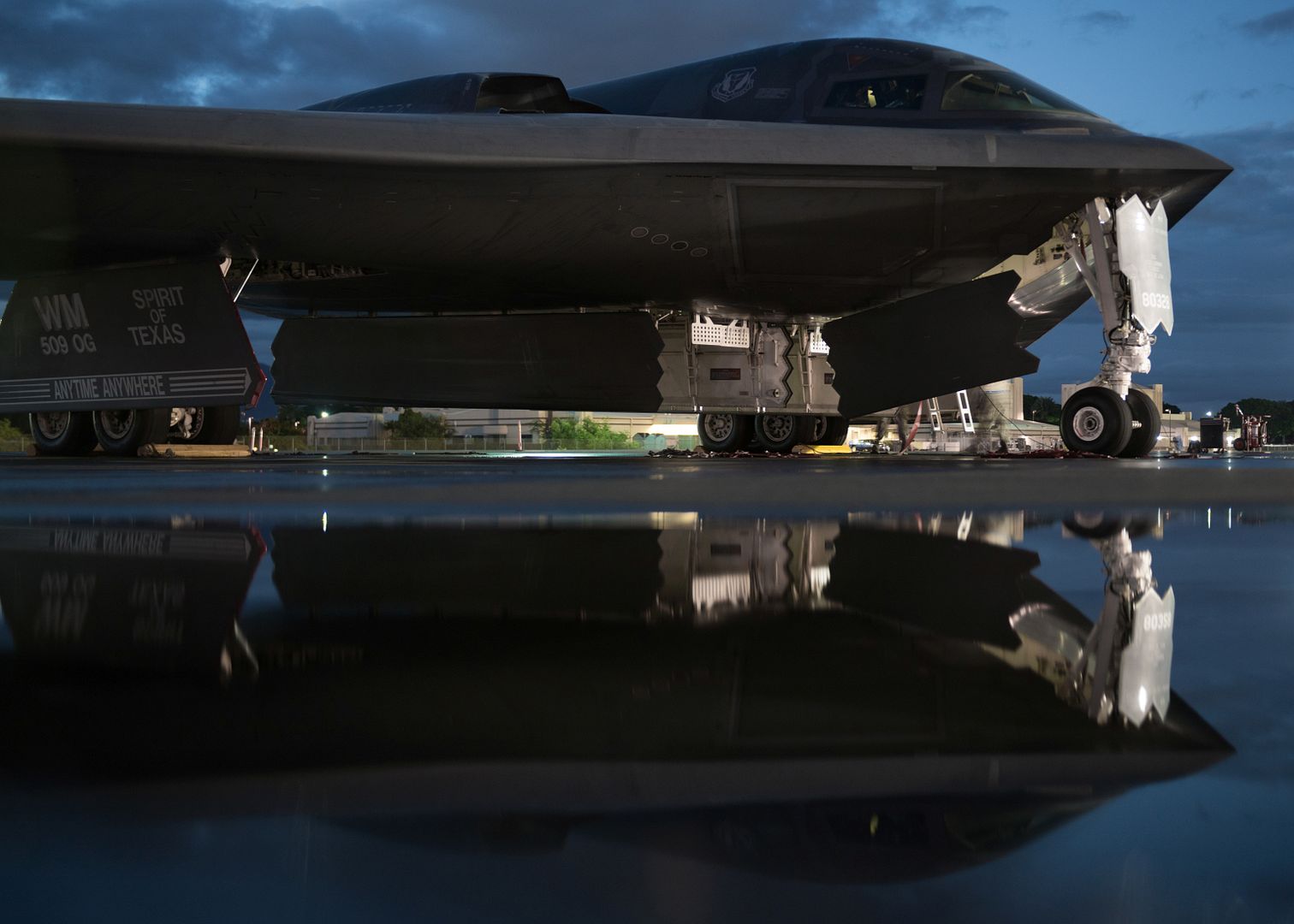
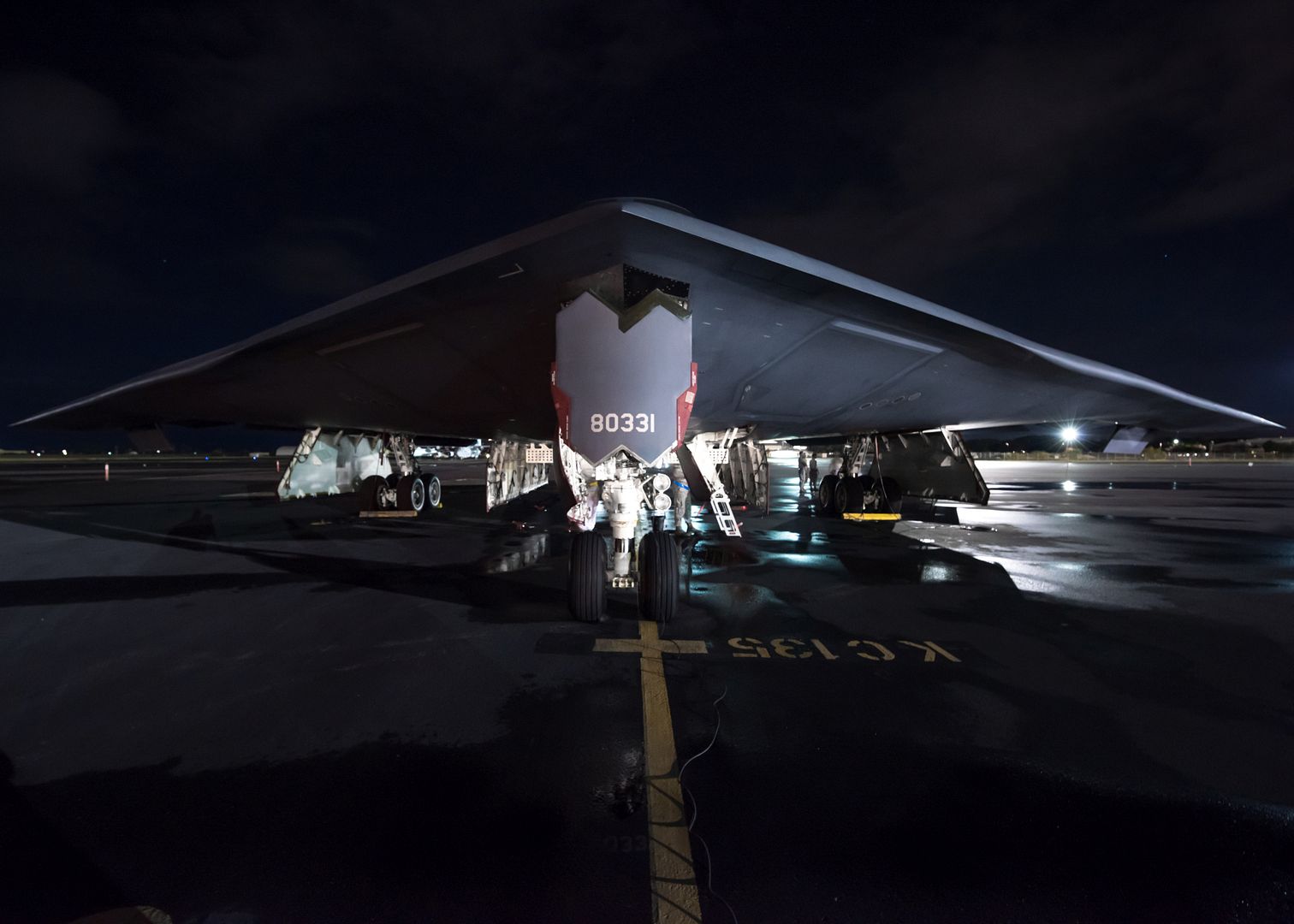
58 Fuelie? a KC-135 aircraft assigned to the 171st Air Refueling Wing near Pittsburgh sits on the ramp after a drastic drop in temperatures changed the rain to snowfall and covered the aircraft Jan. 24, 2019. The KC-135 aircraft will be deiced in order to prepare the aircraft for flight. (U.S. Air National Guard photo by Staff Sgt. Bryan Hoover)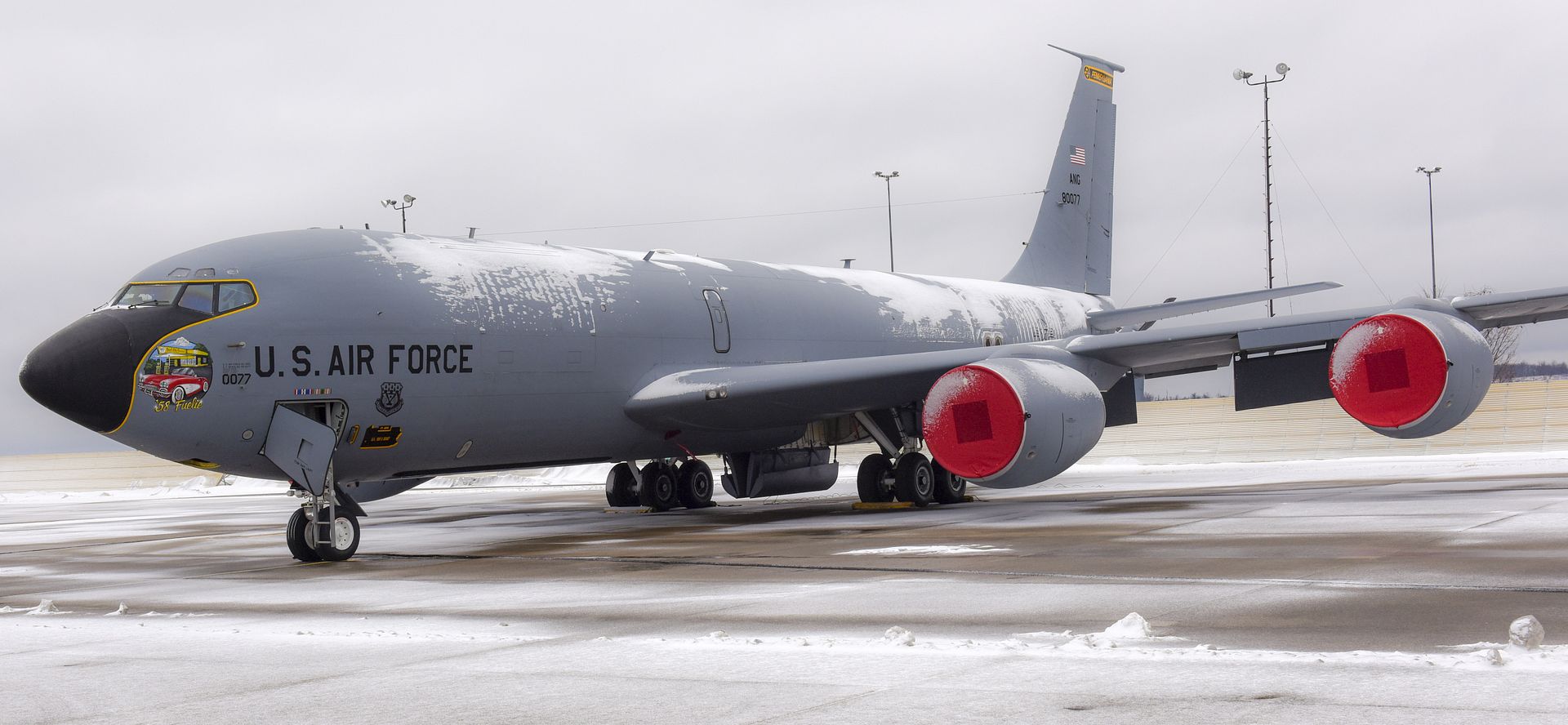
A CH-53E Super Stallion helicopter prepares to land during simulated Noncombatant Evacuation Operations, Camp Hansen, Okinawa, Japan, Jan. 23, 2019. CLB-31, the Logistics Combat Element for the 31st Marine Expeditionary Unit, provides security, logistics and transportation during NEO completion. The 31st MEU, the Marine Corps? only continuously forward-deployed MEU partnering with the Wasp Amphibious Ready Group, provides a flexible and lethal force ready to perform a wide range of military operations as the premier crisis response force in the Indo-Pacific region. (Official Marine Corps photo by Lance Cpl. Harrison C. Rakhshani/Released)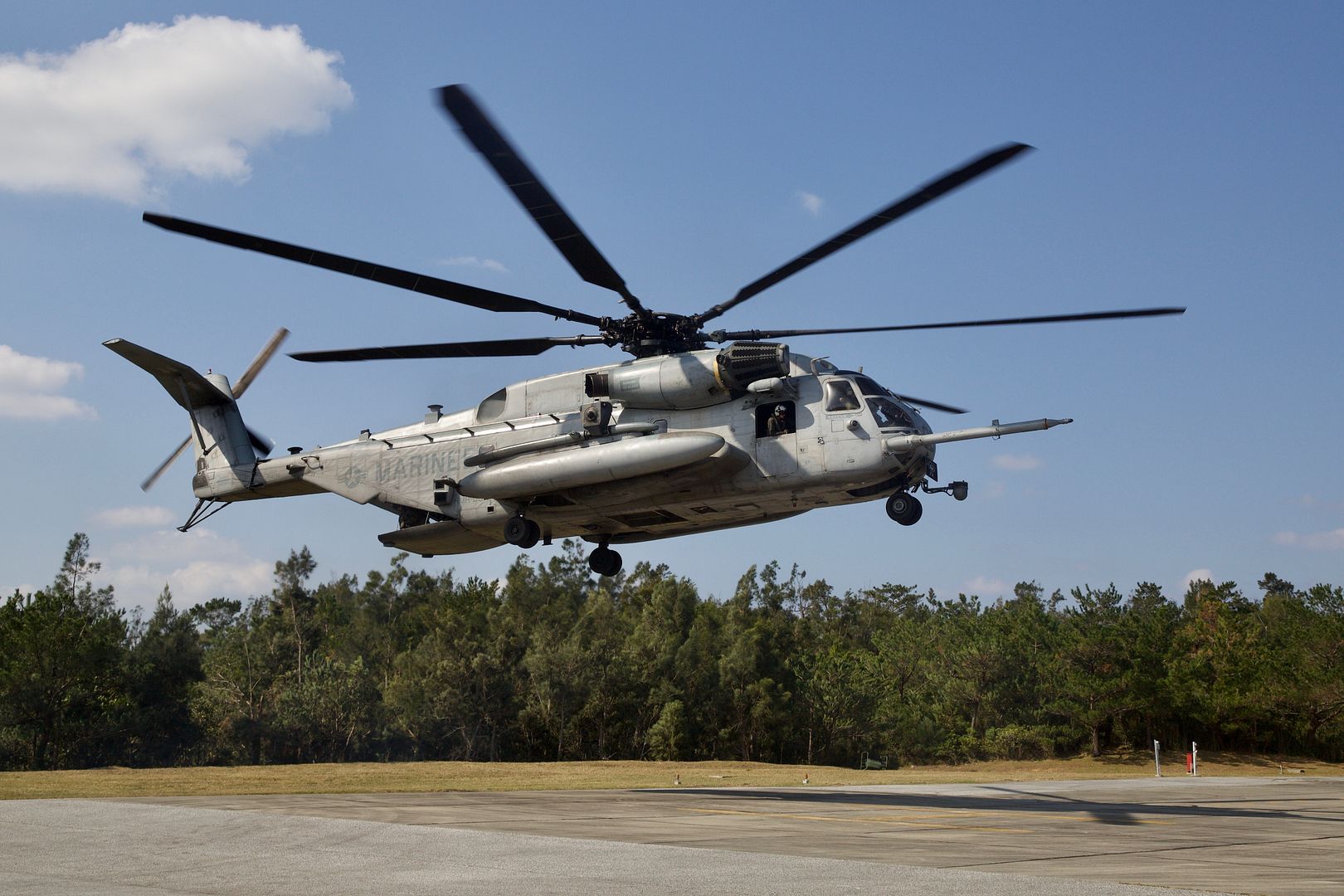
An MV-22B Osprey tiltrotor aircraft belonging to Marine Medium Tiltrotor Squadron 262 (Reinforced) approaches the amphibious assault ship USS Wasp (LHD 1) during flight operations underway in the Philippine Sea, Jan. 23, 2019. Naval aviators with VMM-262 (Rein.), the tiltrotor component of the 31st Marine Expeditionary Unit's Aviation Combat Element, perform a wide variety of aviation missions for the 31st MEU, including troop transport, heavy and medium lift, fixed-wing attack support and aerial reconnaissance. The 31st MEU, the Marine Corps? only continuously forward-deployed MEU partnering with the Wasp Amphibious Ready Group, provides a flexible and lethal force ready to perform a wide range of military operations as the premier crisis response force in the Indo-Pacific region. (U.S. Marine Corps photo's by Gunnery Sgt. T. T. Parish/Released)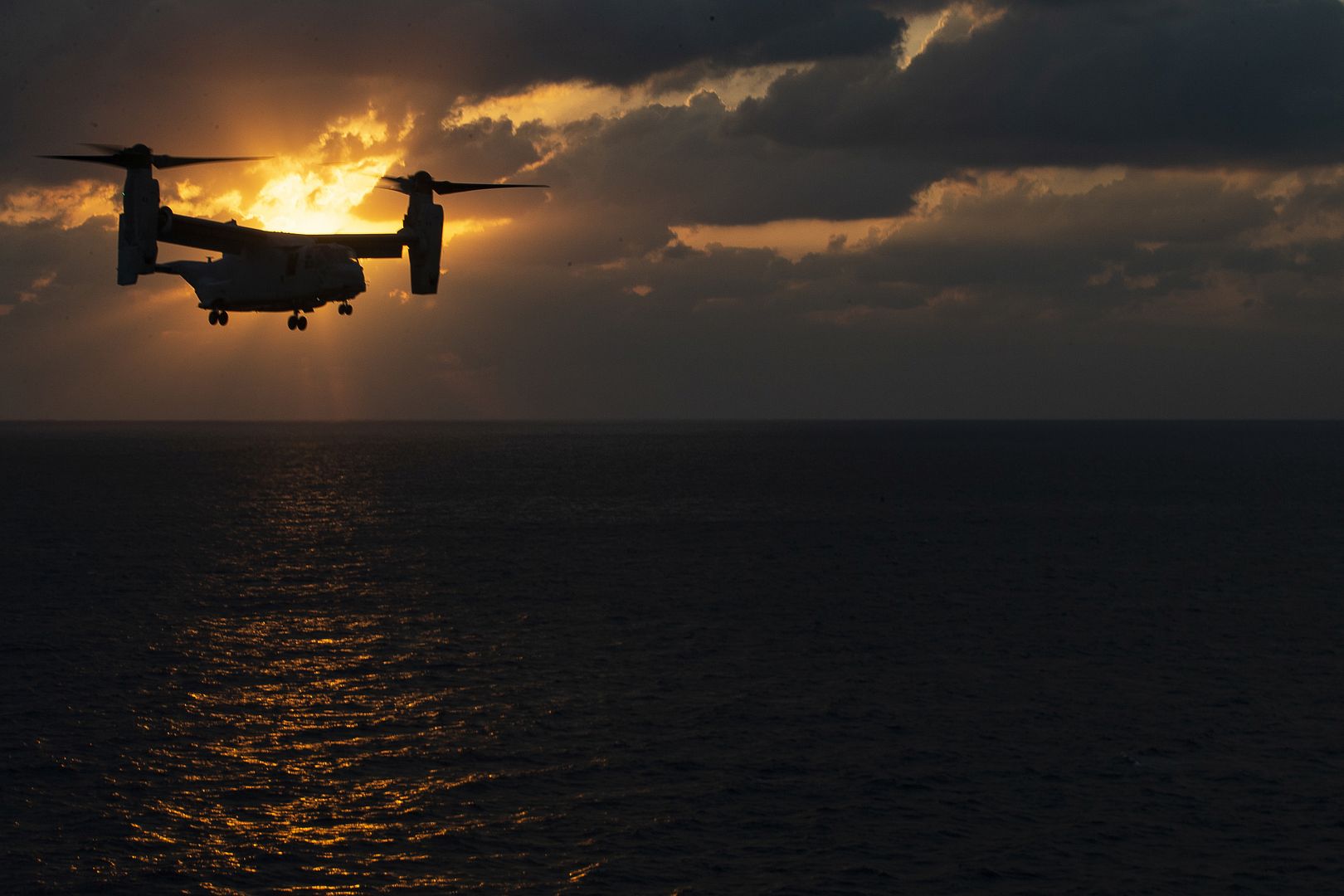
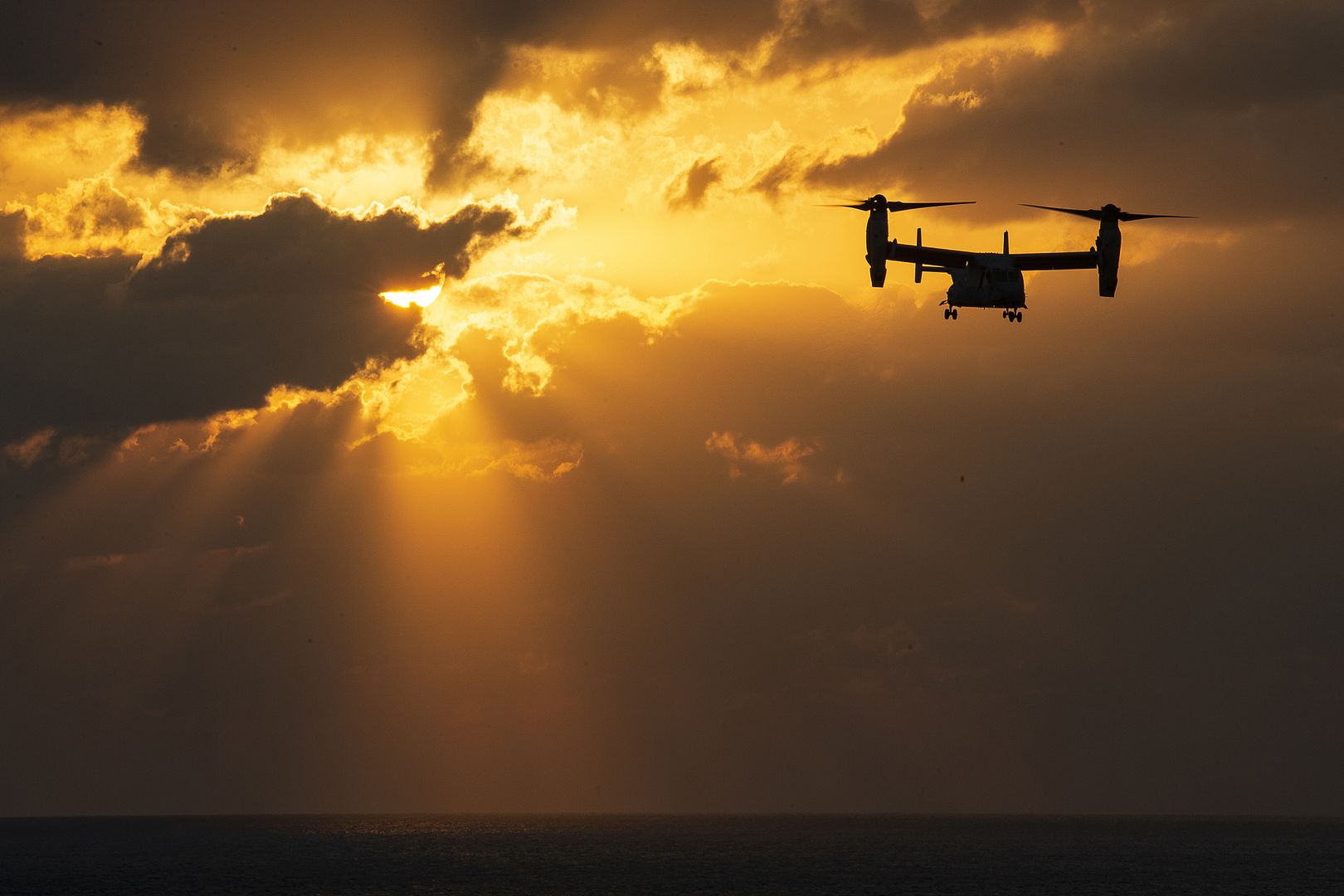
EDWARDS AIR FORCE BASE, Calif. --
Late last year, the Air Force Test Center and Team Edwards stepped up to help the U.S. Navy and Royal Australian Navy with a critical test off the coast of California.
The Navy was assisting the RAN in testing the combat system on their newest guided missile destroyer, the HMAS Hobart (DDG 39). Due to a conflict in scheduling, the navies were left in need of F-16 Fighting Falcons that were certified to fire AQM-37D supersonic targets.
Responding to the request for assistance, Edwards AFB sent two of its F-16s, a KC-135 Stratotanker and 412th Maintenance Squadron Airmen to Naval Air Station Point Mugu, California, during the last week of November. The maintainers teamed up with members of the Naval Air Warfare Center Weapons Division's Threat/Targets Department at Point Mugu to inspect and load the AQM-37Ds on to the Edwards F-16s.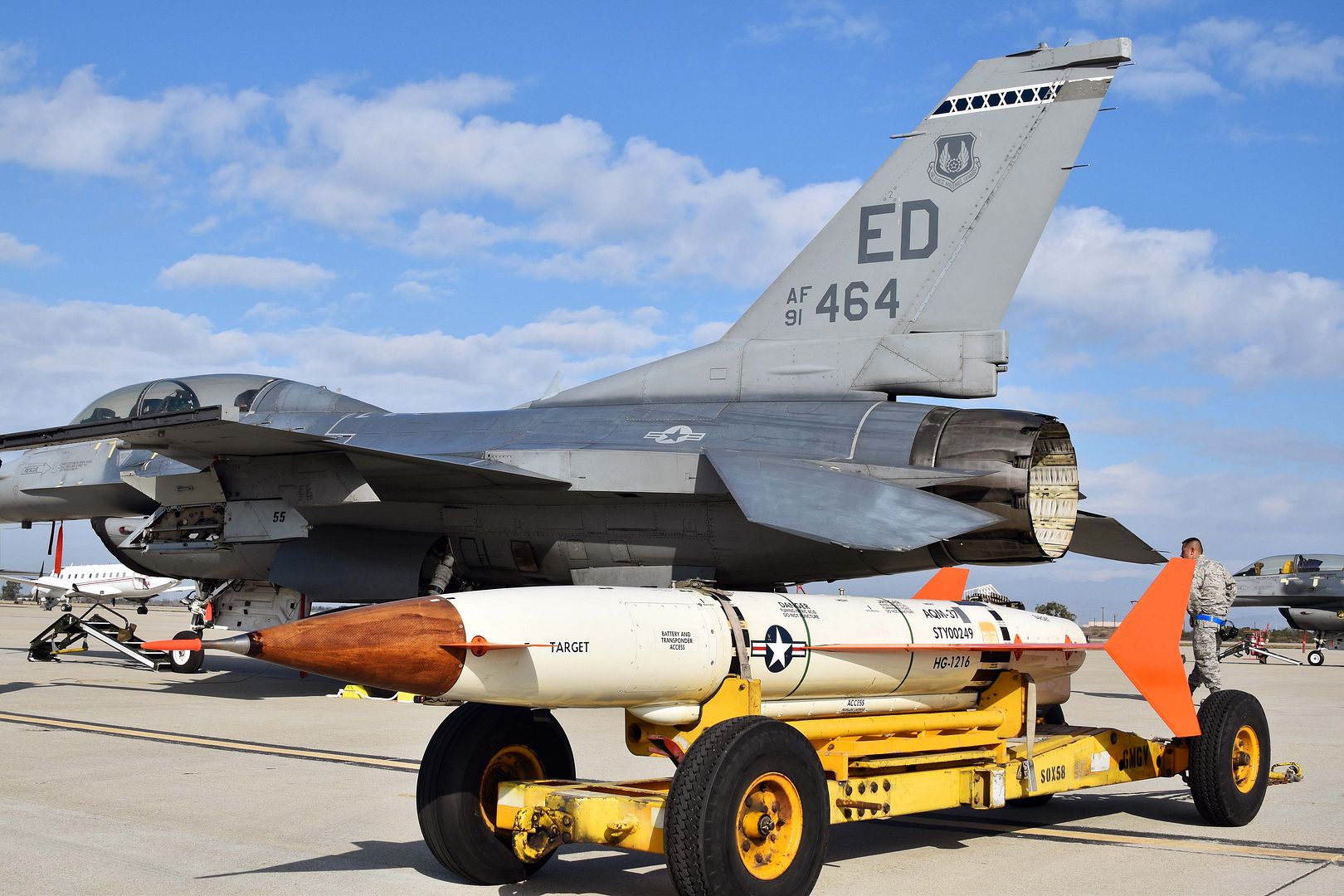
As a result, the HMAS Hobart was able complete its tests over the Point Mugu Sea Range without delaying her return to Australia with unfinished business.
?Edwards AFB was instrumental in the successful completion of critical International Test and Evaluation events that were being conducted by the U.S. Navy (Program Executive Offices Integrated Warfare Systems) and the Royal Australian Navy, by providing two F-16 aircraft and a KC-135 tanker on short notice,? according to a statement by the U.S. Navy PEO IWS. ?Despite the last minute request that occurred just days prior to the Thanksgiving Holiday, personnel and aircraft from Edwards AFB supported the launching of two AQM-37D supersonic targets, which enabled the successful completion of the planned events. The RAN expressed their gratitude for the superior performance and cooperation of the Edwards AFB team. With the successful completion of the final events occurring Dec. 1, 2018, DDG 39 pulled into her home port in Australia just prior to the Christmas holiday.?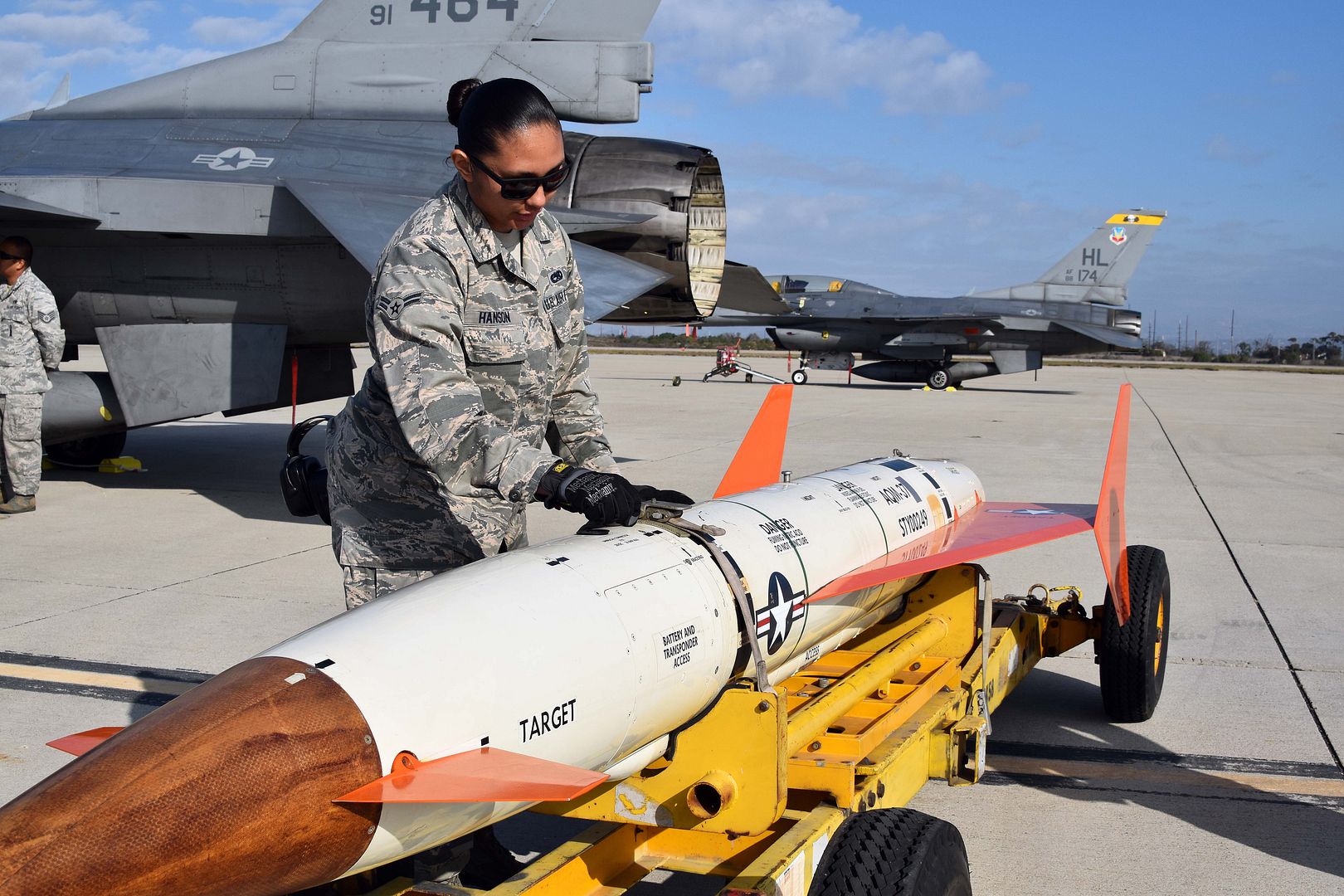
According to the RAN, the HMAS Hobart III is the country?s first Aegis Air Warfare destroyer, which was commissioned in September 2017. Hobart?s state-of-the-art Aegis combat system, including the phased array radar and missile systems, provides an advanced air defense system capable of engaging enemy aircraft and missiles at long ranges.
The participating F-16 pilots were Maj. Christopher Taylor of the 416th Flight Test Squadron and Maj. Jonathan Bearce, 461st Flight Test Squadron.
The 412th MXG team consisted of Chief Master Sgt. Thomas Rowe, Master Sgt. Jonathan Young, Tech. Sgt. Jose Arispe, Staff Sgt. Ernesto Sierra and Airman 1st Class Cierra-Mae Hanson.
? Kimberly E. Brown, Naval Air Warfare Center Weapons Division Public Affairs, and BU3 Dakota Fink contributed to this article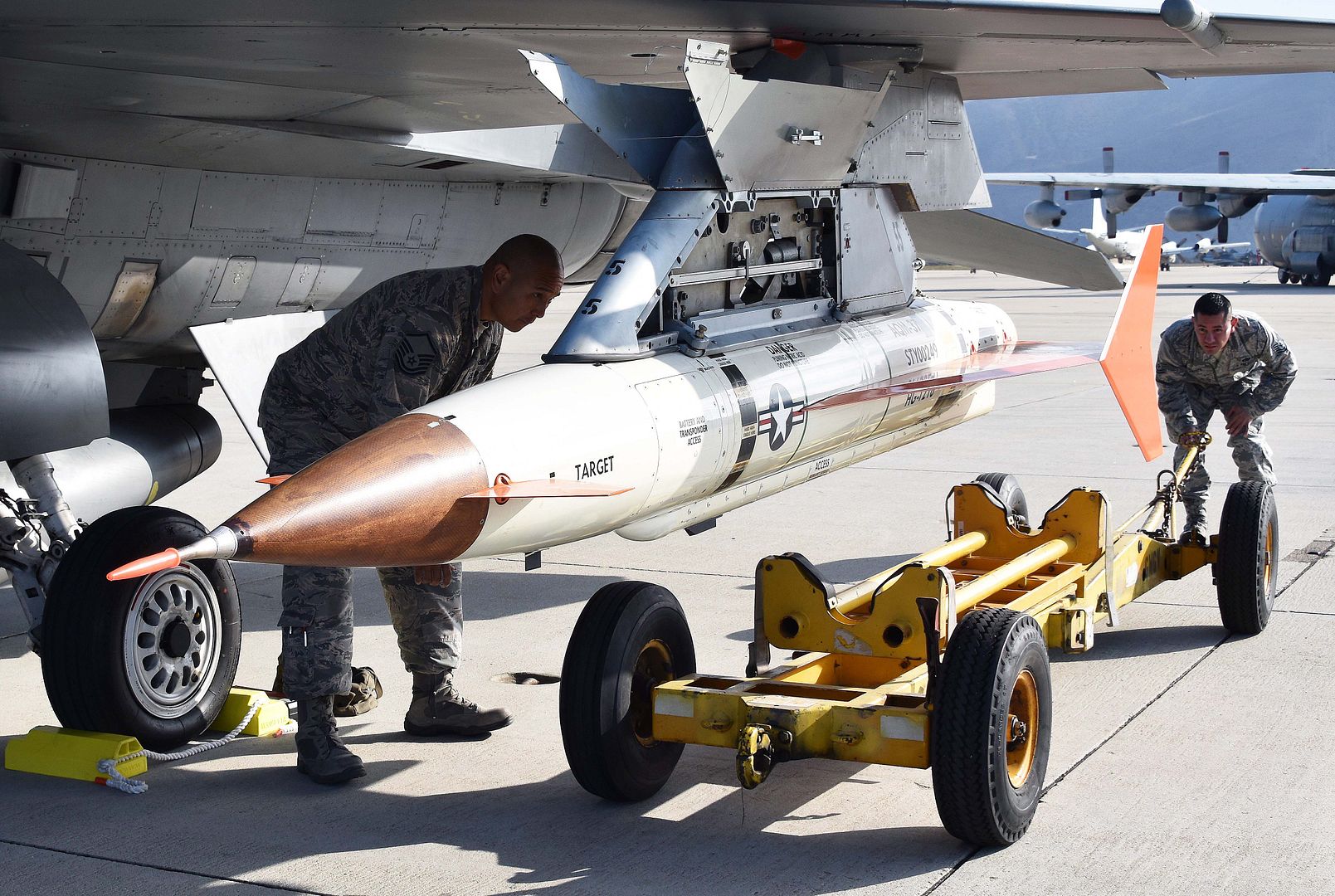
January 24, 2019 Montr?al Bombardier Inc., Press Release
Bombardier (TSX:BBD.B) today announced a definitive agreement to acquire the Global 7500 wing program from Triumph Group Inc. (NYSE: TGI). The acquisition will strengthen Bombardier?s position as a leading aerostructures manufacturer and secure the production ramp-up and long-term success of Bombardier?s flagship business jet.
The acquired operations will be incorporated into Bombardier?s Aerostructures and Engineering Services segment. To support a seamless transition of wing production and deliveries for the Global 7500 program, which successfully entered into service in December 2018, Bombardier will enter into a lease agreement for Triumph?s Red Oak, Texas, facility and continue to operate the production line with the employees currently supporting the program.
?This acquisition is a perfect strategic fit for Bombardier Aerostructures,? said Danny Di Perna, President, Bombardier Aerostructures and Engineering Services. ?It will allow us to bring our extensive technical expertise to one of the industry?s biggest growth programs, while solidifying our position as a leading wing provider. We look forward to welcoming the Triumph employees to Bombardier and ensuring the success of the Global 7500 program.?
The acquisition of the program?s assets and obligations for a nominal cash consideration is expected to close in the first quarter of 2019, subject to certain closing conditions. Bombardier will assume ongoing working capital investments and usual costs associated with the program?s production ramp-up, which are expected to fall within Bombardier?s consolidated 2019 EBIT before special items and free cash flow guidance ranges, and 2020 objectives.
On a business segment level, Aerostructures revenue guidance for 2019 is adjusted upwards to between $2.25 billion to $2.50 billion, reflecting additional intersegment revenues. The segment?s 2019 EBIT margin before special items(1) guidance is also adjusted to approximately 7.5%, reflecting marginal earnings from these additional sales during the program ramp-up. For 2020, the EBIT margin before special items objective of 9% to 11% remains unchanged.
At Business Aircraft, the 2019 EBIT margin before special items guidance of approximately 7.5% remains unchanged. For 2020, Business Aircraft now targets 50 basis points of margin growth to approximately 8%, the low-end of the previously provided objective, reflecting the short-term impact of maturing the Global 7500 wing production process.
The Global 7500 aircraft offers Bombardier?s signature smooth ride and a spaciousness that is unique among business jets. With its award-winning bespoke interior featuring a full-size kitchen and four true living spaces, the Global 7500 aircraft offers the ultimate in-flight experience. Setting the benchmark for the most exceptional cabin interior, the Global 7500 aircraft offers the most innovative features such as Bombardier?s patented Nuage seat, meticulously designed for maximum comfort and the revolutionary nice Touch cabin management system (CMS), a new way to connect with the Global 7500 aircraft cabin through the Bombardier Touch dial, featuring business aviation?s first application of an OLED display.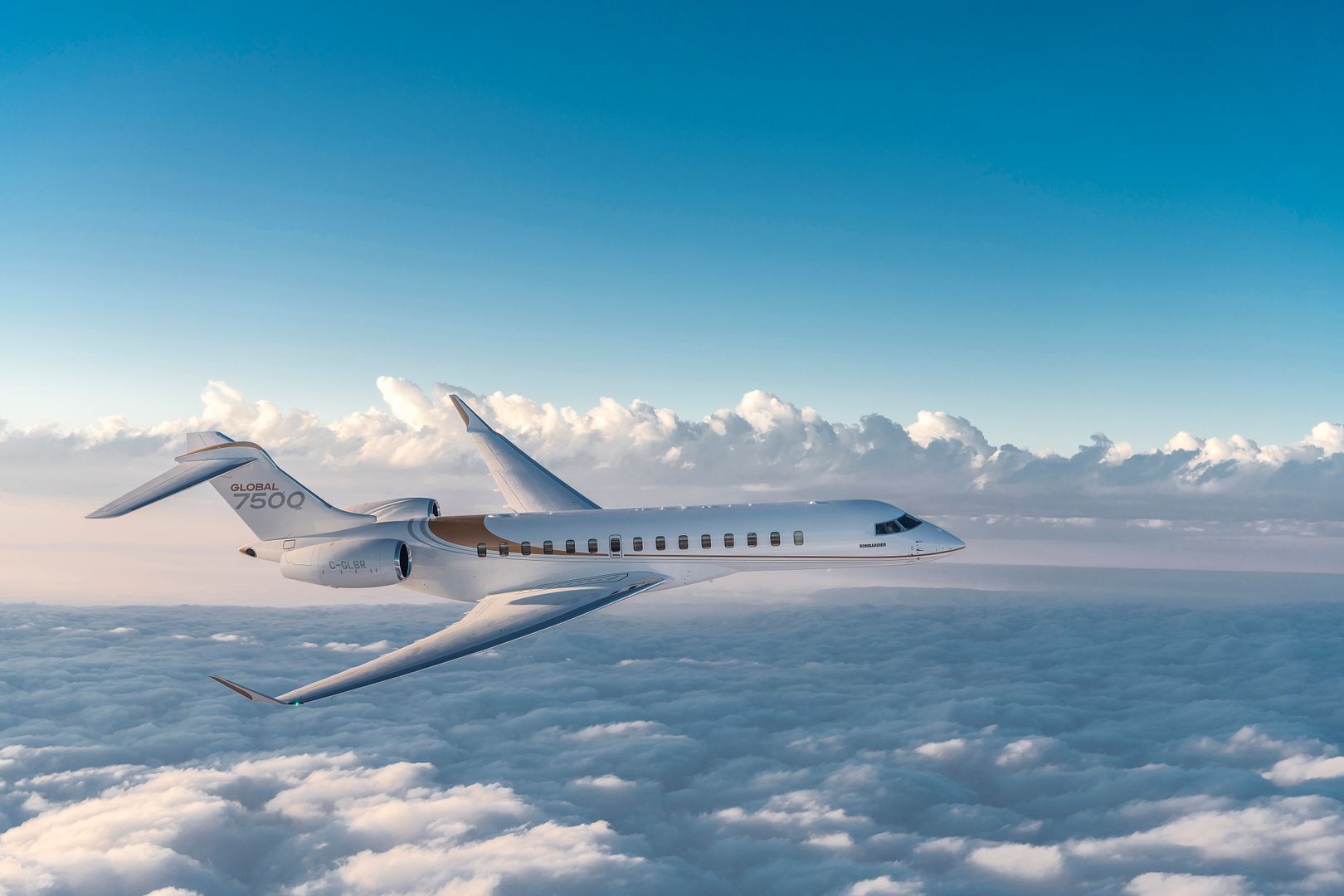
News Article / January 24, 2019
After six months away on Operation Reassurance, 21 members of the Royal Canadian Air Force?? who deployed as the first Helicopter Air Detachment (HELAIRDET) to operate and maintain a CH-148 Cyclone during deployed operations returned to Halifax, Nova Scotia, on January 21, 2019.
Last July, the CH-148 Cyclone from 12 Wing Shearwater, Nova Scotia, embarked in HMCS Ville de Qu?bec along with the ship?s HELAIRDET. The detachment comprised eight aircrew, one mission support member, and 12 technicians from the aviation systems, avionics systems, aircraft structures, and air weapons trades.
HMCS Ville de Qu?bec?s embarked Cyclone flew more than 500 hours, and 170 missions that included surveillance and maritime security patrols, anti-submarine and anti-surface warfare sorties, passenger and cargo transfers, and general-purpose machine gun firing proficiency, as well as training for the HELAIRDET and for various teams from across many of the ship?s departments.
?This first operational deployment of the Cyclone has been a great experience for the members of the HELAIRDET and myself, as we have all been involved in the Cyclone project for many years,? says Major Erik Weigelin, the ship?s HELAIRDET commander. ?The Maritime Helicopter community has long been waiting to finally see the Sea King replacement in action. The Cyclone has performed beyond our expectations for a first deployment, and that success is a direct result of the motivation and dedication of the members of the detachment. To be the ones who deliver the new ?Wings for the Fleet? was a great honour.?
Operation Reassurance is Canada?s contribution to NATO?s assurance and deterrence measures in Central and Eastern Europe. HMCS Ville de Qu?bec, the HELAIRDET, and CH-148 Cyclone (call sign ?Avalanche?) were assigned to Standing NATO Maritime Group 2. In October, they participated in Exercise Trident Juncture, which provided the opportunity to work and train with naval ships, submarines, helicopters, and fixed-wing aircraft from Canada, Norway, Spain, Japan, the United States, and the Netherlands.
?To achieve this level of success and interoperability with our Allies on the first operational deployment of the CH-148 Cyclone is outstanding, and reflects the collective results of years of hard work,? says Lieutenant-Colonel Cory Kwasny, 423 Maritime Helicopter Squadron?s commanding officer. ?The detachment set a strong foundation for 12 Wing to build upon as we continue to develop the capacity of the aircraft and, more importantly, has shown us that the future of maritime helicopter aviation in Canada is looking great.?
This deployment was a collection of firsts for the Cyclone. For example, the HELAIRDET?s technicians carried out the first-ever 400-hour inspection. This would have been impressive if they had conducted the inspection while operating at their home base. But these technicians were also faced with the unique challenges associated with operating in the constrained environment of the hangar of a warship at sea.
?It has been an incredible and rewarding opportunity to share the experience of the first CH-148 deployment during Operation Reassurance,? says Master Warrant Officer Shane Ringer, the HELAIRDET?s maintenance crew chief. ?I am very proud of what the HELAIRDET has achieved specifically, ensuring that the CH-148 capability was readily available to Ville de Qu?bec Command, and that the Cyclone program as a whole will benefit from our experiences.
The HELAIRDET and its close working relationship with 12 Wing, the weapons system manager, the in-service support contractors, and Sikorsky personnel have proven that hard work, dedication, and determination enable extraordinary accomplishments.?
From the Royal Canadian Air Force.
Post a reply
- Go to Previous topic
- Go to Next topic
- Go to Welcome
- Go to Introduce Yourself
- Go to General Discussion
- Go to Screenshots, Images and Videos
- Go to Off topic
- Go to Works in Progress
- Go to Skinning Tips / Tutorials
- Go to Skin Requests
- Go to IJAAF Library
- Go to Luftwaffe Library
- Go to RAF Library
- Go to USAAF / USN Library
- Go to Misc Library
- Go to The Ops Room
- Go to Made in Germany
- Go to Campaigns and Missions
- Go to Works in Progress
- Go to Juri's Air-Raid Shelter
- Go to Campaigns and Missions
- Go to Works in Progress
- Go to Skinpacks
- Go to External Projects Discussion
- Go to Books & Resources
